WEEK TOPIC
1. Revision
2. The Skeletal System and Movement (human)
- Main bones of the skeletal system e.g. skull, humerus
- Major functions of the skeletal system, movement, protection, support etc.
- Importance of movement to human beings.
- Posture - meaning and definition.
3. Posture (Contd)
- The muscular system (human)
- Muscles and joint: muscles, joints and movement.
- Body movement as machine.
4. The digestive system (human)
- Parts of the digestive system from mouth to anus.
- Digestion at various points - mouth, stomach, intestine.
- Enzymes as catalysts that aid digestion (digestive juice)
- End products of digestion
- Absorption and storage of food.
- Simple food tests, excretion and digestion differentiated.
5. The respiratory system (human)
- Meaning and definition of respiration
- Respiration as a release of energy.
- Mechanism of respiration and parts involved.
- Breathing and effects of outside pressure.
- Respiratory terms: inspiration, expiration inhaled air and exhaled air, ventilation, suffocation etc.
- Breathing problems asthma, hay fever, SARS, (severe acute respiratory syndrome) silicosis.
6. The Circulatory System (human)
- Components of blood and their functions (Red blood cell, white blood cell, platelets and plasma (blood groups)
- Blood vessels (arteries, veins, and capillaries)
- The heart (structure and function)
- Blood defects and diseases (e.g. leukemia, sickle cell anaemia etc.)
- Importance of blood tests & blood groupings e.g. HIV/AIDS cell anemia
7. The Excretory System (human)
- Meaning and definition of excretion
- Excretory organs and their functions e.g. kidney, skin and lungs.
- The process of excretion.
- Waste materials of excretion e.g. carbon (iv) oxide, sweat and urine.
- Need for excretion.
8. Human Growth and Development (1)
- Meaning and definition of growth and development.
- Changes in height, weight & size, infancy to adulthood.
- Factors affecting growth and development (e.g. food, love and care, health care, heredity, exercise and rest)
- Things that affect growth - disease and glands.
9. Human Growth and Development (2)
- Handling pubertal changes in boys and girls e.g. cleanliness during puberty.
- Emotional development e.g. fear of isolation, stigmatization and peer pressure.
10. - Habitat definition.
- Living things
- Examples of habitat (aquatic & terrestrial) land, water and air.
- Adaptations of living things to their habitat.
11. Change - in-matters. Types (Temporary & Permanent)
- Characteristics of temporary and permanent changes with examples.
- Cause of changes in matter - heat, chemical reaction etc.
12. Revision
NEW
SCHEME OF WORK
WEEK TOPICS
1. Revision/ family health ( diseases)
2. Family health (cont’d)
3. Consequences of Contracting diseases on: Family, Individual and Society.
4. Environmental pollution( water)
5. Environmental pollution( air)
6. Soil pollution
7. Drug abuse ii
8. Living things ( habitat)
9. Uniqueness of man
10. Changes in matter
11. Revision.
1ST TERM
WEEK 1
LESSON 1
TOPIC: THE SKELETAL SYSTEM
OBJECTIVE: At the end of the lesson, the students should be able to:
1. Define system.
2. Define skeleton.
3. Mention the main bones of the skeletal system.
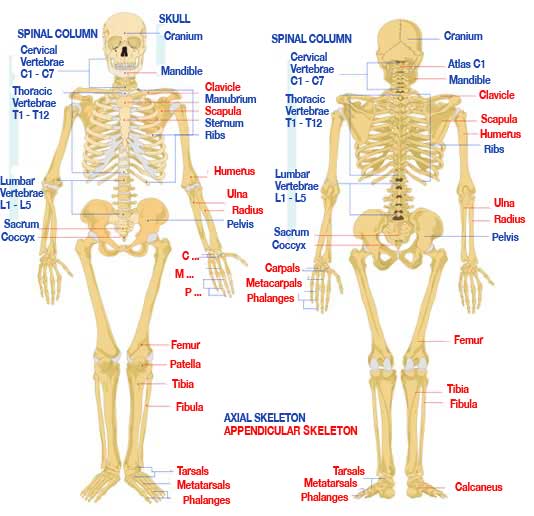

CONTENT:
The skeleton is a framework of bones in our body. A system is a unit of living or non living things that has different parts which work together to perform a given function. The human body is made up of different systems and each system is made up of different organs.
The skeleton is the hard part of the body and there are 2 types of skeletal system :
(1) Exoskeletal system
(2) Endoskeletal system
MAIN BONES OF THE SKELETAL SYSTEM
The main bones of the skeletal system are:
1. Cranium (skull)
2. Orbit (eye)
3. Jaw bone
4. Cervical vertebra (neck bone)
5. Vertebral column
6. Scapula (shoulder blade)
7. Clavicle (collar bone)
8. Sternum (breast bone)
9. Ribs
10. Thoracic vertebra
11. Humerus (upper arm bone)
12. Radius and ulna (lower arm bone)
13. Carpals (wrist bone)
14. Phalanges (finger bones)
15. Femur (thigh bone)
16. Tibia and fibula (leg bones)
17. Patella (knee bone)
18. Tarsals (ankle bone)
19. Phalanges (toe bones)
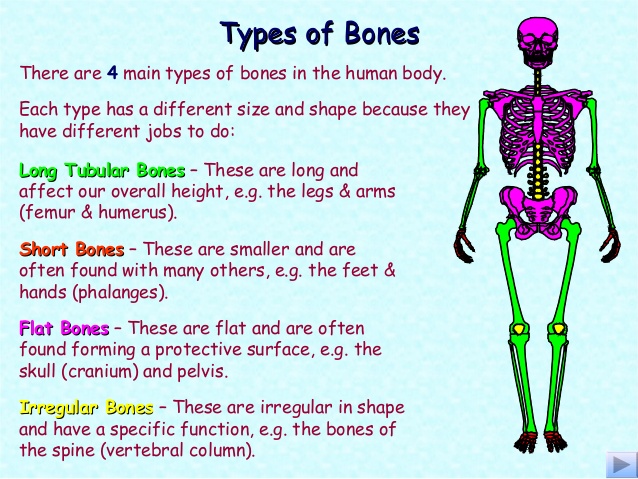
EVALUATION:
What is system?
What is skeleton?
What are the main bones of the skeletal system?
ASSIGNMENT:
Draw and fully label the human skeleton.
https://youtu.be/J8x6tZI2hVI
LESSON 2
TOPIC: MAJOR FUNCTIONS OF THE SKELETAL SYSTEM
OBJECTIVE: At the end of the lesson, the students should be able to:
1. Enumerate the major functions of the skeletal system.
2. Mention the importance of movement to human beings.
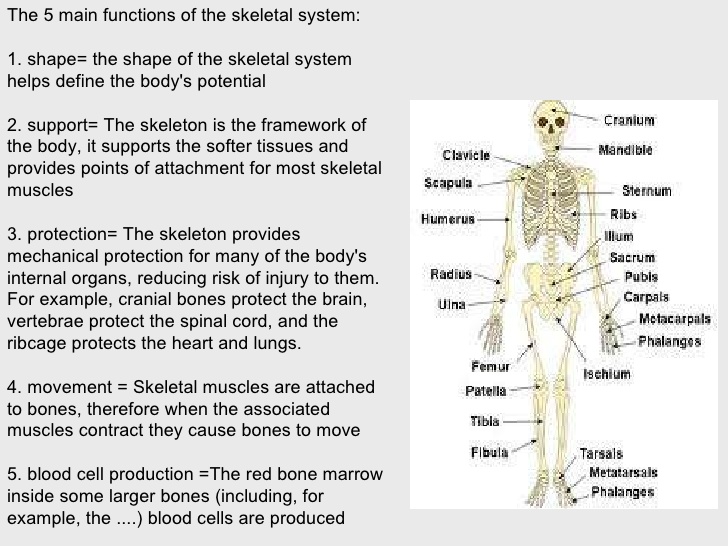
CONTENT:
The functions performed by the skeletal system in the body are as follows:
1. It allows for movement.
2. It gives shape and beauty to the body.
3. It protects the inner delicate organs of the body.
4. The skeleton gives rigidity and support the body.
5. The skeleton allows for muscle attachment.
6. The bones of the skeleton produce cells to build the blood.
7. Some of the bones act as levers for living and for carrying load.

IMPORTANCE OF MOVEMENT TO HUMAN BEINGS
Human beings move in order to:
1. Obtain their food.
2. Go to work and earn a living.
3. Keep themselves and their surroundings clean.
4. Exercise.
5. Attend social functions.
6. Find warmth and comfort.
7. Find shelter and safety.
8. Find sexual partner.
watch video
https://youtu.be/TnY6l9hMOew
EVALUATION:
What are the major functions of the skeletal system?
What are the importance of movement to human beings.
ASSIGNMENT:
State 3 types of bone fracture.
Who is a cripple and why are they so?
Further Studies
practice test
http://www.softschools.com/quizzes/scie ... iz854.html
http://www.syvum.com/cgi/online/mult.cg ... on_1.tdf?0
http://www.syvum.com/cgi/online/fillin. ... on_3.tdf?0
LESSON 3
TOPIC: POSTURE
OBJECTIVE: At the end of the lesson, the students should be able to:
1. Define posture.
2. Mention major weight centres.
3. Enumerate types of posture.
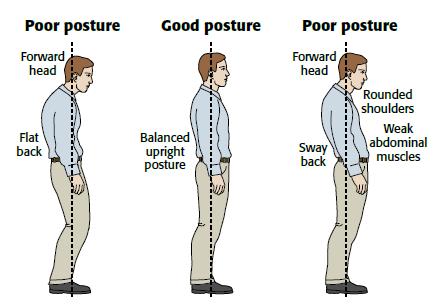
CONTENT:
Posture means keeping the natural balance of the body aligned. It is the way the body parts are held up or carried when you walk, stand, sit or work.
A good posture can be developed by any healthy person. It requires determination and practice. Good posture involves keeping the major centres (i.e. head, chest and waist or pelvis) aligned and balanced on each other, whether you are sitting, standing or walking. When an imbalance occur, poor posture results.
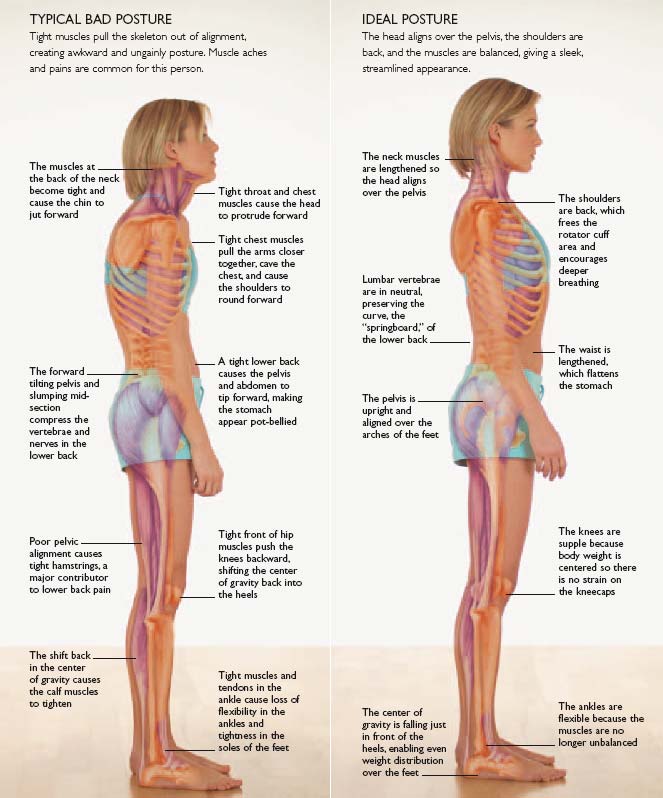
TYPES OF POSTURE
1. Sitting posture

2. Standing posture
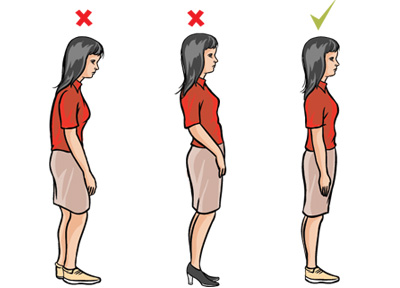
3. Walking posture

4. Reading posture
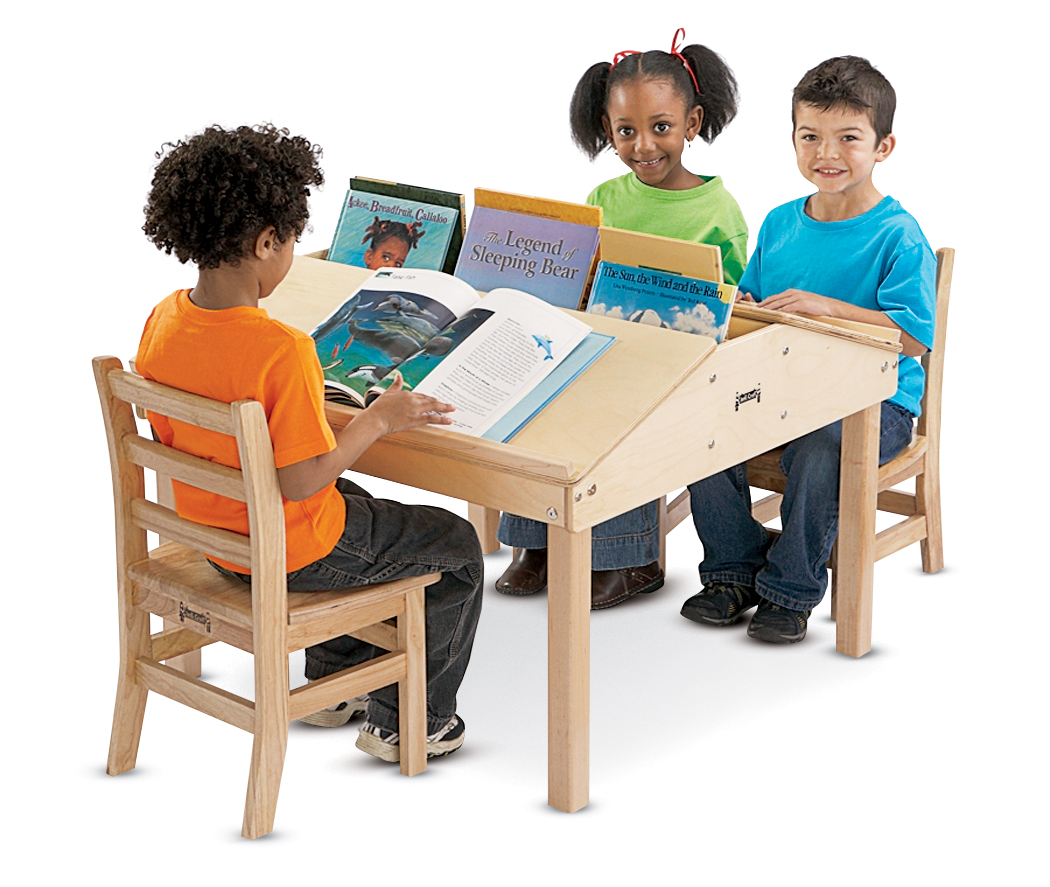

5. Ironing posture
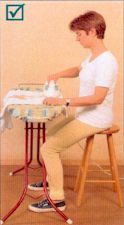

EVALUATION:
What is posture?
What are the major weight centres?
What are the types of posture?
ASSIGNMENT:
State four important points for achieving good walking postures.
further studies
http://www.livestrong.com/article/75735 ... n-posture/
LESSON 4
Topic: FAMILY HEALTH (I)
Content: 1 Definition of terms
2 Types of diseases
3 Causes of diseases
4 Mode of transfer/ transmission
DEFINITION OF TERMS
1. HEALTH : It is a condition whereby the body has all that it requires and is being kept in a way that it can grow and function well.
2. FAMILY HEALTH: This is a condition whereby the whole family ( i.e every member of a particular family) has all that is required and is being kept in a way that it can grow and function well.
3. DISEASE: Is the disruption of normal body functions, which may alter normal work and social activities.
4. COMMUNICABLE DISEASES: These are diseases that can be passed from one person to another, e.g measles, chickenpox, tuberculosis (TB), etc.

Child suffering from chicken-pox
5. NON-COMMUNICABLES DISEASES: These are diseases that CANNOT be passed from person to person but are linked with nutrition or inherited, e.g kwashiorkor, cancer, ulcer, etc.

Skin Cancer

Child suffering from kwashiorkor
TYPES OF DISEASES
There are many types of diseases .Most are caused due to carelessness and others inherited. Disease can either be communicable or non- communicable. These diseases include the following
i. Kwashiorkor
ii. Malaria
iii. Sleeping sickness
iv. Cholera
v. Tuberculosis (TB)
vi. Measles
vii. Heart and Respiratory disease
viii. Mental diseases
ix. High Blood Pressure(HBP)
x. Diabetes, etc.
EVALUATION
1. Explain these terms
i. Health
ii. Disease
2. State eight (8) types of diseases
LESSON 5
CAUSES OF DISEASES
When a person falls ill, he or she must have been infected with organisms such as bacteria, virus, protozoa or fungi that cause diseases. The following are causes of diseases.
1. Food Deficiency
a. Lack of protein
b. Lack of vitamins
c. Lack of iodine
2. Microbes- Malaria, Tuberculosis, Leprosy, Polio, Cholera
3. Hereditary- Sickle-cell anaemia, Colour blindness, etc
4. Smoking- Heart and Respiratory Disease
5. Drug Abuse- Mental illness
6. Stress, Lack of rest- High blood pressure
7. Allergies
8. Occupational disease
MODE OF TRANSFER / TRANSMISSION OF DISEASES
The organisms which cause disease are called PATHOGENS. There are different means by which germs that cause diseases are transmitted from person to person. The different modes of transmission of diseases are as follows
1. BY DIRECT CONTACT WITH A SUFFERER: Examples of diseases that are transmitted through direct contact are scabies, measles, small-pox, sexually transmitted diseases such as HIV/AIDS and gonorrhea.
2. BY INDIRECT MEANS: This may occur through
i. Contaminated water e.g. cholera, dysentery and typhoid
ii. Contaminated food e.g. food poisoning, cholera and dysentery
iii. The air. When a person suffering from cough sneezes or coughs, numerous droplets of sputum containing disease-causing organisms are discharged into the air. A healthy person may breathe in the droplets and become infected.
iv. Vectors: Vectors are small organisms ( e.g. insects) that transmit disease- causing organisms from one individual to another. Vectors does not suffer from the disease it transmits e.g. Female Anopheles Mosquito

Female Anopheles Mosquito
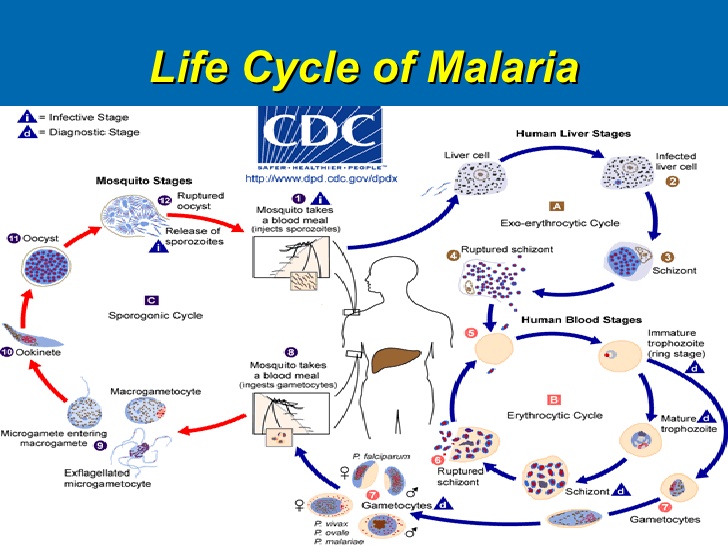
Life cycle of malaria parasite
EVALUATION
1. List five causes of diseases
2. Identify the mode of transmission of diseases
ASSIGNMENT
1. In a tabular form, highlight sources and accompanying diseases of pathogens.
2. Define vectors
PRE-READING ASSIGNMENT
Nigerian Basic Science Project (STAN) BK2 Pages 1-2.
TOPIC: THE SKELETAL SYSTEM
OBJECTIVE: At the end of the lesson, the students should be able to:
1. Define system.
2. Define skeleton.
3. Mention the main bones of the skeletal system.


CONTENT:
The skeleton is a framework of bones in our body. A system is a unit of living or non living things that has different parts which work together to perform a given function. The human body is made up of different systems and each system is made up of different organs.
The skeleton is the hard part of the body and there are 2 types of skeletal system :
(1) Exoskeletal system
(2) Endoskeletal system
MAIN BONES OF THE SKELETAL SYSTEM
The main bones of the skeletal system are:
1. Cranium (skull)
2. Orbit (eye)
3. Jaw bone
4. Cervical vertebra (neck bone)
5. Vertebral column
6. Scapula (shoulder blade)
7. Clavicle (collar bone)
8. Sternum (breast bone)
9. Ribs
10. Thoracic vertebra
11. Humerus (upper arm bone)
12. Radius and ulna (lower arm bone)
13. Carpals (wrist bone)
14. Phalanges (finger bones)
15. Femur (thigh bone)
16. Tibia and fibula (leg bones)
17. Patella (knee bone)
18. Tarsals (ankle bone)
19. Phalanges (toe bones)

EVALUATION:
What is system?
What is skeleton?
What are the main bones of the skeletal system?
ASSIGNMENT:
Draw and fully label the human skeleton.
https://youtu.be/J8x6tZI2hVI
LESSON 2
TOPIC: MAJOR FUNCTIONS OF THE SKELETAL SYSTEM
OBJECTIVE: At the end of the lesson, the students should be able to:
1. Enumerate the major functions of the skeletal system.
2. Mention the importance of movement to human beings.

CONTENT:
The functions performed by the skeletal system in the body are as follows:
1. It allows for movement.
2. It gives shape and beauty to the body.
3. It protects the inner delicate organs of the body.
4. The skeleton gives rigidity and support the body.
5. The skeleton allows for muscle attachment.
6. The bones of the skeleton produce cells to build the blood.
7. Some of the bones act as levers for living and for carrying load.

IMPORTANCE OF MOVEMENT TO HUMAN BEINGS
Human beings move in order to:
1. Obtain their food.
2. Go to work and earn a living.
3. Keep themselves and their surroundings clean.
4. Exercise.
5. Attend social functions.
6. Find warmth and comfort.
7. Find shelter and safety.
8. Find sexual partner.
watch video
https://youtu.be/TnY6l9hMOew
EVALUATION:
What are the major functions of the skeletal system?
What are the importance of movement to human beings.
ASSIGNMENT:
State 3 types of bone fracture.
Who is a cripple and why are they so?
Further Studies
practice test
http://www.softschools.com/quizzes/scie ... iz854.html
http://www.syvum.com/cgi/online/mult.cg ... on_1.tdf?0
http://www.syvum.com/cgi/online/fillin. ... on_3.tdf?0
LESSON 3
TOPIC: POSTURE
OBJECTIVE: At the end of the lesson, the students should be able to:
1. Define posture.
2. Mention major weight centres.
3. Enumerate types of posture.

CONTENT:
Posture means keeping the natural balance of the body aligned. It is the way the body parts are held up or carried when you walk, stand, sit or work.
A good posture can be developed by any healthy person. It requires determination and practice. Good posture involves keeping the major centres (i.e. head, chest and waist or pelvis) aligned and balanced on each other, whether you are sitting, standing or walking. When an imbalance occur, poor posture results.

TYPES OF POSTURE
1. Sitting posture

2. Standing posture

3. Walking posture

4. Reading posture


5. Ironing posture


EVALUATION:
What is posture?
What are the major weight centres?
What are the types of posture?
ASSIGNMENT:
State four important points for achieving good walking postures.
further studies
http://www.livestrong.com/article/75735 ... n-posture/
LESSON 4
Topic: FAMILY HEALTH (I)
Content: 1 Definition of terms
2 Types of diseases
3 Causes of diseases
4 Mode of transfer/ transmission
DEFINITION OF TERMS
1. HEALTH : It is a condition whereby the body has all that it requires and is being kept in a way that it can grow and function well.
2. FAMILY HEALTH: This is a condition whereby the whole family ( i.e every member of a particular family) has all that is required and is being kept in a way that it can grow and function well.
3. DISEASE: Is the disruption of normal body functions, which may alter normal work and social activities.
4. COMMUNICABLE DISEASES: These are diseases that can be passed from one person to another, e.g measles, chickenpox, tuberculosis (TB), etc.

Child suffering from chicken-pox
5. NON-COMMUNICABLES DISEASES: These are diseases that CANNOT be passed from person to person but are linked with nutrition or inherited, e.g kwashiorkor, cancer, ulcer, etc.

Skin Cancer

Child suffering from kwashiorkor
TYPES OF DISEASES
There are many types of diseases .Most are caused due to carelessness and others inherited. Disease can either be communicable or non- communicable. These diseases include the following
i. Kwashiorkor
ii. Malaria
iii. Sleeping sickness
iv. Cholera
v. Tuberculosis (TB)
vi. Measles
vii. Heart and Respiratory disease
viii. Mental diseases
ix. High Blood Pressure(HBP)
x. Diabetes, etc.
EVALUATION
1. Explain these terms
i. Health
ii. Disease
2. State eight (8) types of diseases
LESSON 5
CAUSES OF DISEASES
When a person falls ill, he or she must have been infected with organisms such as bacteria, virus, protozoa or fungi that cause diseases. The following are causes of diseases.
1. Food Deficiency
a. Lack of protein
b. Lack of vitamins
c. Lack of iodine
2. Microbes- Malaria, Tuberculosis, Leprosy, Polio, Cholera
3. Hereditary- Sickle-cell anaemia, Colour blindness, etc
4. Smoking- Heart and Respiratory Disease
5. Drug Abuse- Mental illness
6. Stress, Lack of rest- High blood pressure
7. Allergies
8. Occupational disease
MODE OF TRANSFER / TRANSMISSION OF DISEASES
The organisms which cause disease are called PATHOGENS. There are different means by which germs that cause diseases are transmitted from person to person. The different modes of transmission of diseases are as follows
1. BY DIRECT CONTACT WITH A SUFFERER: Examples of diseases that are transmitted through direct contact are scabies, measles, small-pox, sexually transmitted diseases such as HIV/AIDS and gonorrhea.
2. BY INDIRECT MEANS: This may occur through
i. Contaminated water e.g. cholera, dysentery and typhoid
ii. Contaminated food e.g. food poisoning, cholera and dysentery
iii. The air. When a person suffering from cough sneezes or coughs, numerous droplets of sputum containing disease-causing organisms are discharged into the air. A healthy person may breathe in the droplets and become infected.
iv. Vectors: Vectors are small organisms ( e.g. insects) that transmit disease- causing organisms from one individual to another. Vectors does not suffer from the disease it transmits e.g. Female Anopheles Mosquito

Female Anopheles Mosquito

Life cycle of malaria parasite
EVALUATION
1. List five causes of diseases
2. Identify the mode of transmission of diseases
ASSIGNMENT
1. In a tabular form, highlight sources and accompanying diseases of pathogens.
2. Define vectors
PRE-READING ASSIGNMENT
Nigerian Basic Science Project (STAN) BK2 Pages 1-2.
WEEK 2
LESSON 5
TOPIC: POSTURE (CONTD)
OBJECTIVE: At the end of the lesson, the students should be able to:
1. Mention the importance of good posture.
2. Enumerate the disadvantages of poor posture.
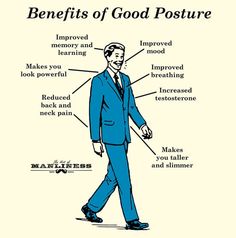
CONTENT:
IMPORTANCE OF GOOD POSTURE OR CARRIAGE
1. Good posture enhances appearance.
2. It helps different parts of the body to be supported by the right bones and muscles.
3. It gives the body a comfortable and relaxed feeling.
4. It affects the way your clothes fit you. Clothes fit better with good posture.
5. It promotes good health.
6. Good posture gives dignity, poise, self confidence and respect.
7. It can improve a person's movement and activities.
8. It prevents body pains.
9. Poor posture can also be considered a sign of poor nutrition.

DISADVANTAGES OF POOR POSTURE
Poor posture in sitting, standing or walking has the following disadvantages.
1. Muscles of the body do extra work in effort to keep the body balanced. This could be painful.
2. Some organs of the body may be thrown out of their natural position.
3. It can also affect the functioning of the body organs.
4. It causes waste of energy as muscles do extra work to keep body parts aligned.
5. It results in ill-fitted clothes.
6. It can make a body look sluggish.
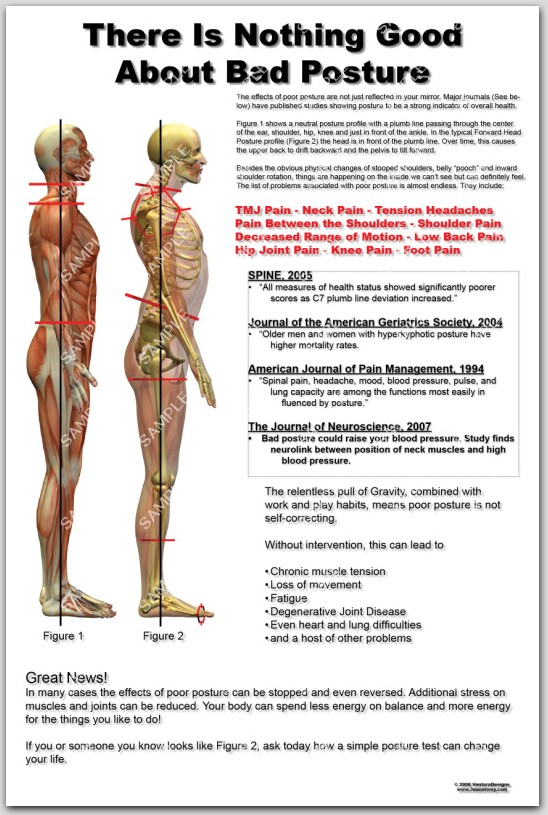
EVALUATION:
What is the importance of good posture?
What are the disadvantages of poor posture?
ASSIGNMENT:
Is cat walking good in the school environment? Discuss.
LESSON 6
TOPIC: POSTURE CONTD.
OBJECTIVE: At the end of the lesson, the students should be able to:
1. Mention the important steps to good sitting postures
2. Enumerate the important points for good standing posture.
CONTENT:
GOOD SITTING POSTURE
For good sitting posture, it is necessary to do the following:
1. Sit with the hips far back to the chair.
2. Hold the shoulder back without strain.
3. Tuck in the abdomen when sitting.
4. Support the back with the chair, do not lean forward.
5. Let the chair provide support for the hips and the lower back.
6. Keep the head erect and chest up.
7. Do not keep your legs wide apart when you sit. Keep them together or one slightly in front of the other.
8. Avoid very tight dresses because they can affect your posture.
9. Always use comfortable chair.
GOOD STANDING POSTURE
The following points are important for good sitting posture:
1. Always stand firmly in both feet so that both of them can carry your weight.
2. Do not place your weight on one leg.
3. Stand with the head up and chest out.
4. Tuck in your tummy or abdomen.
5. Straighten your shoulder, that is, hold it erect.
6. Avoid tight clothes e.g. tight girdles, ill fitting shoes. They prevent easy movement.
EVALUATION:
What are the important steps to good sitting posture?
What are the important points for good standing posture?
ASSIGNMENT:
Mention 3 don'ts of a good ironing posture.
further studies
http://www.spine-health.com/wellness/er ... ergonomics
http://www.spine-health.com/wellness/er ... -back-pain
LESSON 7
TOPIC: GOOD WALKING AND READING POSTURE
OBJECTIVE: At the end of the lesson, the students should be able to:
1. Mention the points to consider when walking.
2. Enumerate the steps to good reading posture.
CONTENT:
GOOD WALKING POSTURE
The following points are important for good walking posture:
1. Avoid ill-fitting shoes. They make walking uncomfortable.
2. Avoid very high-heeled shoes. They throw the body out of balance and can cause a sway-back and a fall.
3. When you walk, hold:
(a) The head up and chin up
(b) Shoulders back and chest out
(c) The tummy or abdomen tucked in.
4. Walk without twisting and bending the body. Walk tall.
5. Lift the feet up smartly. Do not drag your feet.
6. Avoid over weight. This is because your weight affects your posture. Adopt good feeding habits because your food affects your weight.
GOOD READING POSTURE
1. Use a good table and chair of comfortable height.
2. Let the chair provide support for your hips and lower back.
3. Do not bend too low towards the book.
4. Keep the legs under the table and the hands comfortably on the table.
EVALUATION:
What are the points to consider when walking?
What are the steps to good reading posture?
ASSIGNMENT:
Draw a girl or boy in good standing/sitting posture.
practice test
http://www.proprofs.com/quiz-school/sto ... dy-posture
LESSON 8
Topic: FAMILY HEALTH II
Content: 1 Definition and examples of disease- vectors
2 Ways of preventing diseases
3 Consequences of contracting diseases / infections
SUB- TOPIC 1: DEFINITION AND EXAMPLES OF VECTORS
Vectors are carriers of micro-organisms ( germs) that causes diseases . They are agents that pass pathogens from one organism to the other. Vectors are not affected by the diseases they carry. Examples of common vectors are mosquito, housefly, tsetse fly, bedbug, etc.
EXAMPLES OF VECTORS
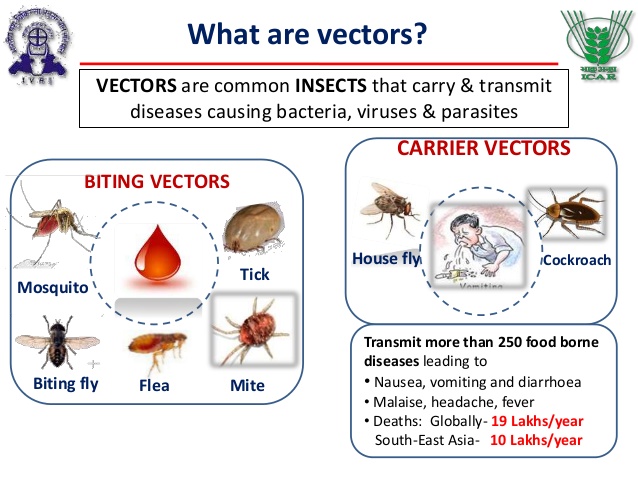
EVALUATION
1. Another name for disease-organism is _______
2. Define the term vector and give three examples of vectors.
LESSON 9
WAYS OF PREVENTING DISEASES
To prevent and control diseases is to effectively control the vectors. The various ways diseases can be controlled and prevented are as follows
1. Proper sanitation and ventilation
2. Proper health education
3. Knowledge of the history of the life cycle of the disease-causing micro-organism and control them
4. Immunization
5. Choice of life partner
6. Pre-marital medical screening
7. Treating people suffering from the diseases with appropriate medicines
8. Keeping fit and healthy through good hygiene and cleanliness
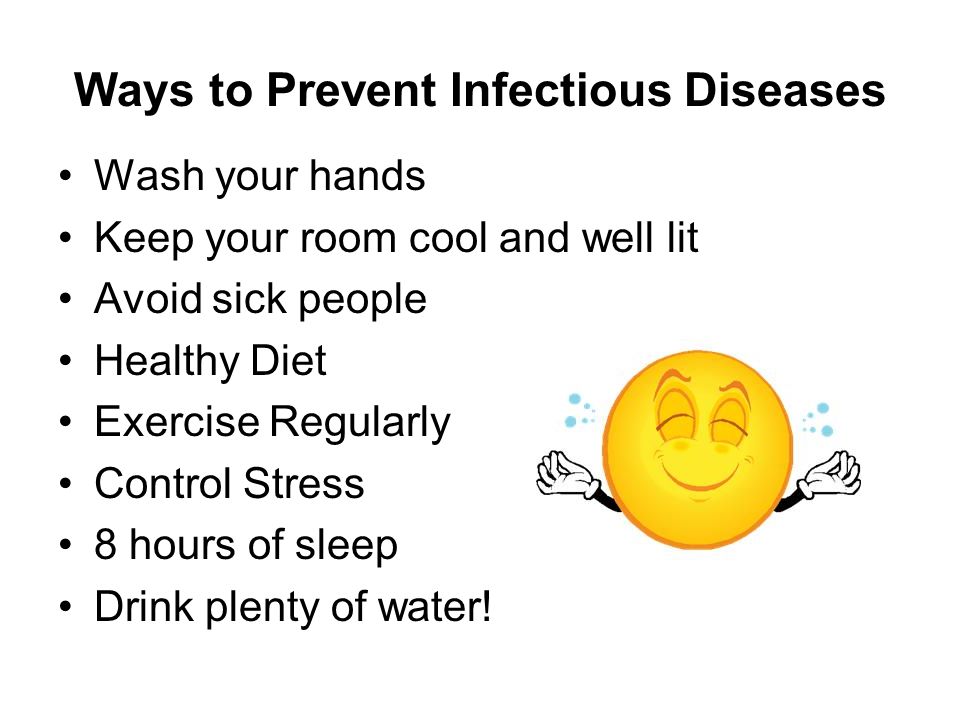
EVALUATION
State five ways of preventing or controlling disease
ASSIGNMENT
Discuss five ways of disease control and prevention
READING ASSIGNMENT
Nigerian Basic Science Project (STAN) BK2 Pages 3-4.
TOPIC: POSTURE (CONTD)
OBJECTIVE: At the end of the lesson, the students should be able to:
1. Mention the importance of good posture.
2. Enumerate the disadvantages of poor posture.

CONTENT:
IMPORTANCE OF GOOD POSTURE OR CARRIAGE
1. Good posture enhances appearance.
2. It helps different parts of the body to be supported by the right bones and muscles.
3. It gives the body a comfortable and relaxed feeling.
4. It affects the way your clothes fit you. Clothes fit better with good posture.
5. It promotes good health.
6. Good posture gives dignity, poise, self confidence and respect.
7. It can improve a person's movement and activities.
8. It prevents body pains.
9. Poor posture can also be considered a sign of poor nutrition.

DISADVANTAGES OF POOR POSTURE
Poor posture in sitting, standing or walking has the following disadvantages.
1. Muscles of the body do extra work in effort to keep the body balanced. This could be painful.
2. Some organs of the body may be thrown out of their natural position.
3. It can also affect the functioning of the body organs.
4. It causes waste of energy as muscles do extra work to keep body parts aligned.
5. It results in ill-fitted clothes.
6. It can make a body look sluggish.

EVALUATION:
What is the importance of good posture?
What are the disadvantages of poor posture?
ASSIGNMENT:
Is cat walking good in the school environment? Discuss.
LESSON 6
TOPIC: POSTURE CONTD.
OBJECTIVE: At the end of the lesson, the students should be able to:
1. Mention the important steps to good sitting postures
2. Enumerate the important points for good standing posture.
CONTENT:
GOOD SITTING POSTURE
For good sitting posture, it is necessary to do the following:
1. Sit with the hips far back to the chair.
2. Hold the shoulder back without strain.
3. Tuck in the abdomen when sitting.
4. Support the back with the chair, do not lean forward.
5. Let the chair provide support for the hips and the lower back.
6. Keep the head erect and chest up.
7. Do not keep your legs wide apart when you sit. Keep them together or one slightly in front of the other.
8. Avoid very tight dresses because they can affect your posture.
9. Always use comfortable chair.
GOOD STANDING POSTURE
The following points are important for good sitting posture:
1. Always stand firmly in both feet so that both of them can carry your weight.
2. Do not place your weight on one leg.
3. Stand with the head up and chest out.
4. Tuck in your tummy or abdomen.
5. Straighten your shoulder, that is, hold it erect.
6. Avoid tight clothes e.g. tight girdles, ill fitting shoes. They prevent easy movement.
EVALUATION:
What are the important steps to good sitting posture?
What are the important points for good standing posture?
ASSIGNMENT:
Mention 3 don'ts of a good ironing posture.
further studies
http://www.spine-health.com/wellness/er ... ergonomics
http://www.spine-health.com/wellness/er ... -back-pain
LESSON 7
TOPIC: GOOD WALKING AND READING POSTURE
OBJECTIVE: At the end of the lesson, the students should be able to:
1. Mention the points to consider when walking.
2. Enumerate the steps to good reading posture.
CONTENT:
GOOD WALKING POSTURE
The following points are important for good walking posture:
1. Avoid ill-fitting shoes. They make walking uncomfortable.
2. Avoid very high-heeled shoes. They throw the body out of balance and can cause a sway-back and a fall.
3. When you walk, hold:
(a) The head up and chin up
(b) Shoulders back and chest out
(c) The tummy or abdomen tucked in.
4. Walk without twisting and bending the body. Walk tall.
5. Lift the feet up smartly. Do not drag your feet.
6. Avoid over weight. This is because your weight affects your posture. Adopt good feeding habits because your food affects your weight.
GOOD READING POSTURE
1. Use a good table and chair of comfortable height.
2. Let the chair provide support for your hips and lower back.
3. Do not bend too low towards the book.
4. Keep the legs under the table and the hands comfortably on the table.
EVALUATION:
What are the points to consider when walking?
What are the steps to good reading posture?
ASSIGNMENT:
Draw a girl or boy in good standing/sitting posture.
practice test
http://www.proprofs.com/quiz-school/sto ... dy-posture
LESSON 8
Topic: FAMILY HEALTH II
Content: 1 Definition and examples of disease- vectors
2 Ways of preventing diseases
3 Consequences of contracting diseases / infections
SUB- TOPIC 1: DEFINITION AND EXAMPLES OF VECTORS
Vectors are carriers of micro-organisms ( germs) that causes diseases . They are agents that pass pathogens from one organism to the other. Vectors are not affected by the diseases they carry. Examples of common vectors are mosquito, housefly, tsetse fly, bedbug, etc.
EXAMPLES OF VECTORS

EVALUATION
1. Another name for disease-organism is _______
2. Define the term vector and give three examples of vectors.
LESSON 9
WAYS OF PREVENTING DISEASES
To prevent and control diseases is to effectively control the vectors. The various ways diseases can be controlled and prevented are as follows
1. Proper sanitation and ventilation
2. Proper health education
3. Knowledge of the history of the life cycle of the disease-causing micro-organism and control them
4. Immunization
5. Choice of life partner
6. Pre-marital medical screening
7. Treating people suffering from the diseases with appropriate medicines
8. Keeping fit and healthy through good hygiene and cleanliness

EVALUATION
State five ways of preventing or controlling disease
ASSIGNMENT
Discuss five ways of disease control and prevention
READING ASSIGNMENT
Nigerian Basic Science Project (STAN) BK2 Pages 3-4.
WEEK 3
LESSON 10
TOPIC: THE MUSCULAR SYSTEM
OBJECTIVE: At the end of the lesson, the students should be able to:
1. Define muscles.
2. Mention types of muscles.
3. Give examples of each type of muscle.
CONTENT:
Muscles are made up of some tiny cells which are held together by strands of connecting tissue. Most of the muscles of the body are attached to bones by means of TENDONS.
A tendon is an extension of the connective tissues of a muscle. They are stronger than the muscles, more difficult to cut through and are whitish in colour.
Muscles function by contracting (becoming shortened) and relaxing (becoming stretched). By so doing, they bring about movements in the skeleton of the body.

TYPES OF MUSCLES
1. Voluntary muscles:
These are muscles under our control. We relax or contract them when we wish to e.g. the pectoral muscles.

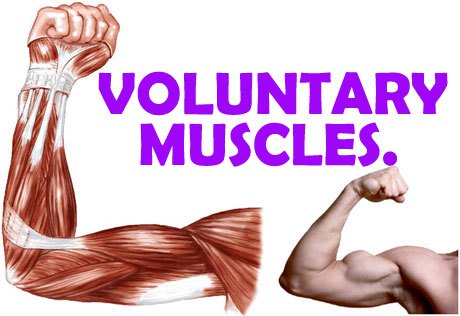
2. Involuntary Muscle:
Involuntary muscles move on their own without us being aware that they are moving e.g. the heart muscles, inter coastal muscles.
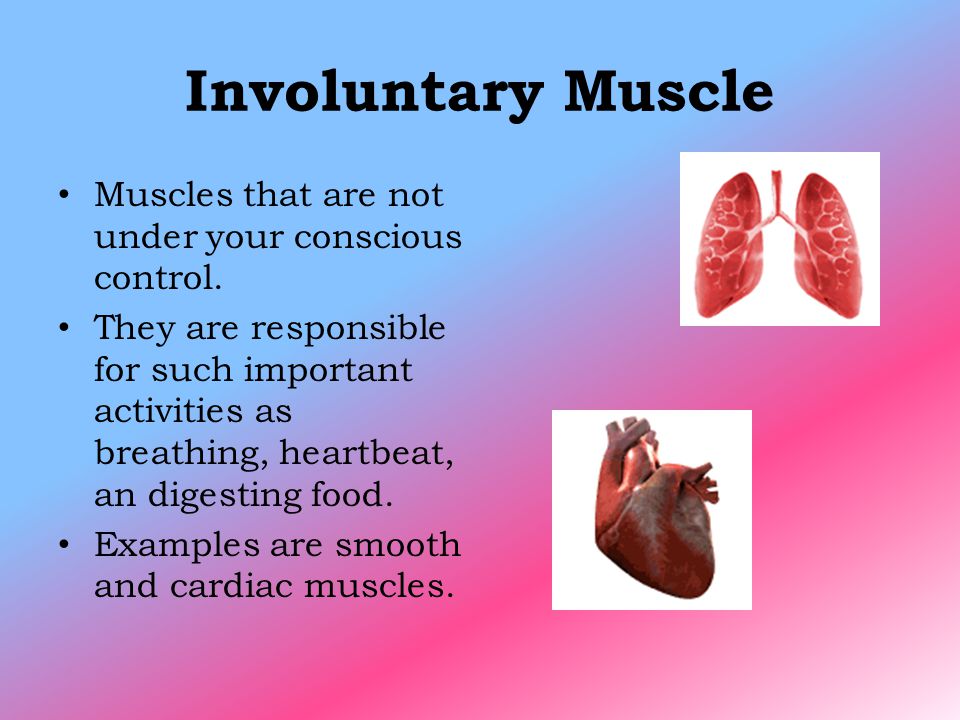
3. Antagonistic Muscles:
These are so called because when one of them contracts, the other relaxes at the same time to bring about the desired movement e.g. bicep muscle and tricep muscle in the forelimb.
For the muscles to be able to perform, they need much energy and strength. Regular exercising gives them the required strength and increases their size.

EVALUATION:
What are muscles?
What are the types of muscles?
What are the example(s) of each type of muscle?
ASSIGNMENT:
State 4 functions of a cartilage in a joint.
https://youtu.be/VVL-8zr2hk4
LESSON 11
TOPIC: JOINTS
OBJECTIVE: At the end of the lesson, the students should be able to:
1. Define a joint.
2. Mention the types of joints.
3. Give example(s) of each type of joint.
CONTENT:
Movement in the bodies of humans is made possible by the joints in the body. The point where two bones meet is called a joint.
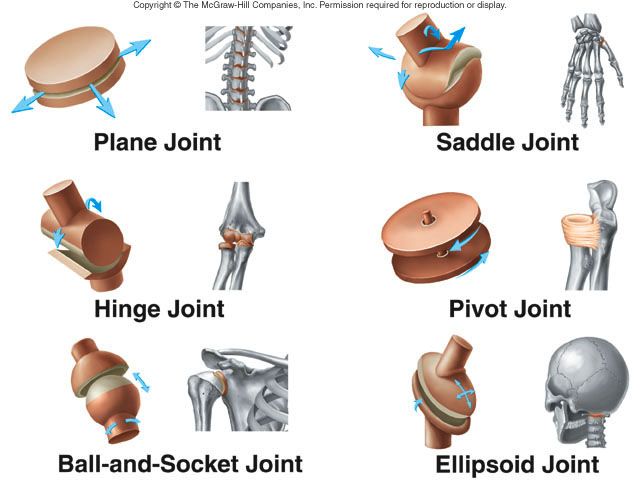
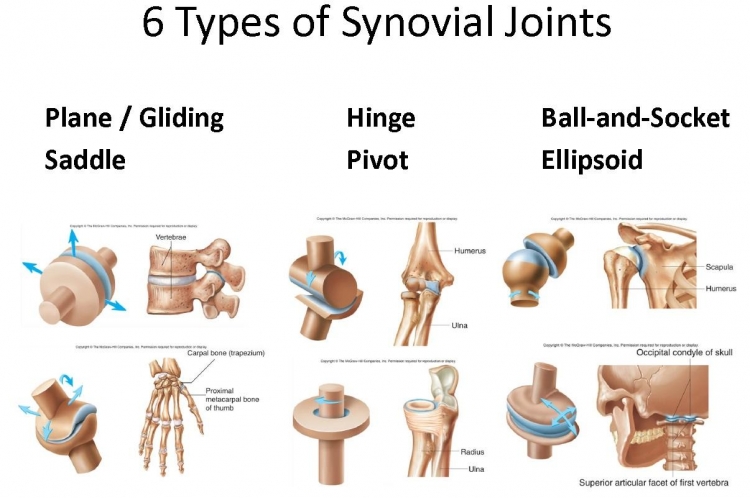
TYPES OF JOINTS
1. The Immovable Joints:
These joints do not allow for movement. These are:
(a) Ball and socket joint:
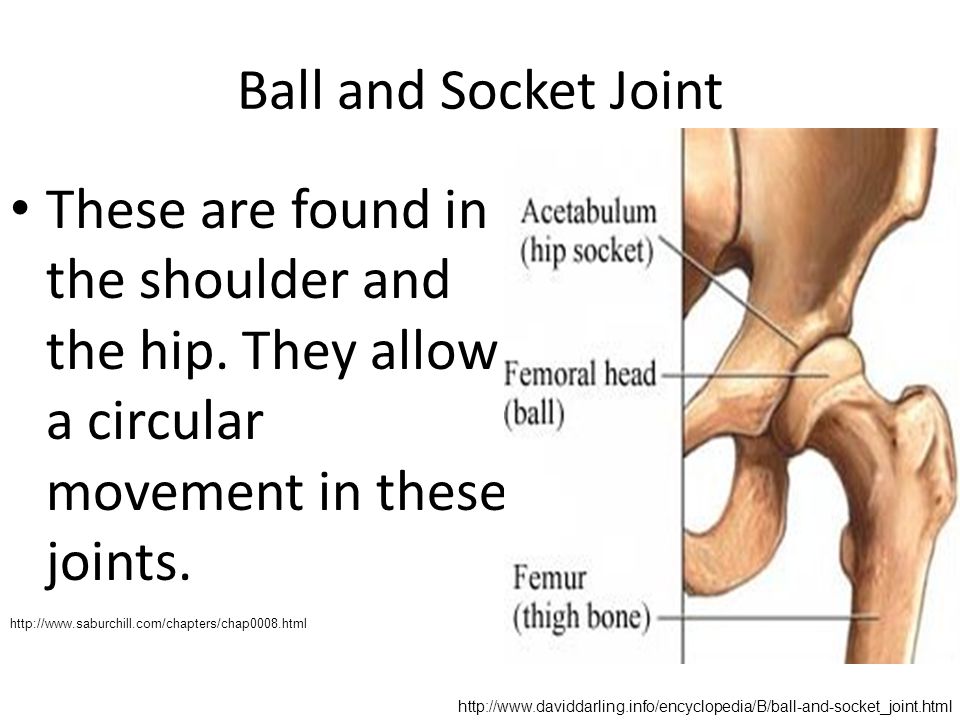
(b) Gliding joint:
These are found in the limbs. Ball and socket joints are in the shoulder and hip. They allow for movement in more than one plane.

2. The Moveable Joints:
(a) Hinge joint: this is a joint which allows for movement in only one plane/direction e.g. elbow joint.

Gliding joints allows the sliding, twisting or turning of one bone over another e.g. joints at the wrist.
EVALUATION:
What is a joint?
What are the types of joints?
What are the example(s) of each type of joint?
ASSIGNMENT:
State 3 types of bone fracture.
State the function of the synovial fluid.
watch video
https://youtu.be/VVL-8zr2hk4
LESSON 12
TOPIC: BODY MOVEMENT AS MACHINE
OBJECTIVE: At the end of the lesson, the students should be able to:
1. Describe the movement of the elbow.
2. State the functions of the parts of a joint
CONTENT:
Movement at the elbow is controlled by two antagonistic muscles, the bicep muscle and the tricep muscle.
To lift the lower forelimb, the bicep muscle contracts and the tricep muscle relaxes. To lower forelimb, the bicep muscle relaxes while the tricep muscle contracts.
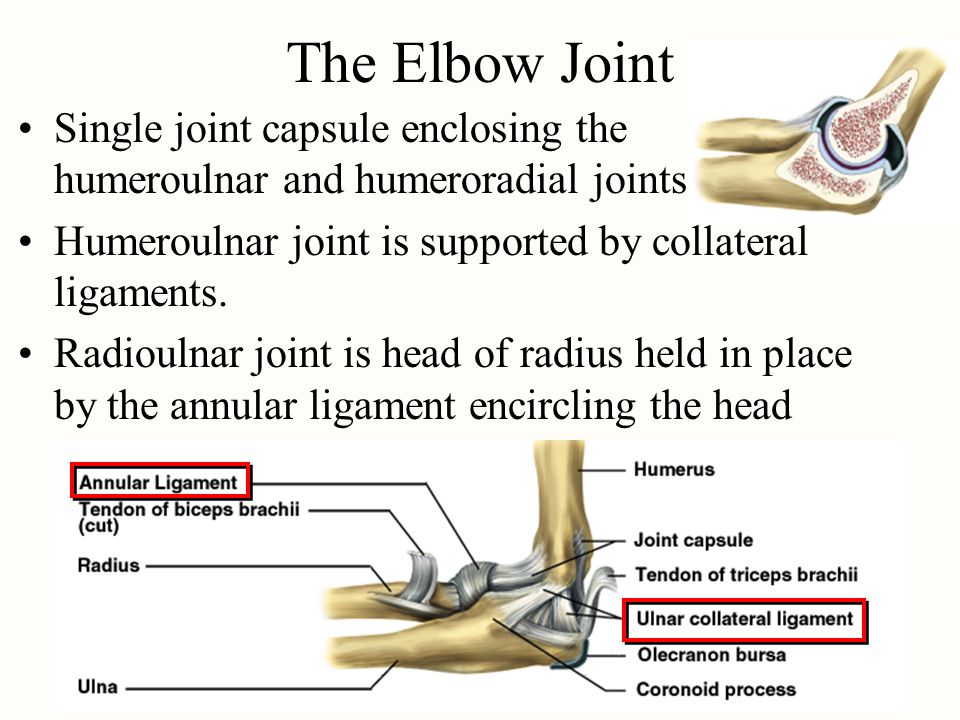
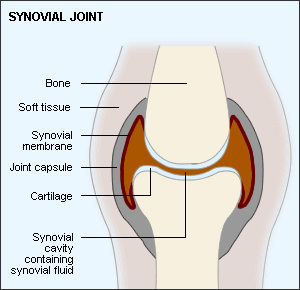
Parts of a joint Functions
Cartilage It serves as a shock absorber when the joint is under stress.
Synovial fluid - It lubricates the joint and allows for free movement.
Capsule - Wraps up and protects the inner delicate parts of the joint.
Ligament - Holds the joining bones in a ball and socket joint together.
Tendon - Holds the joining bones in a hinge joint together.

EVALUATION:
How is the movement at the elbow carried out?
What are the functions of the parts of a joint?
ASSIGNMENT:
What is a fracture?
What is a strain?
What is the treatment for strain?
practice test
http://www.proprofs.com/quiz-school/sto ... ure-joints
LESSON 13
Topic: CONSEQUENCES OF CONTRACTING DISEASES / INFECTIONS
Content: 1 consequences to individual
2 consequences to family
3 consequences to the society
Contraction of disease results in the person being in a state of ill-health or being described as sick. There are severe consequences on individual, family and the society in the following ways
CONSEQUENCES OF CONTRACTING DISEASES TO INDIVIDUAL
1. A sick person is always weak, sluggish and unhappy
2. The individual spends money which could have served other purposes on medicines
3. A sick person will not be able to play football with mates in school
4. Majorly a sick person will die if not taken care of properly
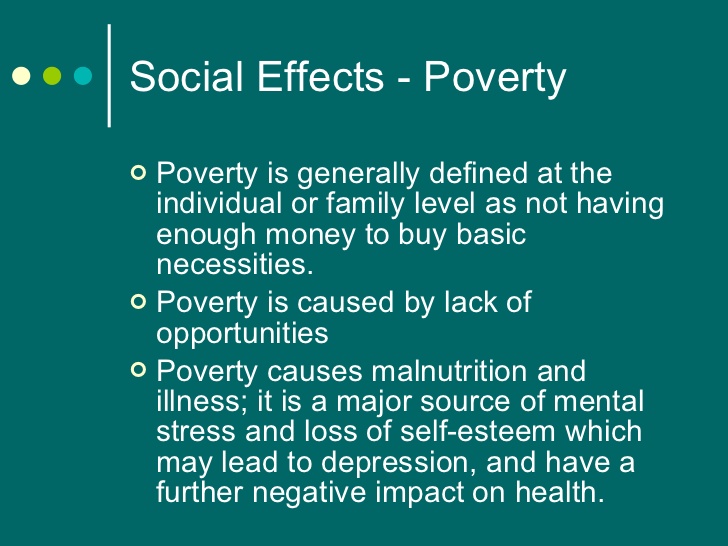
EVALUATION
1. When do you say a person has contracted a disease?
2. List three consequences of contracting disease to individual
CONSEQUENCES OF CONTRACTING DISEASES TO FAMILY
The family of the sick person feels and bears the impact of the sick individual in the following ways
1. Cost treatment maybe too much on the family which can cause distress and pain in the family
2. The economy contributions of the individual in the family will be less
3. The individual becomes less efficient and productive in the family
CONSEQUENCES OF CONTRACTING DISEASES TO THE SOCIETY
1. The government will spend more on health of the nation
2. The overall productivity of the society will reduced
3. The overall population of in the society will be reduced
EVALUATION
List two consequences of contracting disease to the family
How does contraction of diseases affect the society?
ASSIGNMENT
Define the following terms
1. Pollution
2. Pollutants
3. Water pollution
READING ASSIGNMENT
Nigerian Basic Science Project(STAN) BK2 Pages 5-7.
TOPIC: THE MUSCULAR SYSTEM
OBJECTIVE: At the end of the lesson, the students should be able to:
1. Define muscles.
2. Mention types of muscles.
3. Give examples of each type of muscle.
CONTENT:
Muscles are made up of some tiny cells which are held together by strands of connecting tissue. Most of the muscles of the body are attached to bones by means of TENDONS.
A tendon is an extension of the connective tissues of a muscle. They are stronger than the muscles, more difficult to cut through and are whitish in colour.
Muscles function by contracting (becoming shortened) and relaxing (becoming stretched). By so doing, they bring about movements in the skeleton of the body.

TYPES OF MUSCLES
1. Voluntary muscles:
These are muscles under our control. We relax or contract them when we wish to e.g. the pectoral muscles.


2. Involuntary Muscle:
Involuntary muscles move on their own without us being aware that they are moving e.g. the heart muscles, inter coastal muscles.

3. Antagonistic Muscles:
These are so called because when one of them contracts, the other relaxes at the same time to bring about the desired movement e.g. bicep muscle and tricep muscle in the forelimb.
For the muscles to be able to perform, they need much energy and strength. Regular exercising gives them the required strength and increases their size.

EVALUATION:
What are muscles?
What are the types of muscles?
What are the example(s) of each type of muscle?
ASSIGNMENT:
State 4 functions of a cartilage in a joint.
https://youtu.be/VVL-8zr2hk4
LESSON 11
TOPIC: JOINTS
OBJECTIVE: At the end of the lesson, the students should be able to:
1. Define a joint.
2. Mention the types of joints.
3. Give example(s) of each type of joint.
CONTENT:
Movement in the bodies of humans is made possible by the joints in the body. The point where two bones meet is called a joint.


TYPES OF JOINTS
1. The Immovable Joints:
These joints do not allow for movement. These are:
(a) Ball and socket joint:

(b) Gliding joint:
These are found in the limbs. Ball and socket joints are in the shoulder and hip. They allow for movement in more than one plane.

2. The Moveable Joints:
(a) Hinge joint: this is a joint which allows for movement in only one plane/direction e.g. elbow joint.

Gliding joints allows the sliding, twisting or turning of one bone over another e.g. joints at the wrist.
EVALUATION:
What is a joint?
What are the types of joints?
What are the example(s) of each type of joint?
ASSIGNMENT:
State 3 types of bone fracture.
State the function of the synovial fluid.
watch video
https://youtu.be/VVL-8zr2hk4
LESSON 12
TOPIC: BODY MOVEMENT AS MACHINE
OBJECTIVE: At the end of the lesson, the students should be able to:
1. Describe the movement of the elbow.
2. State the functions of the parts of a joint
CONTENT:
Movement at the elbow is controlled by two antagonistic muscles, the bicep muscle and the tricep muscle.
To lift the lower forelimb, the bicep muscle contracts and the tricep muscle relaxes. To lower forelimb, the bicep muscle relaxes while the tricep muscle contracts.


Parts of a joint Functions
Cartilage It serves as a shock absorber when the joint is under stress.
Synovial fluid - It lubricates the joint and allows for free movement.
Capsule - Wraps up and protects the inner delicate parts of the joint.
Ligament - Holds the joining bones in a ball and socket joint together.
Tendon - Holds the joining bones in a hinge joint together.

EVALUATION:
How is the movement at the elbow carried out?
What are the functions of the parts of a joint?
ASSIGNMENT:
What is a fracture?
What is a strain?
What is the treatment for strain?
practice test
http://www.proprofs.com/quiz-school/sto ... ure-joints
LESSON 13
Topic: CONSEQUENCES OF CONTRACTING DISEASES / INFECTIONS
Content: 1 consequences to individual
2 consequences to family
3 consequences to the society
Contraction of disease results in the person being in a state of ill-health or being described as sick. There are severe consequences on individual, family and the society in the following ways
CONSEQUENCES OF CONTRACTING DISEASES TO INDIVIDUAL
1. A sick person is always weak, sluggish and unhappy
2. The individual spends money which could have served other purposes on medicines
3. A sick person will not be able to play football with mates in school
4. Majorly a sick person will die if not taken care of properly

EVALUATION
1. When do you say a person has contracted a disease?
2. List three consequences of contracting disease to individual
CONSEQUENCES OF CONTRACTING DISEASES TO FAMILY
The family of the sick person feels and bears the impact of the sick individual in the following ways
1. Cost treatment maybe too much on the family which can cause distress and pain in the family
2. The economy contributions of the individual in the family will be less
3. The individual becomes less efficient and productive in the family
CONSEQUENCES OF CONTRACTING DISEASES TO THE SOCIETY
1. The government will spend more on health of the nation
2. The overall productivity of the society will reduced
3. The overall population of in the society will be reduced
EVALUATION
List two consequences of contracting disease to the family
How does contraction of diseases affect the society?
ASSIGNMENT
Define the following terms
1. Pollution
2. Pollutants
3. Water pollution
READING ASSIGNMENT
Nigerian Basic Science Project(STAN) BK2 Pages 5-7.
WEEK 4
LESSON 14
TOPIC: THE DIGESTIVE SYSTEM (HUMAN)
OBJECTIVE: At the end of the lesson, the students should be able to:
1. Define digestion and digestive system.
2. Explain the function of ptyalin.
3. Describe digestion of food in the stomach.
4. Mention the 3 components of the small intestine.
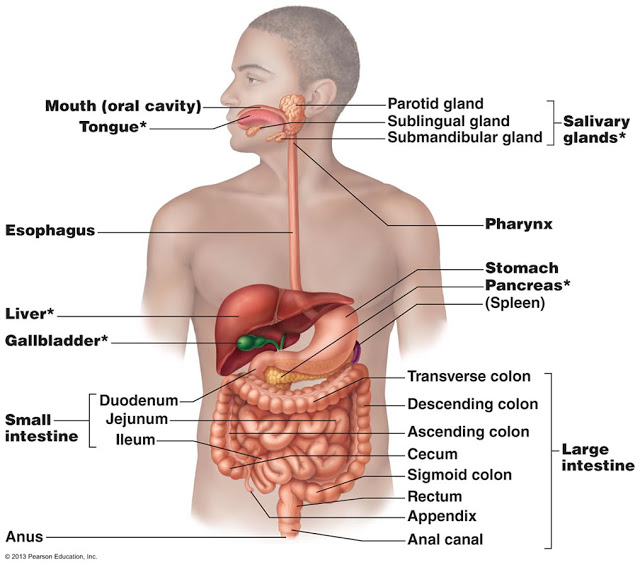
CONTENT:
Digestion is the process by which food substances are broken down into simple and soluble form. All the parts of the body which work together to ensure digestion of food are called the digestive system.
PARTS OF THE DIGESTIVE SYSTEM
1. MOUTH:
The mouth takes in the food, the teeth chew the food, the food is mixed with saliva to soften it before it is swallowed. Enzyme in saliva called ptyalin digests carbohydrates into simple sugar. Proteins, fats and oil are not digested from the mouth, food is only masticated, mixed with saliva and swallowed.
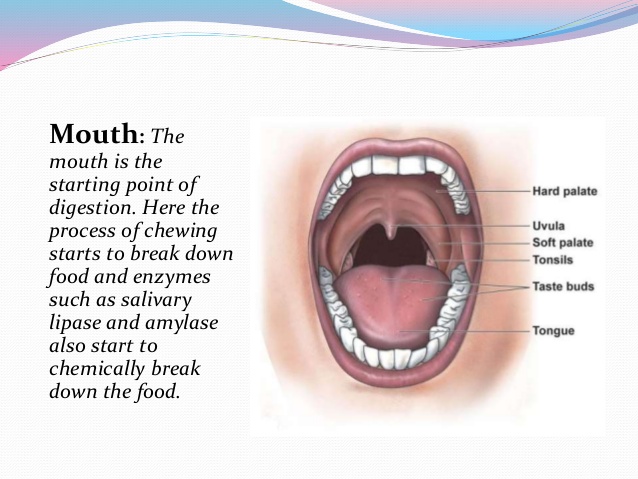
2. GULLET:
The gullet is a long tube or passage way that connects the mouth to the stomach, it provides passage for food into the stomach but no digestion takes place in the gullet.

3. STOMACH:
The stomach is a sac-like organ that provides temporary storage for swallowed food. Carbohydrate is churned into chyme (semi fluid food), mixed with gastric juice, acidified and the bacteria in the food are killed. Proteins are also churned into chyme, and the enzyme called pepsin digests proteins into peptones. Enzyme called rennin changes fat in milk into semi solids.
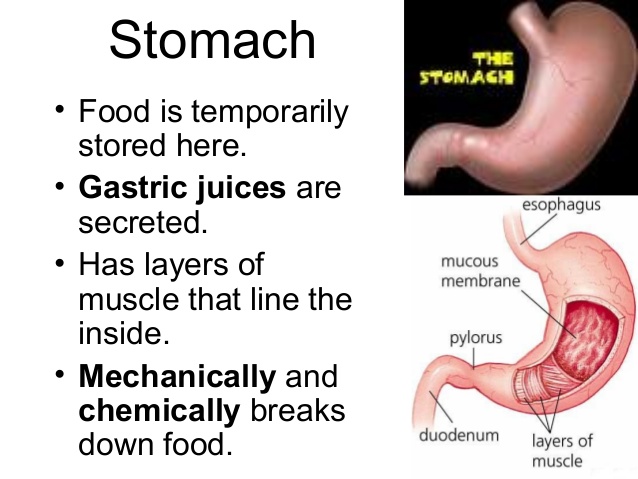
4. SMALL INTESTINE:
The small intestine is a long narrow tube which is long as 8 metres. The small intestine has 3 components.
(1) Duodenum
(2) Jejunum
(3) Ileum
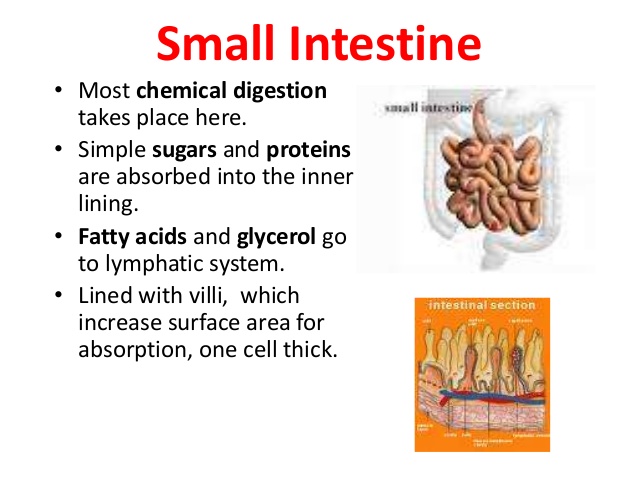
Carbohydrates, proteins, fats and oil acidity is neutralized. Carbohydrates and proteins are turned into semi fluid called chyme while fats and oil are emulsified (changed to droplets).
Carbohydrates are finally digested into simple sugars and are absorbed into the blood stream and circulated. Proteins are finally digested from peptones into amino acids, absorbed and circulated. Emulsified fats and oil are digested into fatty acid and glycerol, absorbed into the blood stream and circulated.
EVALUATION:
What is digestion and digestive system?
What is the function of ptyalin?
How is food digested in the stomach?
What are the 3 components of the small intestine?
ASSIGNMENT:
Draw and fully label the human digestive system.
watch video
https://youtu.be/08VyJOEcDos
practice test
http://www.softschools.com/quizzes/scie ... iz751.html
http://www.funtrivia.com/playquiz/quiz2 ... 76a90.html
LESSON 15
TOPIC: DIGESTIVE ENZYMES
OBJECTIVE: At the end of the lesson, the students should be able to:
1. Mention the end products of digestion.
2. Describe the food tests for carbohydrates, proteins, fats and oils.
CONTENT:
ABSORPTION AND STORAGE OF FOOD
The end products of digestion are simple sugars from carbohydrates, amino acids from proteins, fatty acids and glycerol from fats and oils. Vitamins, mineral salts and water do not need digestion. They exist in soluble and absorb-able forms. At the end of digestion, all the end products are absorbed in the small intestine through the Villi (singular: villus). The undigested food materials are passed into the large intestine.
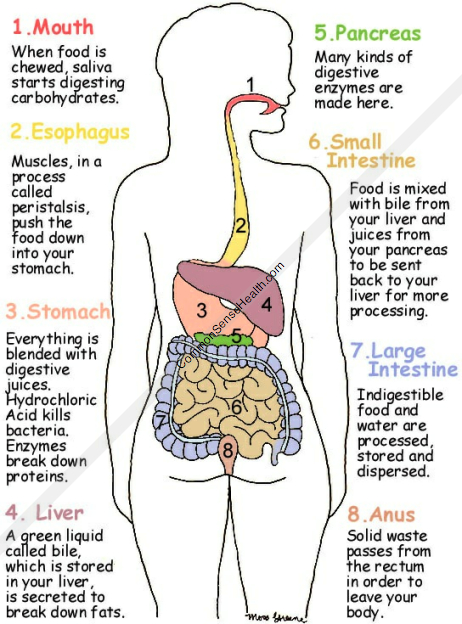
https://youtu.be/kQT1nD8rhq8
SIMPLE FOOD TESTS
Carbohydrates:
Iodine turns foods containing carbohydrates into blue black colour.
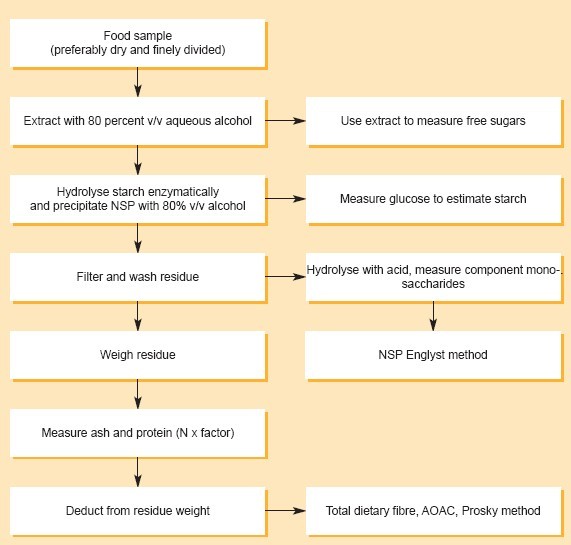
Proteins:
A mixture of any protein containing food + hydroxide solution + copper sulphate solution will turn purple.this includes the presence of protein.

Fats and oil:
Rub a freshly opened oil palm fruit on a clean piece of paper. Dip the stained paper into methylated spirit. The oil disappears. This confirms the presence of fats and oil.
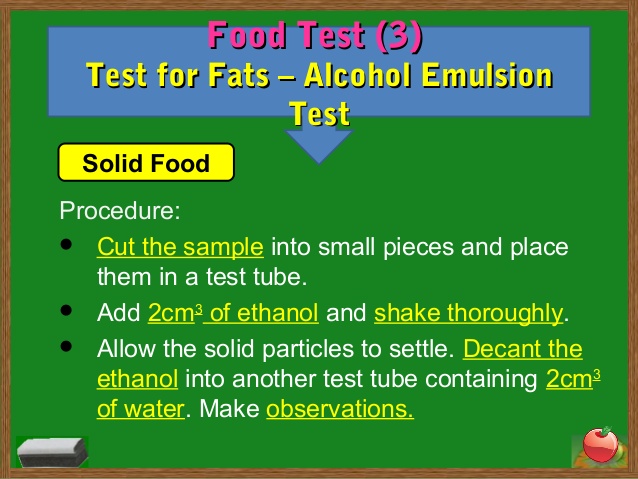


https://youtu.be/akMLGbNA0gE
EVALUATION:
What are the end products of digestion?
What are the food tests for carbohydrates, proteins, fats and oil?
ASSIGNMENT:
Mention three chemical reagents used in food tests.
Practice Quiz
http://www.quibblo.com/quiz/9E0auZf/Dig ... ystem-Quiz
http://www.proprofs.com/quiz-school/sto ... ns-enzymes
http://www.syvum.com/cgi/online/mult.cg ... ymes.tdf?0
LESSON 16
Topic: ENVIRONMENTAL POLLUTION (WATER)
Content: 1 Definition of environmental and water pollution
2 Causes of water pollution
3 Consequences of water pollution
4 Control measures of water pollution
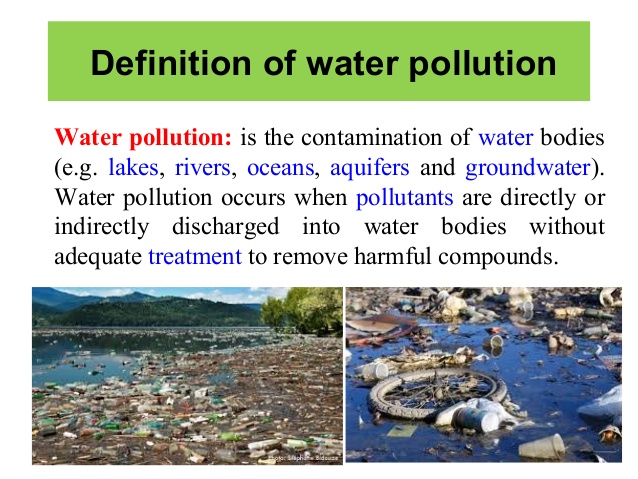
DEFINITION OF ENVIRONMENTAL AND WATER POLLUTION
The discharge of waste substances into the environment in quantities that are harmful to human beings is known as pollution.
The materials and energy that cause pollution are called pollutants. Examples of pollutants are Acids, Soaps and Detergents, Alcohol, Oils, Chemical compounds such as Lead, Sulphide, fertilizers, herbicides, etc.
Making the environment undesirable, unpleasant, threatening the health and existence of living organisms including humans is environmental pollution.
Water pollution can be defined as the discharge of harmful waste substances into a body of water.
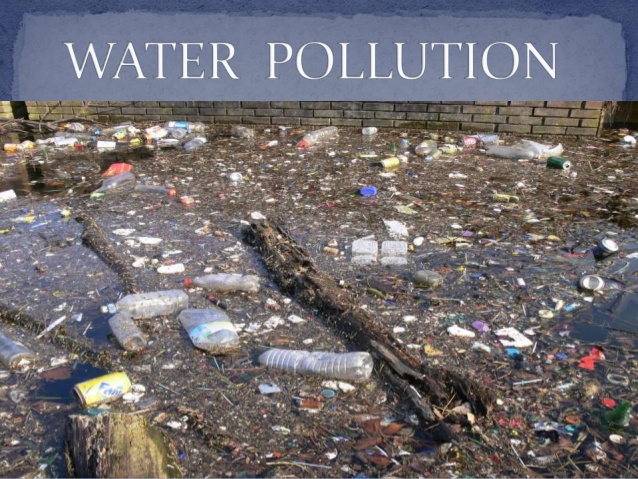
Garbage
People today create a lot of waste from all the products they use. Much of this garbage is dumped in landfills, as shown here, or burned. Sometimes these methods pollute the surrounding air, soil, and water.

CAUSES OF WATER POLLUTION
When water loses its natural, physical properties, and becomes coloured with offensive odour and bad taste; the water is said to be polluted. Causes of water pollution are:
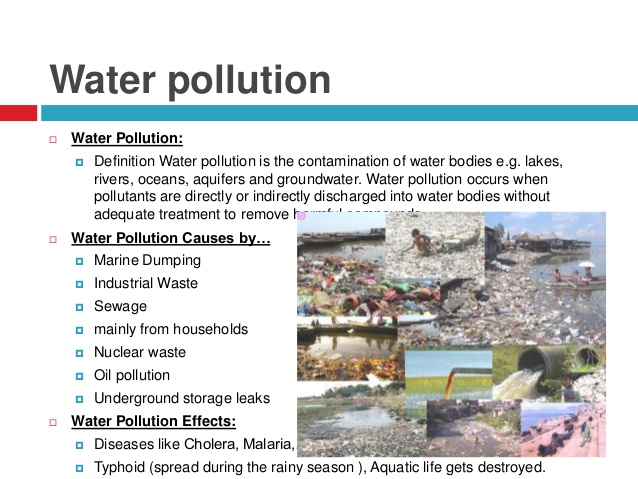
DOMESTIC WASTES
1. Soap and detergents used in washing clothes, plates, cars and other materials may be allowed to flow back into the source of water supply(such as stream).
2. Oils such as vegetable oil, kerosene, engine oil, etc
3. Refuse dumped beside the river or stream may decay and produce toxic materials which may be washed by rain into the stream/river
4. Dung from animals such as chickens, dogs, goats, cows left on land may decay and the poisonous materials in them are washed into the river/stream
5. Human faeces sometimes contain eggs of intestinal worms and other harmful micro-organisms
INDUSTRIAL WASTES

Industrial Water Pollution
Industrial pollutants that run into streams, rivers, or lakes can have serious effects on wildlife, plants, and humans. In the United States there are strict rules for the amount and composition of substances that factories can release into bodies of water. These rules are not always enforced, and much industrial water pollution comes from accidental chemical or oil spillage.
INDUSTRIAL WASTES
1. Acids, e.g. hydro-cyanic acid present in the water squeezed out from cassava in the garri processing industry.
2. Soaps and Detergents are used in washing up some industrial equipments which may be allowed to flow into nearby bodies of water.
3. Alcohol, which may be washed out from bottles in the breweries
4. Oils
5. Chemical compounds such as Lead, Sulphide, fertilizers, herbicides
EVALUATION
1. What do you understand by water pollution?
2. List four examples of pollutants.
3. Give four industrial and domestic waste
LESSON 17
CONSEQUENCES/EFFECTS OF WATER POLLUTION
Water pollution occurs when water is no longer supporting the lives of living things and the consequences of the pollution are
1. All water pollutants are hazardous to people and other life forms
2. Dysentery, salmonella and hepatitis, diarrhea are among the diseases transmitted by untreated sewage
3. When water is polluted, it becomes unfit for drinking
4. If rivers are polluted, fish will die in large numbers
5. Polluted water will affect the economy of fishermen in the country
6. Swimmers will no longer enjoy their recreation, polluted water could be disastrous.

CONTROL MEASURES OF WATER POLLUTION
There should be awareness on the dangers of pollution which is the most important method of reducing pollution. Water pollution maybe controlled through the following ways
1. Treating sewage in sewage plant before emptying the effluent into the river and sea.
2. Maximum precautions must be taken to prevent oil spillage.
3. Building nuclear waste silos for storing radioactive wastes so that ground water does not becomes contaminated.
4. Treating industrial wastes before emptying them into water bodies.
5. Do not allow engine oil, kerosene or petrol to get into fresh water supply.
6. Fishermen should stop the use of Gammalin 20 on water bodies to kill fish.
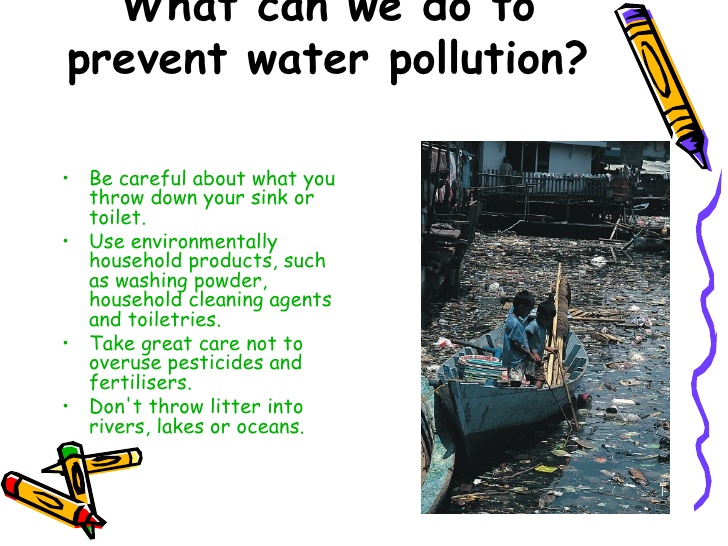
EVALUATION
1. State five effects of water pollution
2. How can water pollution be controlled?
ASSIGNMENT
Identify and discuss three sewage treatments
READING ASSIGNMENT
Nigerian Basic Science Project (STAN) BK2 Pages 8-11
TOPIC: THE DIGESTIVE SYSTEM (HUMAN)
OBJECTIVE: At the end of the lesson, the students should be able to:
1. Define digestion and digestive system.
2. Explain the function of ptyalin.
3. Describe digestion of food in the stomach.
4. Mention the 3 components of the small intestine.

CONTENT:
Digestion is the process by which food substances are broken down into simple and soluble form. All the parts of the body which work together to ensure digestion of food are called the digestive system.
PARTS OF THE DIGESTIVE SYSTEM
1. MOUTH:
The mouth takes in the food, the teeth chew the food, the food is mixed with saliva to soften it before it is swallowed. Enzyme in saliva called ptyalin digests carbohydrates into simple sugar. Proteins, fats and oil are not digested from the mouth, food is only masticated, mixed with saliva and swallowed.

2. GULLET:
The gullet is a long tube or passage way that connects the mouth to the stomach, it provides passage for food into the stomach but no digestion takes place in the gullet.

3. STOMACH:
The stomach is a sac-like organ that provides temporary storage for swallowed food. Carbohydrate is churned into chyme (semi fluid food), mixed with gastric juice, acidified and the bacteria in the food are killed. Proteins are also churned into chyme, and the enzyme called pepsin digests proteins into peptones. Enzyme called rennin changes fat in milk into semi solids.

4. SMALL INTESTINE:
The small intestine is a long narrow tube which is long as 8 metres. The small intestine has 3 components.
(1) Duodenum
(2) Jejunum
(3) Ileum

Carbohydrates, proteins, fats and oil acidity is neutralized. Carbohydrates and proteins are turned into semi fluid called chyme while fats and oil are emulsified (changed to droplets).
Carbohydrates are finally digested into simple sugars and are absorbed into the blood stream and circulated. Proteins are finally digested from peptones into amino acids, absorbed and circulated. Emulsified fats and oil are digested into fatty acid and glycerol, absorbed into the blood stream and circulated.
EVALUATION:
What is digestion and digestive system?
What is the function of ptyalin?
How is food digested in the stomach?
What are the 3 components of the small intestine?
ASSIGNMENT:
Draw and fully label the human digestive system.
watch video
https://youtu.be/08VyJOEcDos
practice test
http://www.softschools.com/quizzes/scie ... iz751.html
http://www.funtrivia.com/playquiz/quiz2 ... 76a90.html
LESSON 15
TOPIC: DIGESTIVE ENZYMES
OBJECTIVE: At the end of the lesson, the students should be able to:
1. Mention the end products of digestion.
2. Describe the food tests for carbohydrates, proteins, fats and oils.
CONTENT:
ABSORPTION AND STORAGE OF FOOD
The end products of digestion are simple sugars from carbohydrates, amino acids from proteins, fatty acids and glycerol from fats and oils. Vitamins, mineral salts and water do not need digestion. They exist in soluble and absorb-able forms. At the end of digestion, all the end products are absorbed in the small intestine through the Villi (singular: villus). The undigested food materials are passed into the large intestine.

https://youtu.be/kQT1nD8rhq8
SIMPLE FOOD TESTS
Carbohydrates:
Iodine turns foods containing carbohydrates into blue black colour.

Proteins:
A mixture of any protein containing food + hydroxide solution + copper sulphate solution will turn purple.this includes the presence of protein.

Fats and oil:
Rub a freshly opened oil palm fruit on a clean piece of paper. Dip the stained paper into methylated spirit. The oil disappears. This confirms the presence of fats and oil.



https://youtu.be/akMLGbNA0gE
EVALUATION:
What are the end products of digestion?
What are the food tests for carbohydrates, proteins, fats and oil?
ASSIGNMENT:
Mention three chemical reagents used in food tests.
Practice Quiz
http://www.quibblo.com/quiz/9E0auZf/Dig ... ystem-Quiz
http://www.proprofs.com/quiz-school/sto ... ns-enzymes
http://www.syvum.com/cgi/online/mult.cg ... ymes.tdf?0
LESSON 16
Topic: ENVIRONMENTAL POLLUTION (WATER)
Content: 1 Definition of environmental and water pollution
2 Causes of water pollution
3 Consequences of water pollution
4 Control measures of water pollution

DEFINITION OF ENVIRONMENTAL AND WATER POLLUTION
The discharge of waste substances into the environment in quantities that are harmful to human beings is known as pollution.
The materials and energy that cause pollution are called pollutants. Examples of pollutants are Acids, Soaps and Detergents, Alcohol, Oils, Chemical compounds such as Lead, Sulphide, fertilizers, herbicides, etc.
Making the environment undesirable, unpleasant, threatening the health and existence of living organisms including humans is environmental pollution.
Water pollution can be defined as the discharge of harmful waste substances into a body of water.

Garbage
People today create a lot of waste from all the products they use. Much of this garbage is dumped in landfills, as shown here, or burned. Sometimes these methods pollute the surrounding air, soil, and water.

CAUSES OF WATER POLLUTION
When water loses its natural, physical properties, and becomes coloured with offensive odour and bad taste; the water is said to be polluted. Causes of water pollution are:

DOMESTIC WASTES
1. Soap and detergents used in washing clothes, plates, cars and other materials may be allowed to flow back into the source of water supply(such as stream).
2. Oils such as vegetable oil, kerosene, engine oil, etc
3. Refuse dumped beside the river or stream may decay and produce toxic materials which may be washed by rain into the stream/river
4. Dung from animals such as chickens, dogs, goats, cows left on land may decay and the poisonous materials in them are washed into the river/stream
5. Human faeces sometimes contain eggs of intestinal worms and other harmful micro-organisms
INDUSTRIAL WASTES

Industrial Water Pollution
Industrial pollutants that run into streams, rivers, or lakes can have serious effects on wildlife, plants, and humans. In the United States there are strict rules for the amount and composition of substances that factories can release into bodies of water. These rules are not always enforced, and much industrial water pollution comes from accidental chemical or oil spillage.
INDUSTRIAL WASTES
1. Acids, e.g. hydro-cyanic acid present in the water squeezed out from cassava in the garri processing industry.
2. Soaps and Detergents are used in washing up some industrial equipments which may be allowed to flow into nearby bodies of water.
3. Alcohol, which may be washed out from bottles in the breweries
4. Oils
5. Chemical compounds such as Lead, Sulphide, fertilizers, herbicides
EVALUATION
1. What do you understand by water pollution?
2. List four examples of pollutants.
3. Give four industrial and domestic waste
LESSON 17
CONSEQUENCES/EFFECTS OF WATER POLLUTION
Water pollution occurs when water is no longer supporting the lives of living things and the consequences of the pollution are
1. All water pollutants are hazardous to people and other life forms
2. Dysentery, salmonella and hepatitis, diarrhea are among the diseases transmitted by untreated sewage
3. When water is polluted, it becomes unfit for drinking
4. If rivers are polluted, fish will die in large numbers
5. Polluted water will affect the economy of fishermen in the country
6. Swimmers will no longer enjoy their recreation, polluted water could be disastrous.

CONTROL MEASURES OF WATER POLLUTION
There should be awareness on the dangers of pollution which is the most important method of reducing pollution. Water pollution maybe controlled through the following ways
1. Treating sewage in sewage plant before emptying the effluent into the river and sea.
2. Maximum precautions must be taken to prevent oil spillage.
3. Building nuclear waste silos for storing radioactive wastes so that ground water does not becomes contaminated.
4. Treating industrial wastes before emptying them into water bodies.
5. Do not allow engine oil, kerosene or petrol to get into fresh water supply.
6. Fishermen should stop the use of Gammalin 20 on water bodies to kill fish.

EVALUATION
1. State five effects of water pollution
2. How can water pollution be controlled?
ASSIGNMENT
Identify and discuss three sewage treatments
READING ASSIGNMENT
Nigerian Basic Science Project (STAN) BK2 Pages 8-11
WEEK 5
LESSON 18
TOPIC: THE RESPIRATORY SYSTEM (HUMAN)
OBJECTIVE: At the end of the lesson, the students should be able to:
1. Define respiration.
2. Mention parts of the human respiratory system.
3. Differentiate between pharynx and larynx.
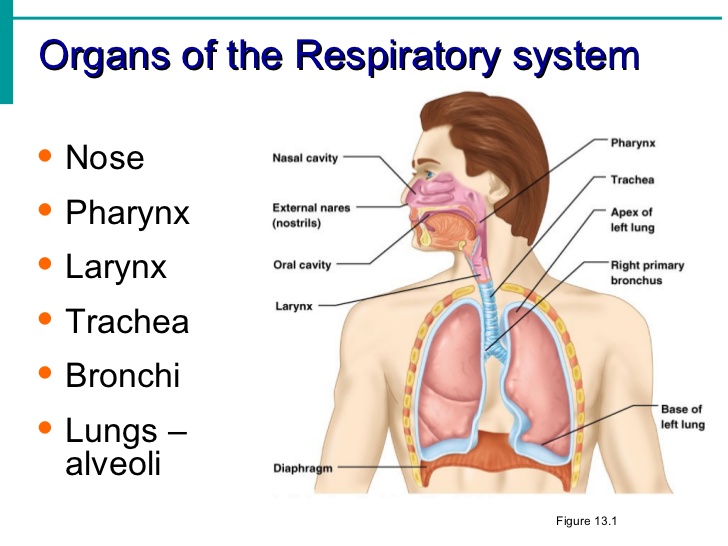
CONTENT:
Respiration is the process by which food substances are broken down in our body to release the energy we need.
The body does not depend on food alone for the production of all the energy required. There is the need for oxygen, which we get from the air we breathe in to break down food substances in our body releasing energy and some waste products.
PARTS OF THE HUMAN RESPIRATORY SYSTEM
The human respiratory system consists of a number of organs which work together to ensure the supply of oxygen to the body cells and the removal of carbon (IV) oxide from the cells.
These organs are:
(1 ) nostrils (2) larynx (3) pharynx (4) trachea (wind pipe) (5) bronchi (6) lungs (7 ) bronchioles (8) alveoli (9) mouth
(1) Nostrils:
Air enters the body through the nostrils which are lined with a membrane of cells that secrets mucus which moistens the air we breathe.
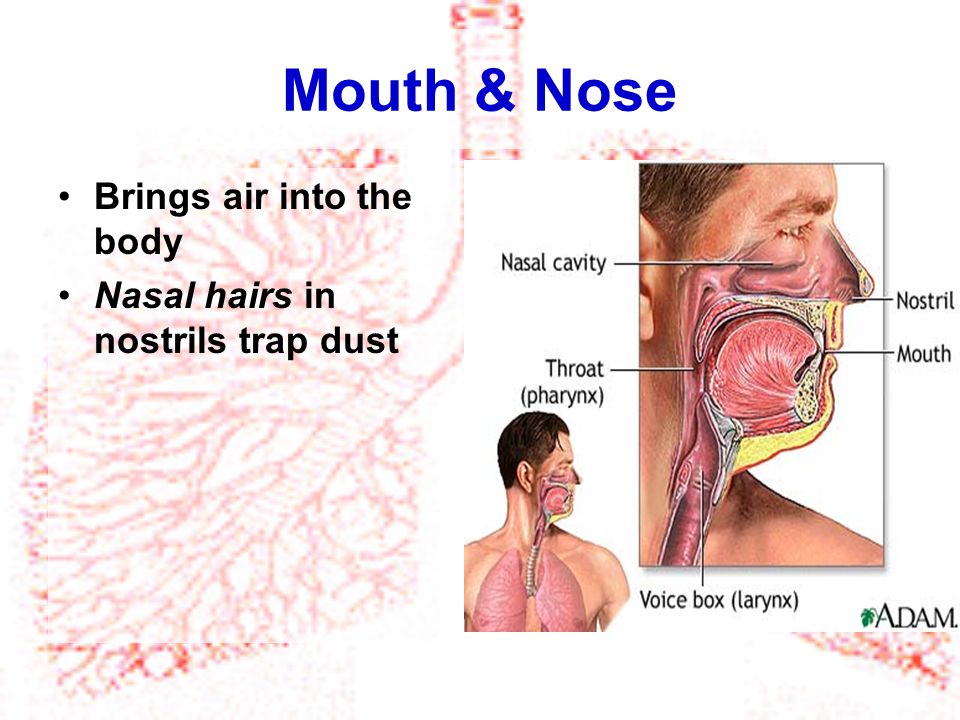
(2) Pharynx:
The nostrils lead into the pharynx which is the lower end of the mouth cavity.
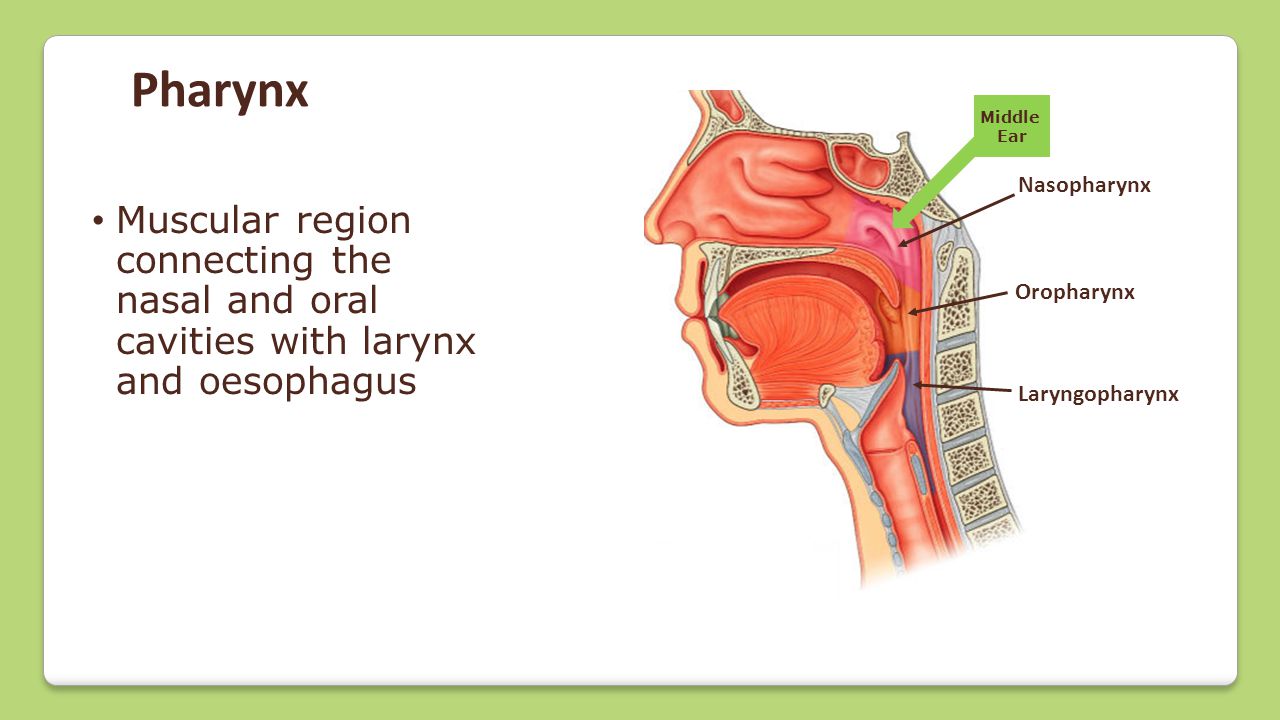
(3) Larynx:
The pharynx leads into the larynx which is also called the voice box. The larynx leads into the trachea, which is also called the wind pipe.
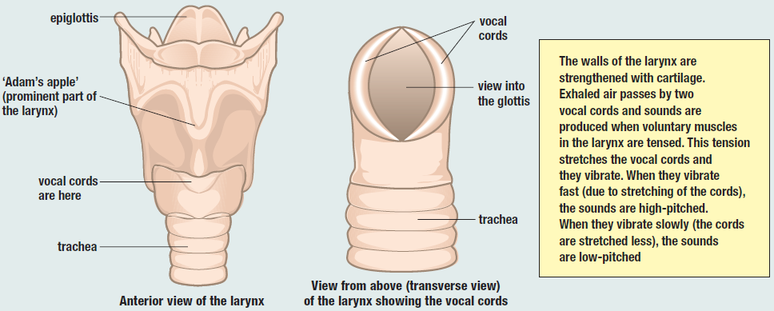
(4) Bronchi:
The trachea leads into the bronchi, each bronchus leads into a lung.
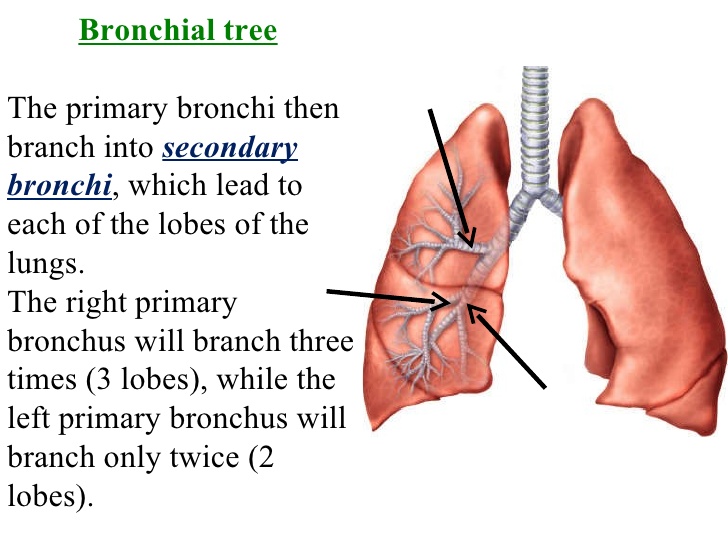
(5) Lungs: each bronchus leads into a lung. Inside the lungs are tiny tubes called bronchioles. The bronchioles branch again into alveoli.

https://youtu.be/ps64D3Juv5A
EVALUATION:
What is respiration?
What are the parts of the human respiratory system?
What is the difference between pharynx and larynx?
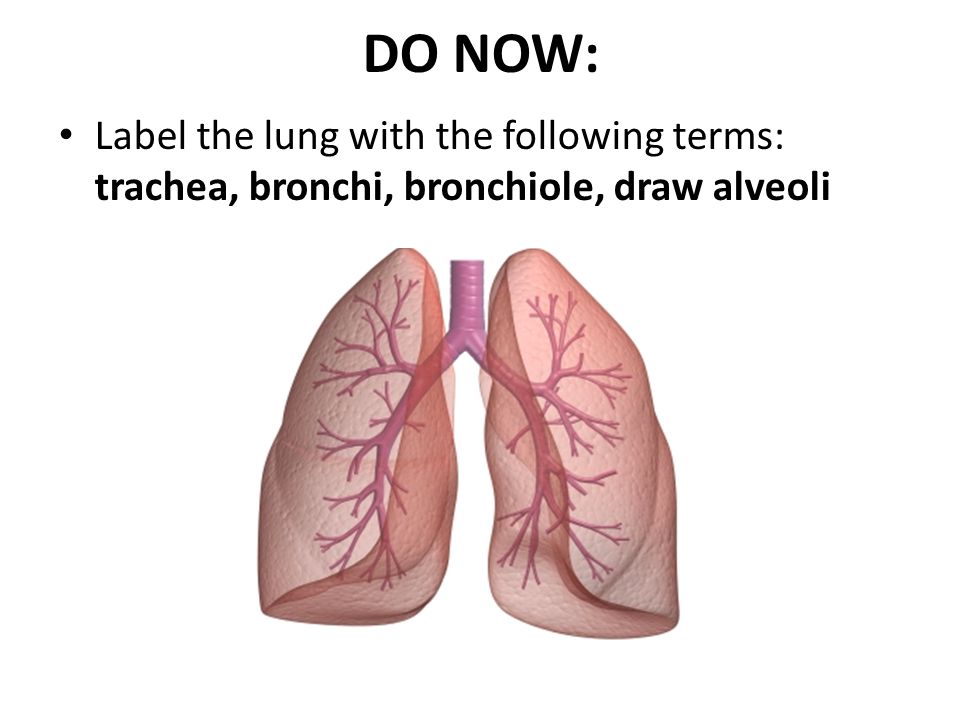
ASSIGNMENT:
Distinguish between breathing and respiration.
watch video
https://youtu.be/hc1YtXc_84A
practice test
http://www.quibblo.com/quiz/Umsdgx/Resp ... ystem-Quiz
http://www.softschools.com/quizzes/scie ... iz752.html
LESSON 19
TOPIC: FUNCTIONS OF THE RESPIRATORY SYSTEM
OBJECTIVE: At the end of the lesson, the students should be able to:
1. Explain the functions of the respiratory system.
2. Mention and explain the problems associated with breathing.
CONTENT
The main functions of the respiratory system are:
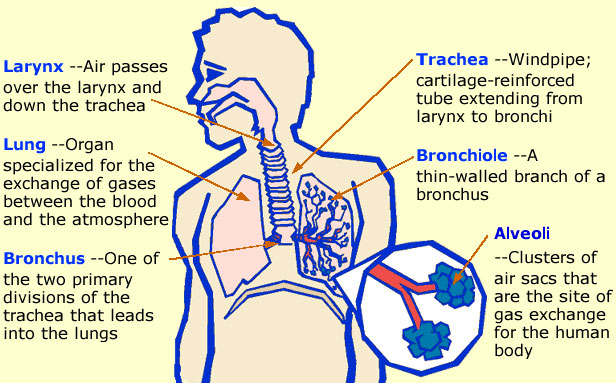
1. Breathing:
This is described as exchange of gases in which oxygen is breathed in and carbon dioxide is breathe out. This is one of the stages in respiration.
https://youtu.be/pc2MmhkUW_E
2. Cellular Respiration:
This is the process by which oxygen breathed in from the atmosphere is used in the breaking down of food substances in our body cells to release needed energy with CO2 and H2O as the waste products.
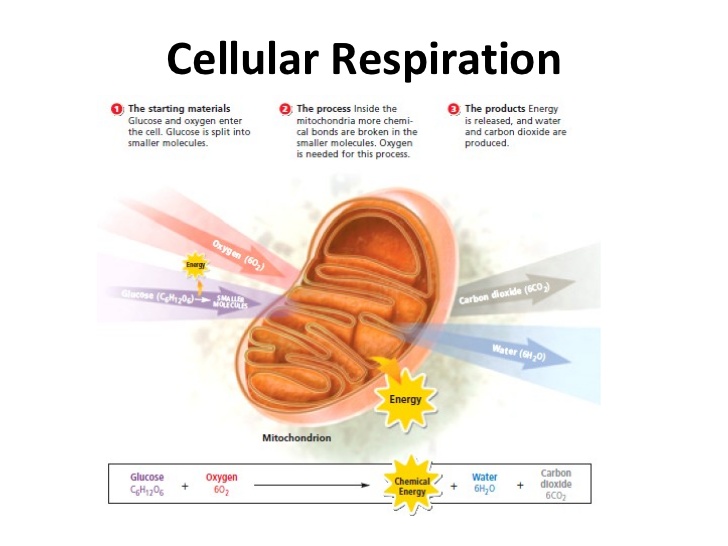
TYPES OF RESPIRATION
1. External Respiration:
This is breathing which involves exchange of gases and it takes place in the lungs. This simply involves the breathing of air or oxygen into the lungs. This is also called inspiration or inhalation and the breathing out of air (carbon dioxide and water vapour) into the atmosphere and environment is otherwise called expiration or exhalation.
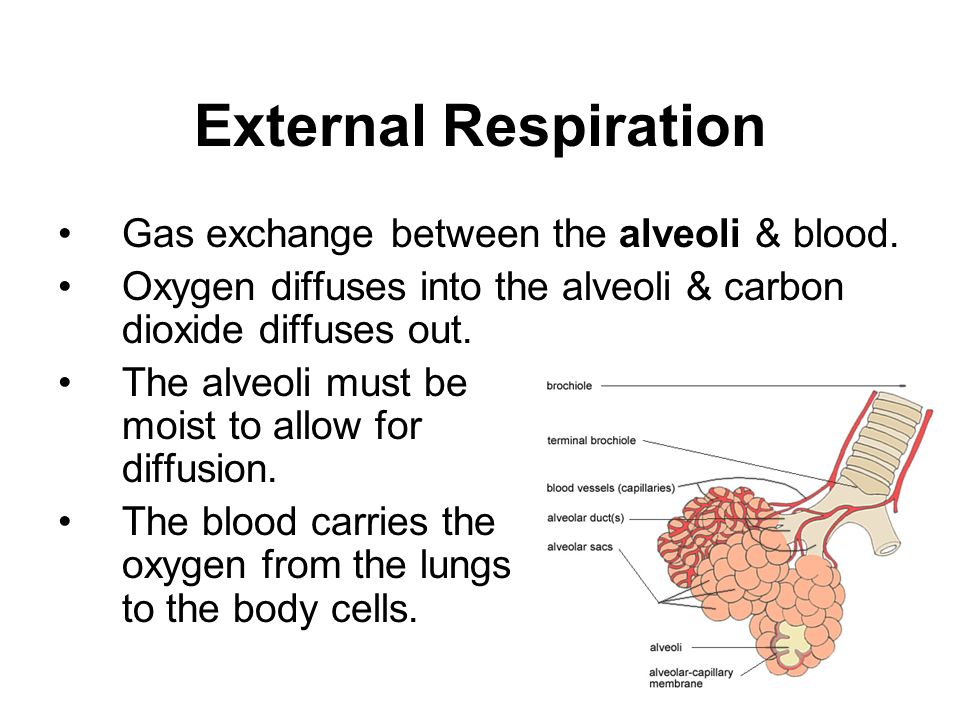
2. Internal Respiration:
This involves the breaking down of food substances and release of energy. It takes place within the cells of the body.
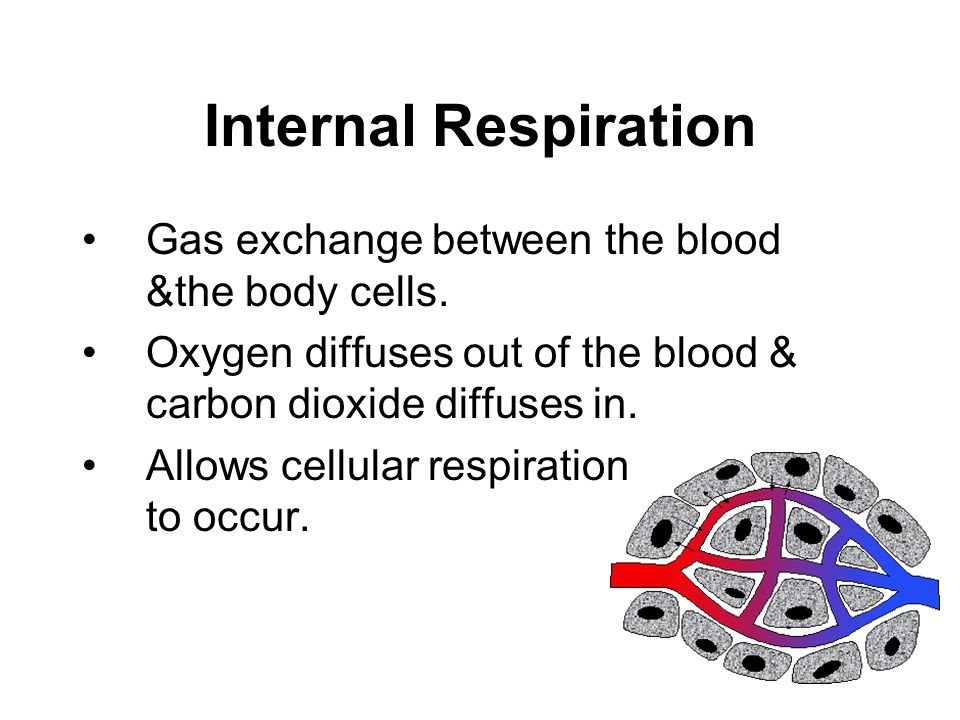
PROBLEMS ASSOCIATED WITH BREATHING
There are health problems which make breathing difficult for some people. The health conditions may hereditary or environmental causes. Some of these are:
1. Pneumonia:
The air sacs of the lungs are clogged up with mucus making gaseous exchange difficult. It is caused bacteria present in an unhealthy, cold and wet environment. Sufferers experience pains on the chest and difficulty in breathing.

2. Bronchitis:
This is cough arising from difficulty in breathing. It is a disease of the lungs.
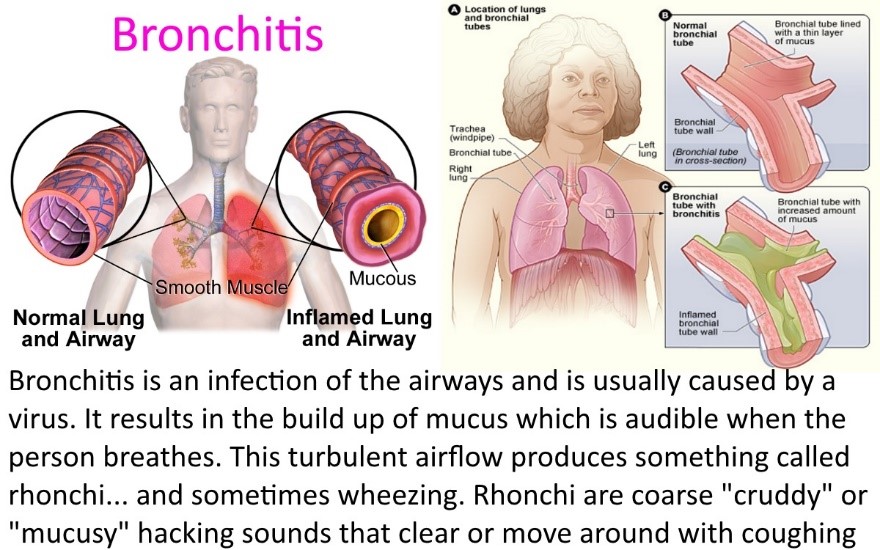
https://youtu.be/8FaZ1fLOC0U
EVALUATION:
What are the functions of the respiratory system?
What are the problems associated with breathing?
ASSIGNMENT:
Draw and fully label the human respiratory system.
Why do divers carry oxygen cylinders? Discuss.
practice test
http://www.softschools.com/quizzes/scie ... iz752.html
http://www.quibblo.com/quiz/Umsdgx/Resp ... ystem-Quiz
http://www.syvum.com/cgi/online/mult.cg ... espi.tdf?0
LESSON 20
TOPIC: PROBLEMS ASSOCIATED WITH BREATHING (CONTD.)
OBJECTIVE: At the end of the lesson, the students should be able to:
1. Mention problems associated with breathing.
2. Explain common breathing problems.
CONTENT:
3. Pulmonary Fibrosis:
This is a result of inelasticity of the fibrous connective tissues that build up in the lungs.
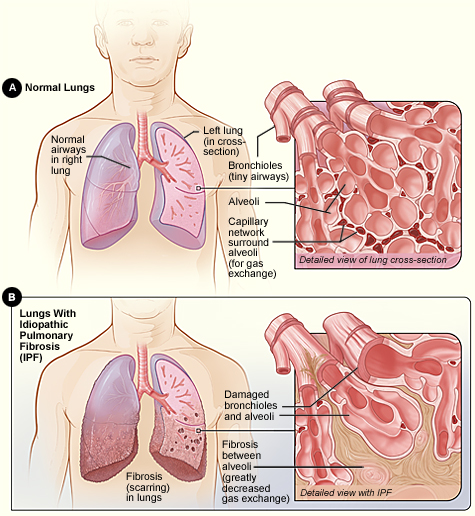
4. Pulmonary Tuberculosis:
The lungs lose their elasticity and are unable to allow gaseous exchange. It is caused by bacteria. Sufferers experience prolonged cough and pains.
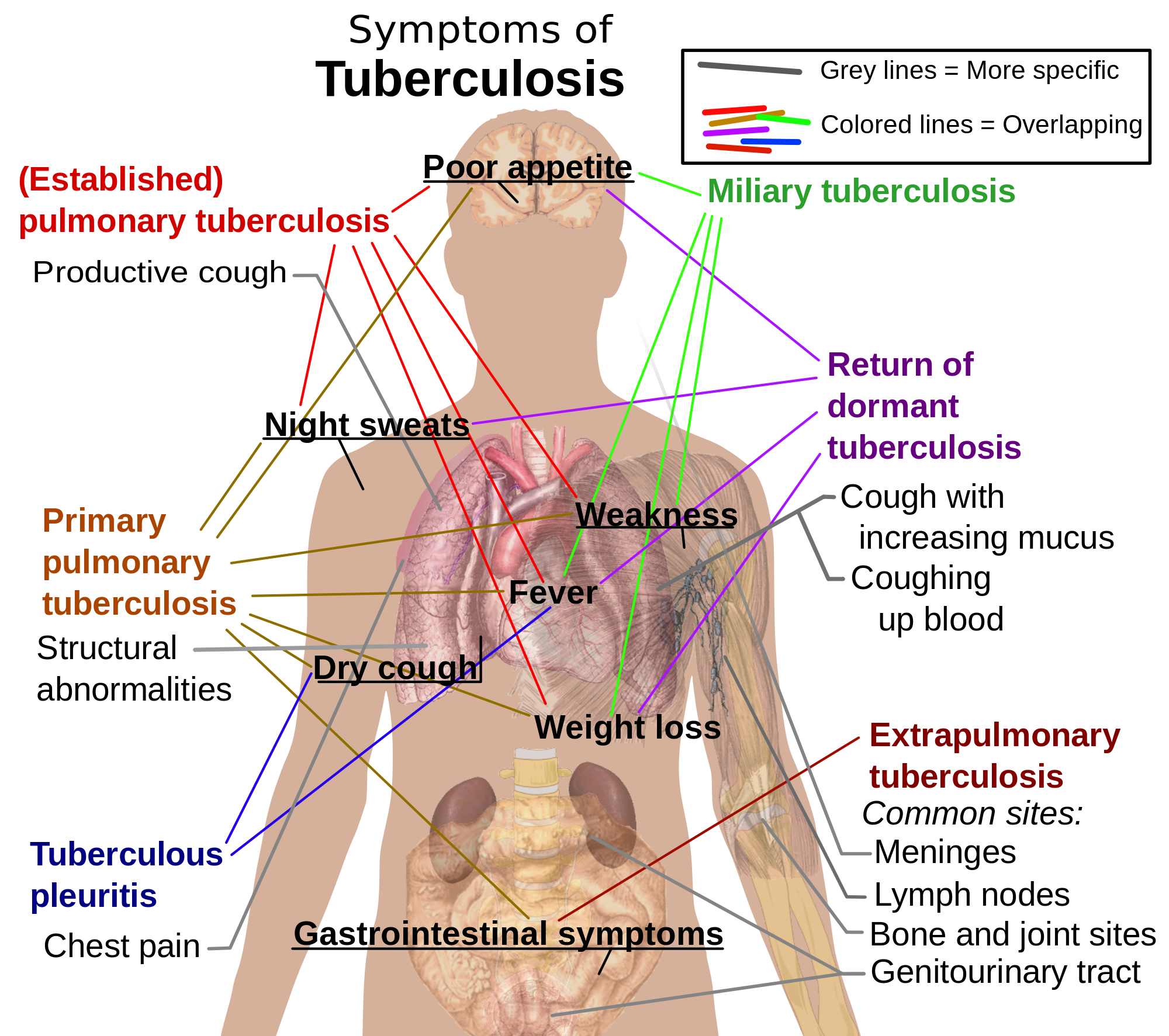
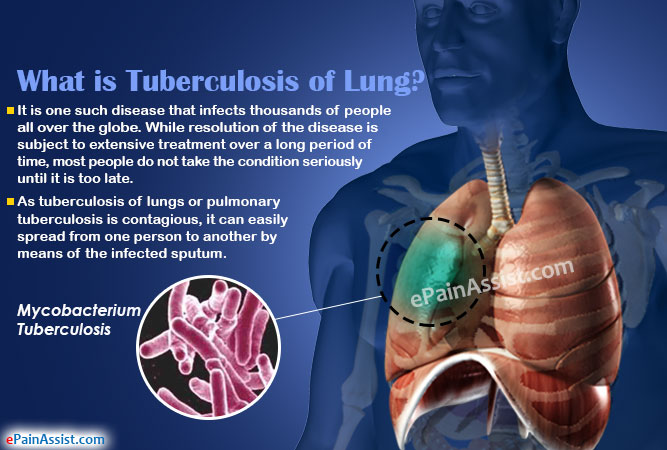
5. Emphysema;
This is the damage of the walls of the air sacs/alveoli resulting in a reduced surface area for gas exchange. Because the surface area fro gas exchange is reduced, the oxygen reaching the brain and heart is also reduced. When this happens, the patient may feel depressed and sluggish.
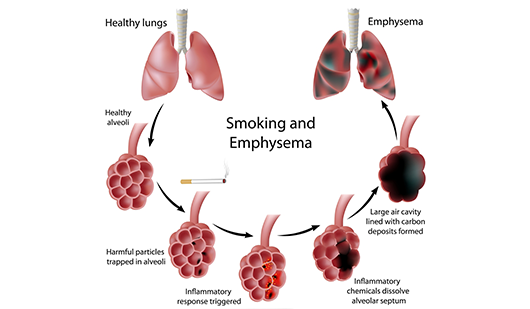
EVALUATION:
What are the problems associated with breathing?
How do the breathing problems occur?
ASSIGNMENT:
Why is oxygen important?
Submit a research write-up from the internet on all the breathing problems discussed above.
further studies
https://drive.google.com/file/d/0Bz3Mh6 ... sp=sharing
https://drive.google.com/file/d/0Bz3Mh6 ... sp=sharing
https://drive.google.com/file/d/0Bz3Mh6 ... sp=sharing
practice test
http://www.allthetests.com/quiz05/dasqu ... 1049290816
http://kidshealth.org/kid/htbw/_bfs_RSquizsource.html
LESSON 21
Topic: ENVIRONMENTAL POLLUTION (AIR)
Content: 1 Definition of air pollution
2 Sources of air pollution
3 Consequences of air pollution
4 Control measures of air pollution
SUB-TOPIC 1: DEFINITION OF AIR POLLUTION
Air pollution can be solids, liquids or gases. Air pollution occurs when the air is contaminated with harmful waste substances discharged into the atmosphere.
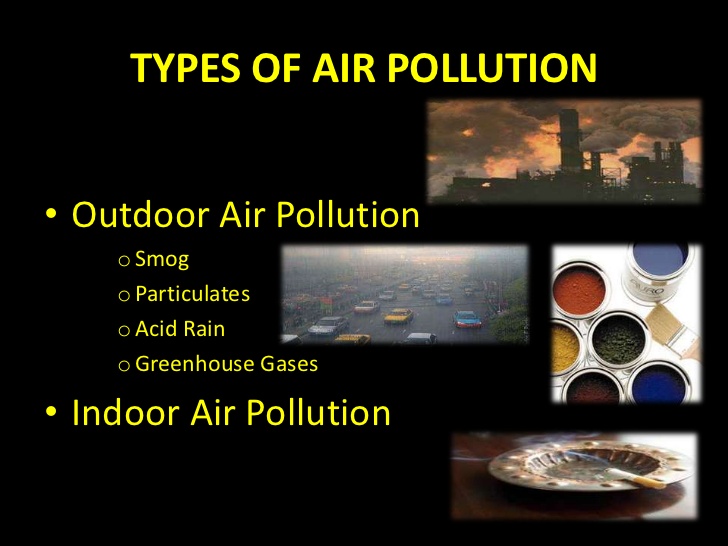
Air Pollution
Air pollution is a serious problem in many parts of the world. Smokestacks pump pollution into the air, harming the environment and making it harder to breathe.
The composition of clean dry air is
Nitrogen 78%
Oxygen 21%
Argon o.93%
Carbon dioxide 0.03%
Anything short of this is air pollution. The major air pollutants are
i. Sulphur dioxide from motor vehicles and industrial plants, (SO).
ii. Nitrogen oxides
iii. Carbon monoxide
iv. Hydrogen sulphide
v. Dust from city road and surroundings.
vi. Smoke from domestic fires, cigarettes, industrial premises, etc.
vii. Smog produced by the action of sunlight on nitric oxide and nitrogen dioxide.
viii. Radioactive rays from nuclear power plants and nuclear reactors.
SOURCES OF AIR POLLUTION
1. Automobiles
2. Power stations
3. Industries
4. Burning of wood and vegetation for agricultural purposes
5. The decay of dead plants and animals.

EVALUATION
1. Define air pollution.
2. Highlight five air pollutants.
3. List major sources of air pollution.
LESSON 22
CONSEQUENCES OF AIR POLLUTION
1. CARBON MONOXIDE: In low concentration causes dizziness, headache, nausea and tiredness. If inhaled for a longer periods even in low concentration, causes brain damage; at a higher concentrations, it can cause unconsciousness and eventually death.
2. SULPHUR DIOXIDE: It causes lung diseases in human. It changes the green colour of plants leaves and corrodes metals.
3. NITROGEN OXIDES: This causes lung irritation, suffocation, disease in plants and corrosion of metallic objects.
4. CARBON MONOXIDE : It reacts with the haemoglobin in the blood preventing it from taking oxygen and forms carboxyhaemoglobin, which can lead to death by suffocation.
5. HYDROGEN SULPHIDE: It has rotten egg smell which is irritating and can causes suffocation to humans.
6. Dust particles can cause injury to the eyes, noses and ears.
7. Smoke causes injury to the lung of the respiratory tracts and discomfort to man. Smoke from cigarette causes lung cancer, asthma and chronic bronchitis.
8. Smog causes eyes irritation, respiratory ailments nausea.
9. Radioactive rays are very dangerous to health and can destroy genes.

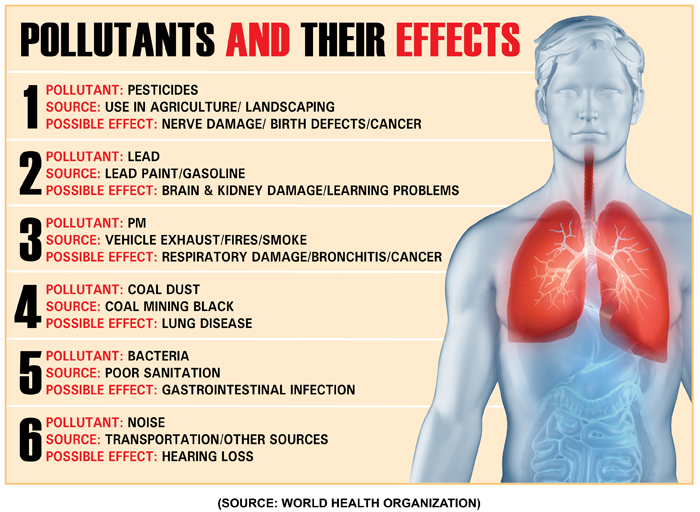
CONTROL MEASURES OF AIR POLLUTION
1. Proper maintenance of machinery, motor vehicles, boilers, furnaces and chimney.
2. Cover noses properly with white clean handkerchief if you accidentally get to air polluted area.
3. Planting of trees is another way of controlling air pollution. Plants can use carbon dioxide for photosynthesis, and at the same time releasing oxygen to the atmosphere.
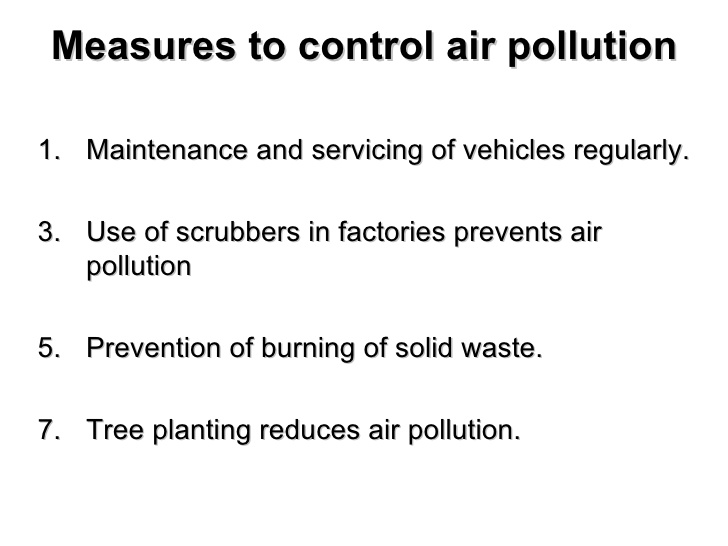
EVALUATION
1. What are the effects of air pollutants from a factory on the people and environment near it?
2. State two measures of controlling air pollution.
ASSIGNMENT
1. What is bunkering?
2. List three things in which gas flaring can lead to
READING ASSIGNMENT
Nigerian Basic Science Project (STAN) BK2 Pages 9-10
Further Studies 1
Further Studies 2
TOPIC: THE RESPIRATORY SYSTEM (HUMAN)
OBJECTIVE: At the end of the lesson, the students should be able to:
1. Define respiration.
2. Mention parts of the human respiratory system.
3. Differentiate between pharynx and larynx.

CONTENT:
Respiration is the process by which food substances are broken down in our body to release the energy we need.
The body does not depend on food alone for the production of all the energy required. There is the need for oxygen, which we get from the air we breathe in to break down food substances in our body releasing energy and some waste products.
PARTS OF THE HUMAN RESPIRATORY SYSTEM
The human respiratory system consists of a number of organs which work together to ensure the supply of oxygen to the body cells and the removal of carbon (IV) oxide from the cells.
These organs are:
(1 ) nostrils (2) larynx (3) pharynx (4) trachea (wind pipe) (5) bronchi (6) lungs (7 ) bronchioles (8) alveoli (9) mouth
(1) Nostrils:
Air enters the body through the nostrils which are lined with a membrane of cells that secrets mucus which moistens the air we breathe.

(2) Pharynx:
The nostrils lead into the pharynx which is the lower end of the mouth cavity.

(3) Larynx:
The pharynx leads into the larynx which is also called the voice box. The larynx leads into the trachea, which is also called the wind pipe.

(4) Bronchi:
The trachea leads into the bronchi, each bronchus leads into a lung.

(5) Lungs: each bronchus leads into a lung. Inside the lungs are tiny tubes called bronchioles. The bronchioles branch again into alveoli.

https://youtu.be/ps64D3Juv5A
EVALUATION:
What is respiration?
What are the parts of the human respiratory system?
What is the difference between pharynx and larynx?

ASSIGNMENT:
Distinguish between breathing and respiration.
watch video
https://youtu.be/hc1YtXc_84A
practice test
http://www.quibblo.com/quiz/Umsdgx/Resp ... ystem-Quiz
http://www.softschools.com/quizzes/scie ... iz752.html
LESSON 19
TOPIC: FUNCTIONS OF THE RESPIRATORY SYSTEM
OBJECTIVE: At the end of the lesson, the students should be able to:
1. Explain the functions of the respiratory system.
2. Mention and explain the problems associated with breathing.
CONTENT
The main functions of the respiratory system are:

1. Breathing:
This is described as exchange of gases in which oxygen is breathed in and carbon dioxide is breathe out. This is one of the stages in respiration.
https://youtu.be/pc2MmhkUW_E
2. Cellular Respiration:
This is the process by which oxygen breathed in from the atmosphere is used in the breaking down of food substances in our body cells to release needed energy with CO2 and H2O as the waste products.

TYPES OF RESPIRATION
1. External Respiration:
This is breathing which involves exchange of gases and it takes place in the lungs. This simply involves the breathing of air or oxygen into the lungs. This is also called inspiration or inhalation and the breathing out of air (carbon dioxide and water vapour) into the atmosphere and environment is otherwise called expiration or exhalation.

2. Internal Respiration:
This involves the breaking down of food substances and release of energy. It takes place within the cells of the body.

PROBLEMS ASSOCIATED WITH BREATHING
There are health problems which make breathing difficult for some people. The health conditions may hereditary or environmental causes. Some of these are:
1. Pneumonia:
The air sacs of the lungs are clogged up with mucus making gaseous exchange difficult. It is caused bacteria present in an unhealthy, cold and wet environment. Sufferers experience pains on the chest and difficulty in breathing.

2. Bronchitis:
This is cough arising from difficulty in breathing. It is a disease of the lungs.

https://youtu.be/8FaZ1fLOC0U
EVALUATION:
What are the functions of the respiratory system?
What are the problems associated with breathing?
ASSIGNMENT:
Draw and fully label the human respiratory system.
Why do divers carry oxygen cylinders? Discuss.
practice test
http://www.softschools.com/quizzes/scie ... iz752.html
http://www.quibblo.com/quiz/Umsdgx/Resp ... ystem-Quiz
http://www.syvum.com/cgi/online/mult.cg ... espi.tdf?0
LESSON 20
TOPIC: PROBLEMS ASSOCIATED WITH BREATHING (CONTD.)
OBJECTIVE: At the end of the lesson, the students should be able to:
1. Mention problems associated with breathing.
2. Explain common breathing problems.
CONTENT:
3. Pulmonary Fibrosis:
This is a result of inelasticity of the fibrous connective tissues that build up in the lungs.

4. Pulmonary Tuberculosis:
The lungs lose their elasticity and are unable to allow gaseous exchange. It is caused by bacteria. Sufferers experience prolonged cough and pains.


5. Emphysema;
This is the damage of the walls of the air sacs/alveoli resulting in a reduced surface area for gas exchange. Because the surface area fro gas exchange is reduced, the oxygen reaching the brain and heart is also reduced. When this happens, the patient may feel depressed and sluggish.

EVALUATION:
What are the problems associated with breathing?
How do the breathing problems occur?
ASSIGNMENT:
Why is oxygen important?
Submit a research write-up from the internet on all the breathing problems discussed above.
further studies
https://drive.google.com/file/d/0Bz3Mh6 ... sp=sharing
https://drive.google.com/file/d/0Bz3Mh6 ... sp=sharing
https://drive.google.com/file/d/0Bz3Mh6 ... sp=sharing
practice test
http://www.allthetests.com/quiz05/dasqu ... 1049290816
http://kidshealth.org/kid/htbw/_bfs_RSquizsource.html
LESSON 21
Topic: ENVIRONMENTAL POLLUTION (AIR)
Content: 1 Definition of air pollution
2 Sources of air pollution
3 Consequences of air pollution
4 Control measures of air pollution
SUB-TOPIC 1: DEFINITION OF AIR POLLUTION
Air pollution can be solids, liquids or gases. Air pollution occurs when the air is contaminated with harmful waste substances discharged into the atmosphere.

Air Pollution
Air pollution is a serious problem in many parts of the world. Smokestacks pump pollution into the air, harming the environment and making it harder to breathe.
The composition of clean dry air is
Nitrogen 78%
Oxygen 21%
Argon o.93%
Carbon dioxide 0.03%
Anything short of this is air pollution. The major air pollutants are
i. Sulphur dioxide from motor vehicles and industrial plants, (SO).
ii. Nitrogen oxides
iii. Carbon monoxide
iv. Hydrogen sulphide
v. Dust from city road and surroundings.
vi. Smoke from domestic fires, cigarettes, industrial premises, etc.
vii. Smog produced by the action of sunlight on nitric oxide and nitrogen dioxide.
viii. Radioactive rays from nuclear power plants and nuclear reactors.
SOURCES OF AIR POLLUTION
1. Automobiles
2. Power stations
3. Industries
4. Burning of wood and vegetation for agricultural purposes
5. The decay of dead plants and animals.

EVALUATION
1. Define air pollution.
2. Highlight five air pollutants.
3. List major sources of air pollution.
LESSON 22
CONSEQUENCES OF AIR POLLUTION
1. CARBON MONOXIDE: In low concentration causes dizziness, headache, nausea and tiredness. If inhaled for a longer periods even in low concentration, causes brain damage; at a higher concentrations, it can cause unconsciousness and eventually death.
2. SULPHUR DIOXIDE: It causes lung diseases in human. It changes the green colour of plants leaves and corrodes metals.
3. NITROGEN OXIDES: This causes lung irritation, suffocation, disease in plants and corrosion of metallic objects.
4. CARBON MONOXIDE : It reacts with the haemoglobin in the blood preventing it from taking oxygen and forms carboxyhaemoglobin, which can lead to death by suffocation.
5. HYDROGEN SULPHIDE: It has rotten egg smell which is irritating and can causes suffocation to humans.
6. Dust particles can cause injury to the eyes, noses and ears.
7. Smoke causes injury to the lung of the respiratory tracts and discomfort to man. Smoke from cigarette causes lung cancer, asthma and chronic bronchitis.
8. Smog causes eyes irritation, respiratory ailments nausea.
9. Radioactive rays are very dangerous to health and can destroy genes.


CONTROL MEASURES OF AIR POLLUTION
1. Proper maintenance of machinery, motor vehicles, boilers, furnaces and chimney.
2. Cover noses properly with white clean handkerchief if you accidentally get to air polluted area.
3. Planting of trees is another way of controlling air pollution. Plants can use carbon dioxide for photosynthesis, and at the same time releasing oxygen to the atmosphere.

EVALUATION
1. What are the effects of air pollutants from a factory on the people and environment near it?
2. State two measures of controlling air pollution.
ASSIGNMENT
1. What is bunkering?
2. List three things in which gas flaring can lead to
READING ASSIGNMENT
Nigerian Basic Science Project (STAN) BK2 Pages 9-10
Further Studies 1
Further Studies 2
WEEK 6
LESSON 23
TOPIC: THE CIRCULATORY SYSTEM (HUMAN)
OBJECTIVE: At the end of the lesson, the students should be able to:
1. Define the human circulatory system.
2. Mention parts of the human circulatory system.
3. Describe the components in the solid part of the blood.

CONTENT:
The circulatory system consists of the parts of the body which work together to ensure the circulation of oxygen, digested food substances as well as transportation of waste products from one part of the body to another.

PARTS OF THE HUMAN CIRCULATORY SYSTEM
The circulatory system is made up of the blood, the heart and the blood vessels.
THE BLOOD
In human beings, blood is the liquid medium that carries materials around the body. These materials are oxygen from the lungs, digested food substances and waste products.


STRUCTURE OF THE BLOOD
The human blood consists of two parts:
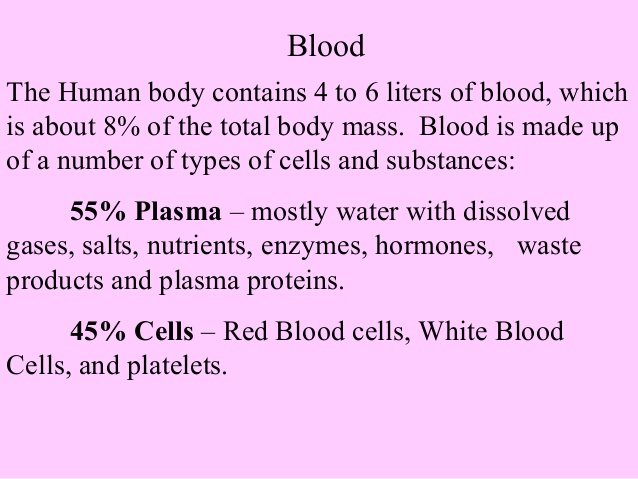
(1) The Liquid Part:
The liquid part is called the plasma. The plasma is watery and contains food substances and waste products in solution.

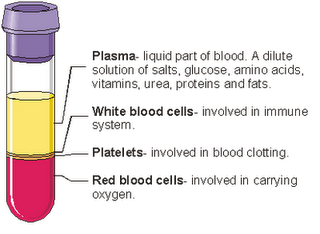
(2) The Solid Part: The solid part is made up of:
(a) Red blood cells:
Red blood cells are small and circular in shape. They are numerous and contain haemoglobin (a protein). They are red in colour when in large number. They have no nuclei.
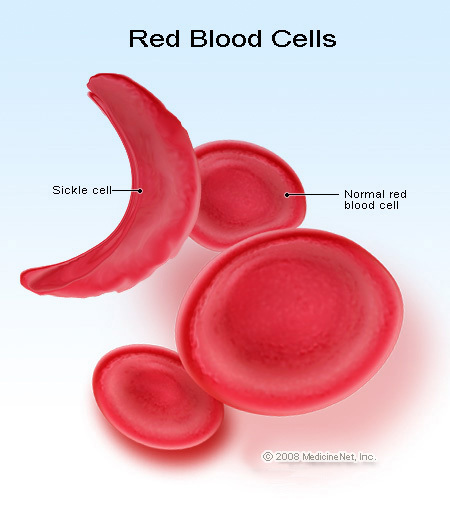
(b) White blood cells:
White blood cells are larger but fewer in number. They have irregular shape and are colourless. They have nuclei.
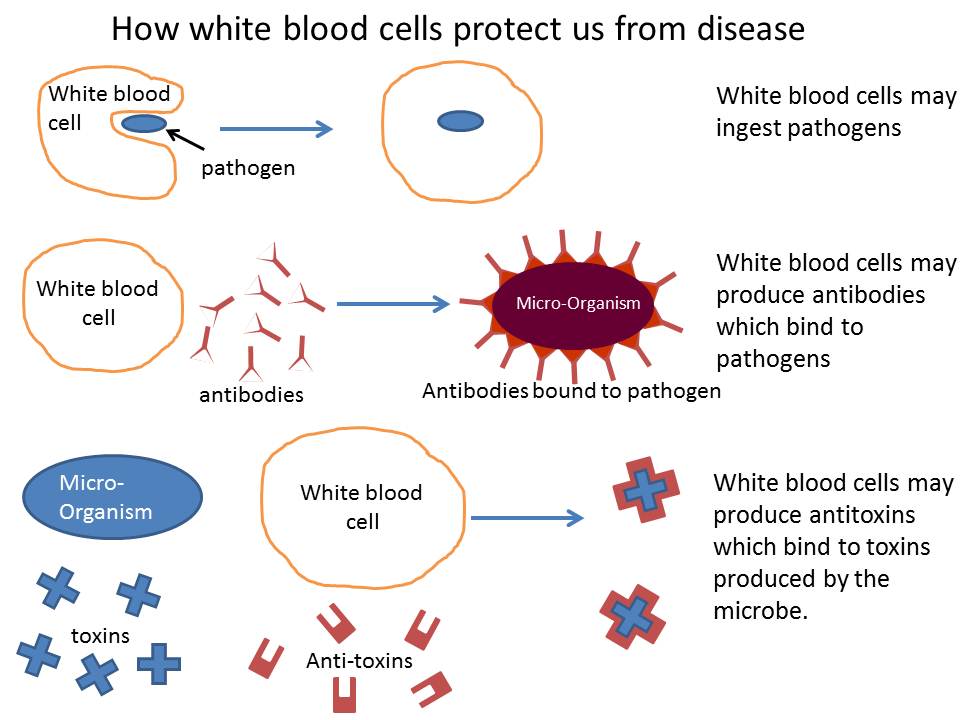
(c) Platelets:
These are round bodies in the blood. They are fewer, smaller and have no nuclei.

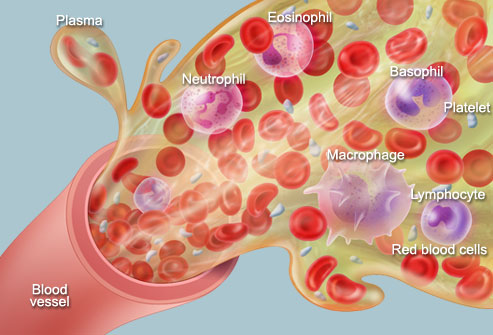
EVALUATION:
What is the human circulatory system?
What are the parts of the human circulatory system?
What are the components in the solid part of the blood?
ASSIGNMENT:
Draw and fully label the human heart.
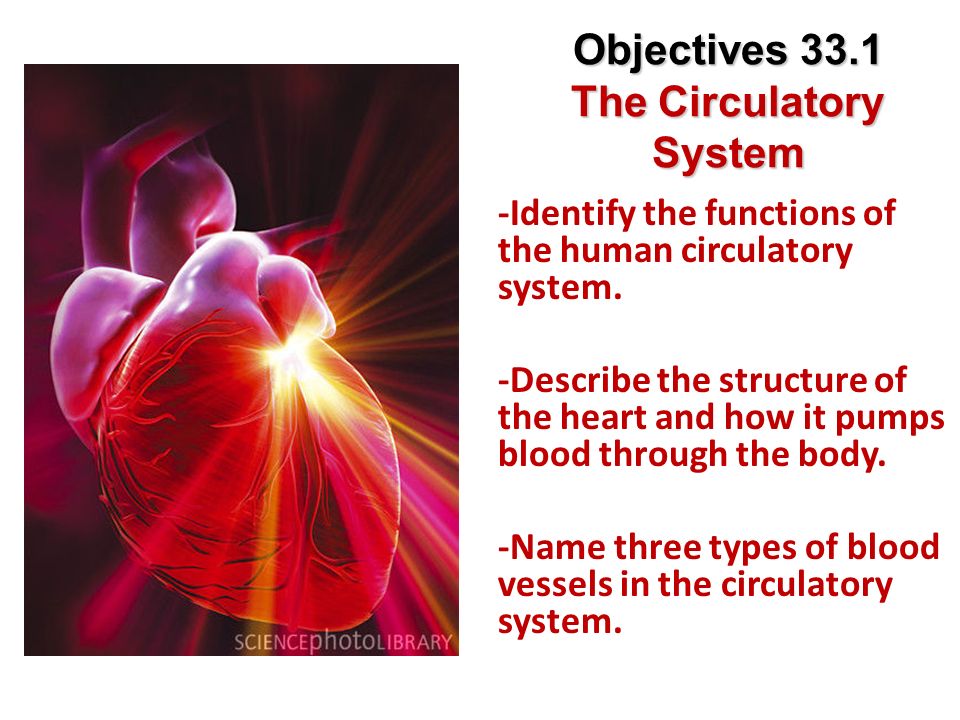
further studies
http://kidshealth.org/kid/htbw/heart.html
http://kidshealth.org/teen/your_body/bo ... heart.html
practice test
http://kidshealth.org/kid/htbw/_bfs_CSquizsource.html
http://www.vtaide.com/png/blood-mcq.htm
http://www.softschools.com/quizzes/scie ... iz758.html
http://www.quizmoz.com/quizzes/Biologic ... m-Quiz.asp
LESSON 24
TOPIC: BLOOD GROUPS
OBJECTIVES: At the end of the lesson, the students should be able to:
1. Mention the human blood groups.
2. Enumerate the three major blood vessels as well as their functions.
3. Describe the heart.
4. State the functions of the heart.
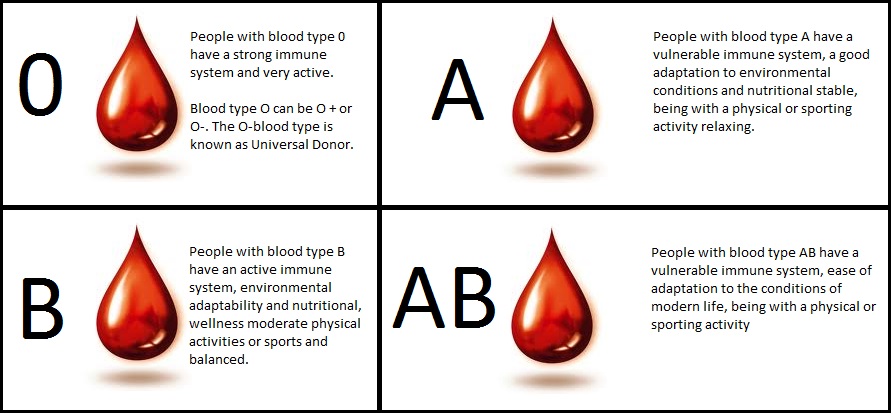
CONTENT:
Human blood is classified into four major groups: A, B. AB, O. each group has its own protein and antibody which makes it different from any other group. The antibody in one group may cause the blood of another group to clot and die. That is why doctors conduct tests before giving blood transfusion.
BLOOD VESSELS
There are three major types of blood vessels which are:
(1) Capillaries:
The capillaries allow the direct passage of solutions through their tiny permeable cells.
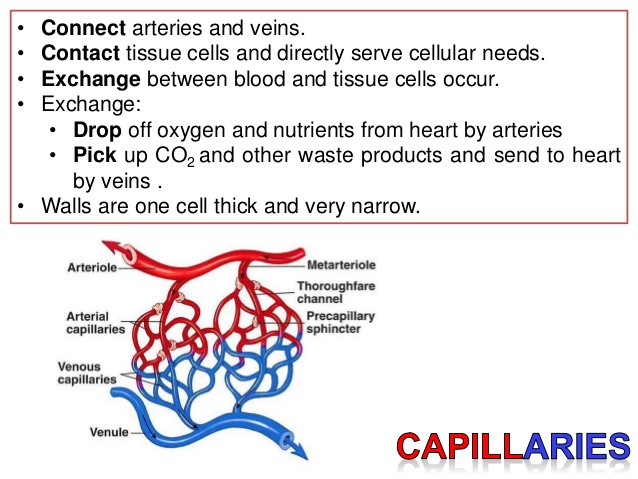
(2) Veins:
The veins carry blood from the body to the heart.

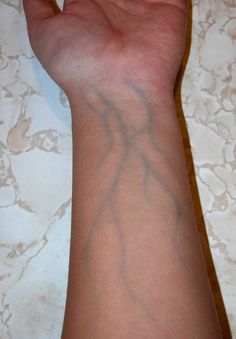
(3) Arteries:
The arteries carry blood from the heart to other parts of the body.
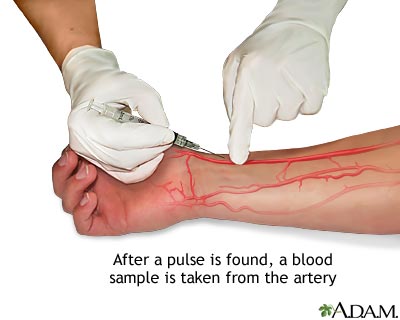
THE HEART
The human heart is muscular, shaped like a cone and made up of four chambers (two upper and two lower). The upper chambers are called AURICLES while the lower chambers are called VENTRICLES. The left ventricle is the most muscular.
The heart is connected to all parts of the body by means of blood vessels. The heart pumps blood and the blood also collects waste products from all cells. Blood leaves the heart through the left ventricle to all parts of the body and comes back to the heart through the right auricle.
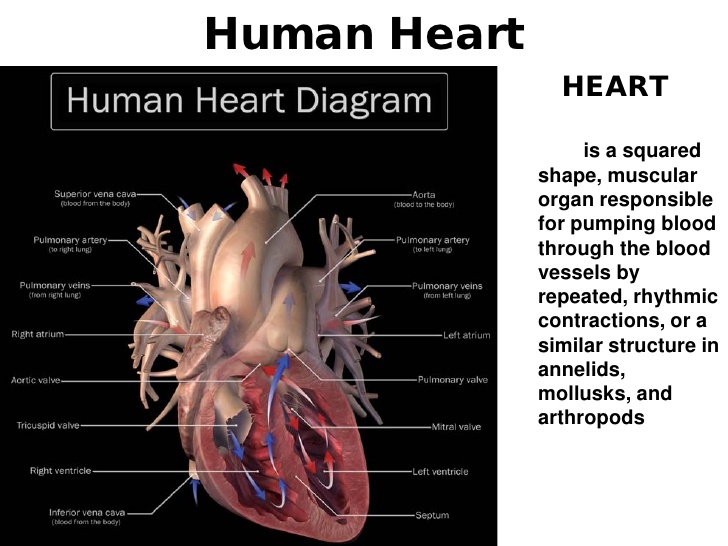
EVALUATION:
What are the human blood groups?
What are the 3 major blood vessels? What are their functions?
What is the heart?
What are the functions of the heart?
ASSIGNMENT:
Differentiate between HIV and AIDS.
further studies
http://kidshealth.org/teen/your_body/me ... types.html
http://www.health24.com/medical/Disease ... .asp#art_2
http://www.sciencekids.co.nz/sciencefac ... blood.html
practice test
http://www.quibblo.com/quiz/1zhzBTQ/Wha ... Blood-Type
http://samson.kean.edu/~breid/demo18.htm
http://dimdima.com/khazana/Quiz/show_qu ... Blood+Quiz
LESSON 25
TOPIC: BLOOD DEFECTS AND DISEASES
OBJECTIVES: At the end of the lesson, the students should be able to:
1. Explain the causes of sickle cell anaemia.
2. Identify the blood defects that are hereditary.
3. Mention the importance of blood tests.
CONTENT:
1. SICKLE CELL ANAEMIA:
This is a hereditary disease passed from parents to offspring. The red blood cells do not have normal haemoglobin. The red blood cells are shaped like a sickle and are therefore unable to carry oxygen needed in the body. The cells die quickly making the sufferers weak most of the time. There is no cure for it now. It can only be managed with medical care.

2. LEUKEMIA:
This is a carrier of the blood. The red blood cells are reduced abnormally and the patient usually dies of weakness.
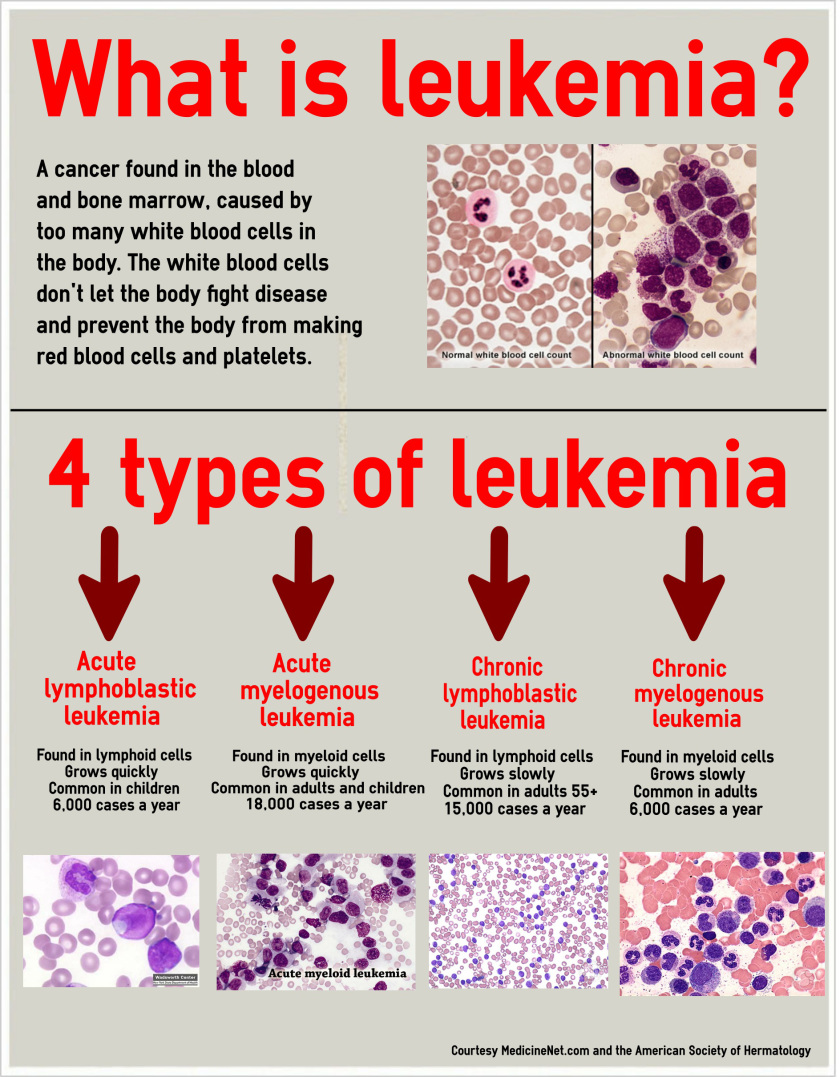
3. HAEMOPHILIA:
The sufferers usually bleed to death from injuries because their blood cannot clot like normal blood. It is hereditary.
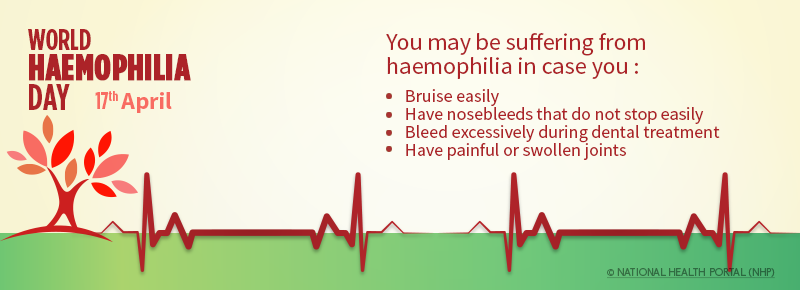
4. HIV/AIDS:
HIV means Human Immune Deficiency Virus causes the disease AIDS ( Acquired Immuno Deficiency Syndrome). HIV attacks human beings through the blood, the HIV virus destroy the white blood cell, damage the body's defense mechanism, therefore exposing the body to all sorts of disease.

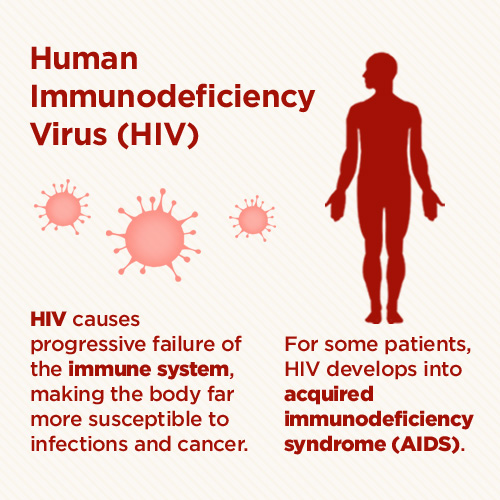
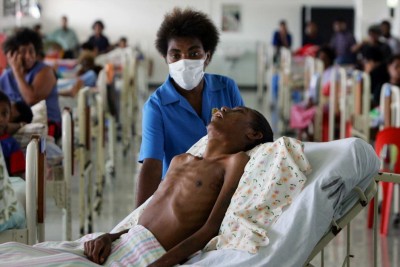
IMPORTANCE OF BLOOD TESTS
1. To find out the health status of an individual.
2. To identify the disease(s) affecting the individual and the organism(s) causing such diseases.
3. To determine the blood group of an individual.
4. To confirm pregnancy.
5. To screen blood before transfusion.
EVALUATION:
What is the cause of sickle cell anaemia?
Which blood defects are hereditary?
What is the importance of blood tests?
ASSIGNMENT:
How can a sickle cell infected student be assisted in school?
further studies
http://www.nlm.nih.gov/medlineplus/blooddisorders.html
http://www.ebi.ac.uk/2can/disease/blood/index.html
practice test
http://www.funtrivia.com/playquiz/quiz2 ... 4e6e8.html
http://health.howstuffworks.com/human-b ... -quiz1.htm
http://www.cdc.gov/ncbddd/sicklecell/quiz/
http://www.nhlbi.nih.gov/health//dci/Browse/Blood.html
http://www.funtrivia.com/newflash/trivia.cfm?qid=264708
LESSON 26
Topic: ENVIRONMENTAL POLLUTION (SOIL)
Content: 1 Definition of soil pollution
2 Types of soil pollutants
3 Effects of soil pollution
4 Control of soil pollution
DEFINITION OF SOIL POLLUTION
The main cause of pollution is the dumping of refuse on the soil and the over use of chemicals on land by agriculture.
Soil pollution occurs when soil contains waste materials in amounts which are harmful to living things in it.
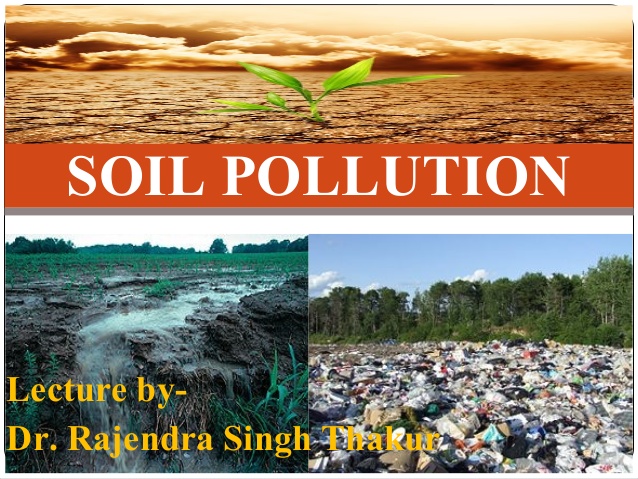
Soil
Soil is a vital part of life on Earth. Without good soil, we could not grow food. This farmer is plowing the soil before planting crop.
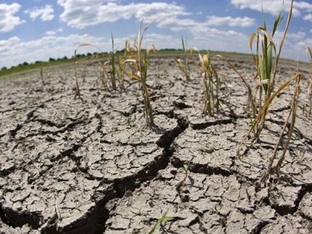
Garbage
People today create a lot of waste from all the products they use. Much of this garbage is dumped in landfills, as shown here, or burned. Sometimes these methods pollute the surrounding air, soil, and water
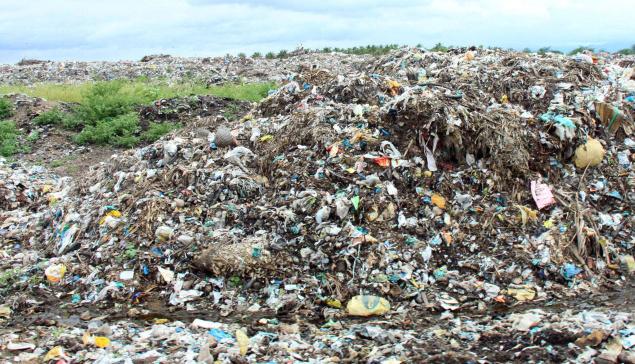
TYPES OF SOIL POLLUTANTS
Soil pollutants are the waste materials that affect the quality of our soil. These are
1. AGRICULTURAL POLLUTANTS: When farmers clear land for growing crops, the soil is exposed to the weather. In drier climate, the soil dries out and the wind easily carries it away. Also, in areas where soil is exposed to rapidly flowing water, large amounts of soil can be carried away quickly.
i. Too much use of fertilizers
ii. Over use of pesticides and herbicides
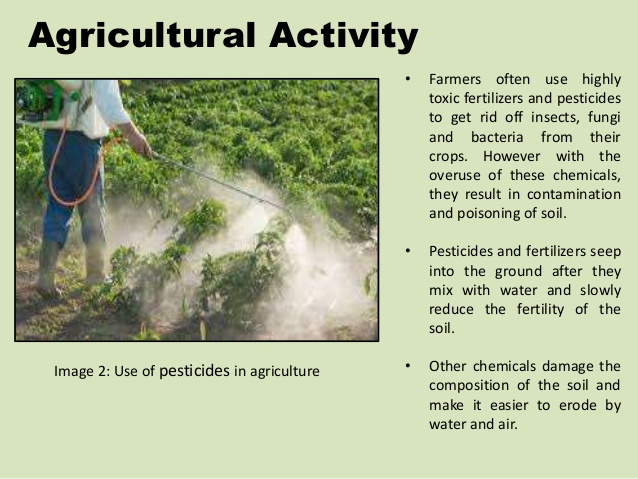
2. CHEMICAL POLLUTANTS: Industrial wastes and chemicals deposited on the soil such as Lead compounds, fertilizers, pesticides, etc. These are harmful to the soil when they in excess.
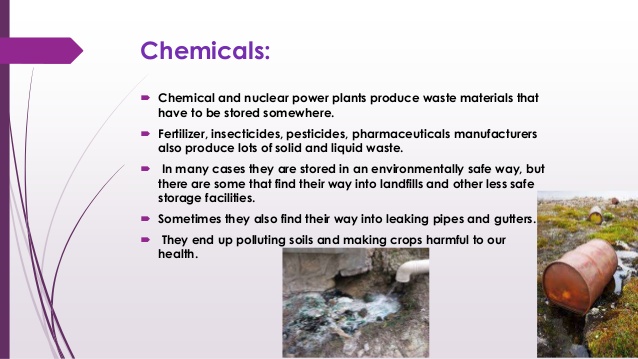
3. IRRIGATION: In very dry season, irrigation can poison the soil by dissolving the salt which is left after water evaporation on the topsoil. Most plants cannot grow in topsoil that contains too much salt.
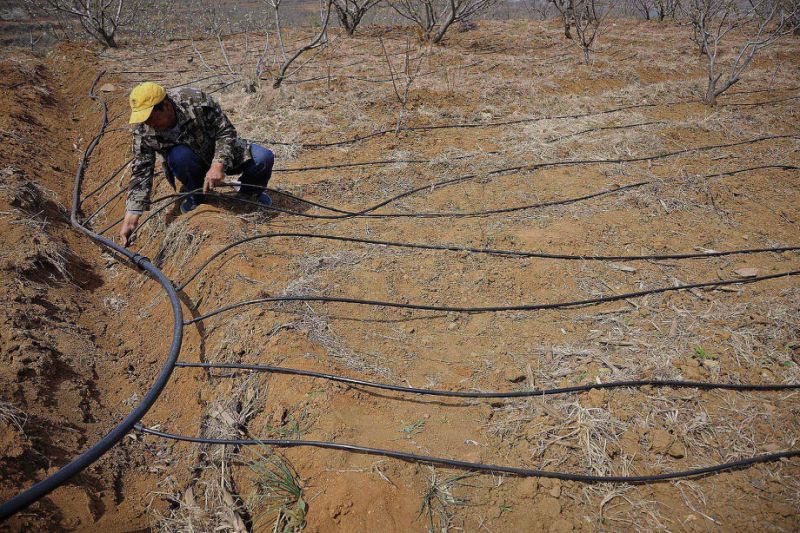
4. NON-BIODEGRADABLE MATERIALS: These are materials that are unable to broken down by living things . It is dangerous to the soil, e.g. plastics, nylon, bottles, etc.

EVALUATION
1. Define soil pollution.
2. List six soil pollutants
LESSON 27
EFFECTS OF SOIL POLLUTION
1. Soil pollutants will not provide habitat, nourishment and protection for plants and animals, i.e. it will kill soil organisms.
2. Soil pollutants reduce nutrients values.
3. Farmers will not be able to earn their living because they won’t have enough farm products for sale.
4. Soil pollutants will lead to poor yield
5. The economy of a country like Nigeria will not grow because exportation of cocoa is still in progress.
6. Discarded materials make the land /environment untidy, unattractive and unsafe for human beings.
7. During rainfall, runoff water could pass through refuse dumps and flow into rivers and uncovered wells; causing water pollution.
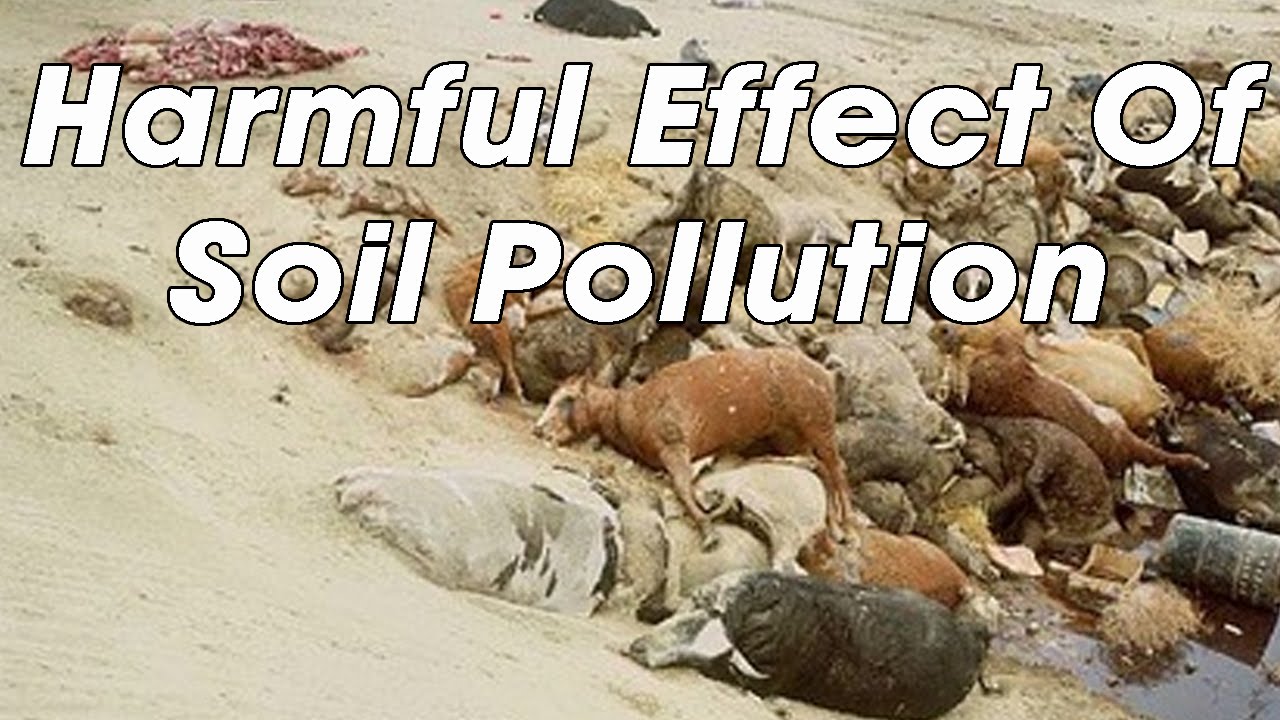
CONTROL OF SOIL POLLUTION
1. Recycling of non-biodegradable materials which helps to reduce the need for raw materials .
2. Old plastics should be recycled to make new ones.
3. Manufacturers can reuse materials to make new products.
4. Waste materials should be properly disposed off, by controlled burning.
5. Government should barn people from carelessly dumping refuse in an unauthorized area.
6. Regular environmental sanitation should be encouraged all the states of the federation.
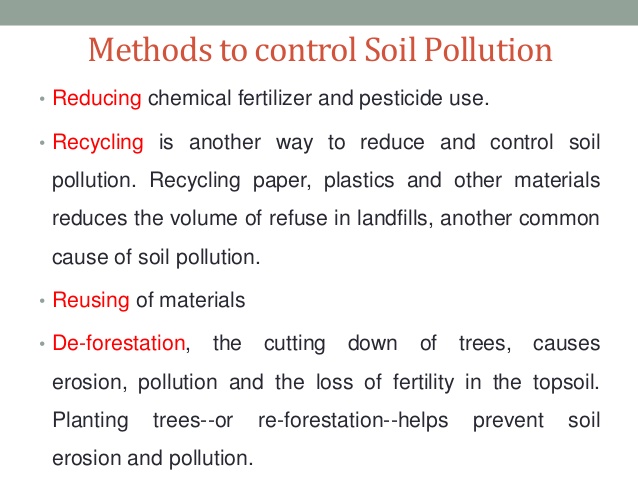
EVALUATION
1. State five effects of soil pollution
2. Suggest five ways/methods by which soil pollution can be controlled.
ASSIGNMENT
Write short notes on drug abuse
READING ASSIGNMENT
Nigerian Basic Science Project (STAN) BK2 Page 12.
Further Studies 1
Further Studies 2
Further Studies 3
Further Studies 4
Practice Test 1
Practice Test 2
Practice Test 5
TOPIC: THE CIRCULATORY SYSTEM (HUMAN)
OBJECTIVE: At the end of the lesson, the students should be able to:
1. Define the human circulatory system.
2. Mention parts of the human circulatory system.
3. Describe the components in the solid part of the blood.

CONTENT:
The circulatory system consists of the parts of the body which work together to ensure the circulation of oxygen, digested food substances as well as transportation of waste products from one part of the body to another.

PARTS OF THE HUMAN CIRCULATORY SYSTEM
The circulatory system is made up of the blood, the heart and the blood vessels.
THE BLOOD
In human beings, blood is the liquid medium that carries materials around the body. These materials are oxygen from the lungs, digested food substances and waste products.


STRUCTURE OF THE BLOOD
The human blood consists of two parts:

(1) The Liquid Part:
The liquid part is called the plasma. The plasma is watery and contains food substances and waste products in solution.


(2) The Solid Part: The solid part is made up of:
(a) Red blood cells:
Red blood cells are small and circular in shape. They are numerous and contain haemoglobin (a protein). They are red in colour when in large number. They have no nuclei.

(b) White blood cells:
White blood cells are larger but fewer in number. They have irregular shape and are colourless. They have nuclei.

(c) Platelets:
These are round bodies in the blood. They are fewer, smaller and have no nuclei.


EVALUATION:
What is the human circulatory system?
What are the parts of the human circulatory system?
What are the components in the solid part of the blood?
ASSIGNMENT:
Draw and fully label the human heart.

further studies
http://kidshealth.org/kid/htbw/heart.html
http://kidshealth.org/teen/your_body/bo ... heart.html
practice test
http://kidshealth.org/kid/htbw/_bfs_CSquizsource.html
http://www.vtaide.com/png/blood-mcq.htm
http://www.softschools.com/quizzes/scie ... iz758.html
http://www.quizmoz.com/quizzes/Biologic ... m-Quiz.asp
LESSON 24
TOPIC: BLOOD GROUPS
OBJECTIVES: At the end of the lesson, the students should be able to:
1. Mention the human blood groups.
2. Enumerate the three major blood vessels as well as their functions.
3. Describe the heart.
4. State the functions of the heart.

CONTENT:
Human blood is classified into four major groups: A, B. AB, O. each group has its own protein and antibody which makes it different from any other group. The antibody in one group may cause the blood of another group to clot and die. That is why doctors conduct tests before giving blood transfusion.
BLOOD VESSELS
There are three major types of blood vessels which are:
(1) Capillaries:
The capillaries allow the direct passage of solutions through their tiny permeable cells.

(2) Veins:
The veins carry blood from the body to the heart.


(3) Arteries:
The arteries carry blood from the heart to other parts of the body.

THE HEART
The human heart is muscular, shaped like a cone and made up of four chambers (two upper and two lower). The upper chambers are called AURICLES while the lower chambers are called VENTRICLES. The left ventricle is the most muscular.
The heart is connected to all parts of the body by means of blood vessels. The heart pumps blood and the blood also collects waste products from all cells. Blood leaves the heart through the left ventricle to all parts of the body and comes back to the heart through the right auricle.

EVALUATION:
What are the human blood groups?
What are the 3 major blood vessels? What are their functions?
What is the heart?
What are the functions of the heart?
ASSIGNMENT:
Differentiate between HIV and AIDS.
further studies
http://kidshealth.org/teen/your_body/me ... types.html
http://www.health24.com/medical/Disease ... .asp#art_2
http://www.sciencekids.co.nz/sciencefac ... blood.html
practice test
http://www.quibblo.com/quiz/1zhzBTQ/Wha ... Blood-Type
http://samson.kean.edu/~breid/demo18.htm
http://dimdima.com/khazana/Quiz/show_qu ... Blood+Quiz
LESSON 25
TOPIC: BLOOD DEFECTS AND DISEASES
OBJECTIVES: At the end of the lesson, the students should be able to:
1. Explain the causes of sickle cell anaemia.
2. Identify the blood defects that are hereditary.
3. Mention the importance of blood tests.
CONTENT:
1. SICKLE CELL ANAEMIA:
This is a hereditary disease passed from parents to offspring. The red blood cells do not have normal haemoglobin. The red blood cells are shaped like a sickle and are therefore unable to carry oxygen needed in the body. The cells die quickly making the sufferers weak most of the time. There is no cure for it now. It can only be managed with medical care.

2. LEUKEMIA:
This is a carrier of the blood. The red blood cells are reduced abnormally and the patient usually dies of weakness.

3. HAEMOPHILIA:
The sufferers usually bleed to death from injuries because their blood cannot clot like normal blood. It is hereditary.

4. HIV/AIDS:
HIV means Human Immune Deficiency Virus causes the disease AIDS ( Acquired Immuno Deficiency Syndrome). HIV attacks human beings through the blood, the HIV virus destroy the white blood cell, damage the body's defense mechanism, therefore exposing the body to all sorts of disease.



IMPORTANCE OF BLOOD TESTS
1. To find out the health status of an individual.
2. To identify the disease(s) affecting the individual and the organism(s) causing such diseases.
3. To determine the blood group of an individual.
4. To confirm pregnancy.
5. To screen blood before transfusion.
EVALUATION:
What is the cause of sickle cell anaemia?
Which blood defects are hereditary?
What is the importance of blood tests?
ASSIGNMENT:
How can a sickle cell infected student be assisted in school?
further studies
http://www.nlm.nih.gov/medlineplus/blooddisorders.html
http://www.ebi.ac.uk/2can/disease/blood/index.html
practice test
http://www.funtrivia.com/playquiz/quiz2 ... 4e6e8.html
http://health.howstuffworks.com/human-b ... -quiz1.htm
http://www.cdc.gov/ncbddd/sicklecell/quiz/
http://www.nhlbi.nih.gov/health//dci/Browse/Blood.html
http://www.funtrivia.com/newflash/trivia.cfm?qid=264708
LESSON 26
Topic: ENVIRONMENTAL POLLUTION (SOIL)
Content: 1 Definition of soil pollution
2 Types of soil pollutants
3 Effects of soil pollution
4 Control of soil pollution
DEFINITION OF SOIL POLLUTION
The main cause of pollution is the dumping of refuse on the soil and the over use of chemicals on land by agriculture.
Soil pollution occurs when soil contains waste materials in amounts which are harmful to living things in it.

Soil
Soil is a vital part of life on Earth. Without good soil, we could not grow food. This farmer is plowing the soil before planting crop.

Garbage
People today create a lot of waste from all the products they use. Much of this garbage is dumped in landfills, as shown here, or burned. Sometimes these methods pollute the surrounding air, soil, and water

TYPES OF SOIL POLLUTANTS
Soil pollutants are the waste materials that affect the quality of our soil. These are
1. AGRICULTURAL POLLUTANTS: When farmers clear land for growing crops, the soil is exposed to the weather. In drier climate, the soil dries out and the wind easily carries it away. Also, in areas where soil is exposed to rapidly flowing water, large amounts of soil can be carried away quickly.
i. Too much use of fertilizers
ii. Over use of pesticides and herbicides

2. CHEMICAL POLLUTANTS: Industrial wastes and chemicals deposited on the soil such as Lead compounds, fertilizers, pesticides, etc. These are harmful to the soil when they in excess.

3. IRRIGATION: In very dry season, irrigation can poison the soil by dissolving the salt which is left after water evaporation on the topsoil. Most plants cannot grow in topsoil that contains too much salt.

4. NON-BIODEGRADABLE MATERIALS: These are materials that are unable to broken down by living things . It is dangerous to the soil, e.g. plastics, nylon, bottles, etc.

EVALUATION
1. Define soil pollution.
2. List six soil pollutants
LESSON 27
EFFECTS OF SOIL POLLUTION
1. Soil pollutants will not provide habitat, nourishment and protection for plants and animals, i.e. it will kill soil organisms.
2. Soil pollutants reduce nutrients values.
3. Farmers will not be able to earn their living because they won’t have enough farm products for sale.
4. Soil pollutants will lead to poor yield
5. The economy of a country like Nigeria will not grow because exportation of cocoa is still in progress.
6. Discarded materials make the land /environment untidy, unattractive and unsafe for human beings.
7. During rainfall, runoff water could pass through refuse dumps and flow into rivers and uncovered wells; causing water pollution.

CONTROL OF SOIL POLLUTION
1. Recycling of non-biodegradable materials which helps to reduce the need for raw materials .
2. Old plastics should be recycled to make new ones.
3. Manufacturers can reuse materials to make new products.
4. Waste materials should be properly disposed off, by controlled burning.
5. Government should barn people from carelessly dumping refuse in an unauthorized area.
6. Regular environmental sanitation should be encouraged all the states of the federation.

EVALUATION
1. State five effects of soil pollution
2. Suggest five ways/methods by which soil pollution can be controlled.
ASSIGNMENT
Write short notes on drug abuse
READING ASSIGNMENT
Nigerian Basic Science Project (STAN) BK2 Page 12.
Further Studies 1
Further Studies 2
Further Studies 3
Further Studies 4
Practice Test 1
Practice Test 2
Practice Test 5
WEEK 7
LESSON 28
TOPIC: THE EXCRETORY SYSTEM (HUMAN)
OBJECTIVE: At the end of the lesson, the students should be able to:
1. Define excretion.
2. Define excretory wastes.
3. Define egestion.
4. Mention the excretory organs and their functions.

CONTENT:
Excretion is the process by which excretory wastes are removed from the body. Excretory wastes are waste products that are released during respiration and other activities of the body. Excretory wastes are poisonous and therefore they must be removed from the body.
Note: feaces is not an excretory waste because it consist of undigested food materials from the digested system, passed out in form of semi-solids through the anus.
The process by which feaces is removed from the body is called EGESTION.
THE HUMAN EXCRETORY ORGANS
The excretory organs are:
( 1) liver (2) kidney (3) skin (4) lungs
THE LIVER AND ITS FUNCTIONS
The liver changes the chemical composition of some substances that are harmful to the body into less or non harmful forms.
The liver converts dead red blood cells into bile that is useful in digestion. It also converts excess amino acids into ammonia and urea which can easily be removed from the body through the kidney.
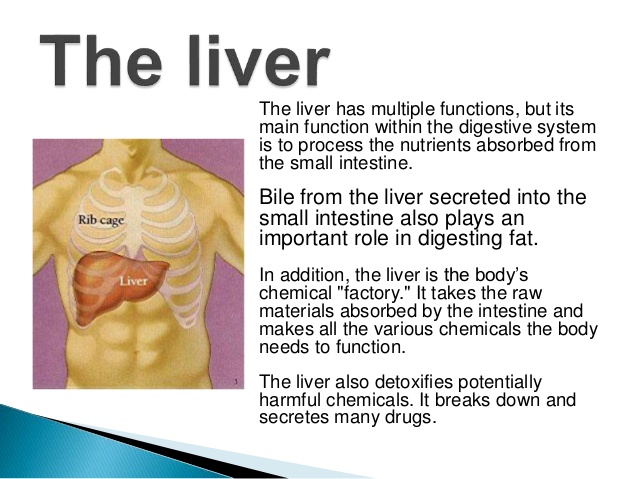
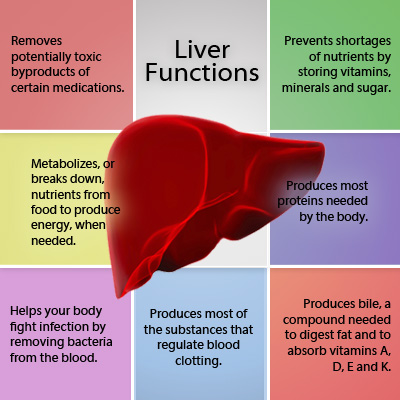
THE KIDNEY AND ITS FUNCTIONS
Every human being has two kidneys at the back of the abdomen. One on the right and the other at the left. The kidneys are bean shaped and contain nephrons (kidney tubules).
The kidney is connected to the body's circulatory system. Blood carrying excretory products from all parts of the body is purified in the kidney. Excess mineral salts, excess water as well as urea flow into the space in the tubule, some are reabsorbed in the tubule. The liquid containing excess salts, excess water and urea is passed into the bladder as urine. Urine is passed out of the body from the bladder through the urethra. The kidney is made up of 3 regions: (1) the cortex (2) the medulla (3) the pelvis.
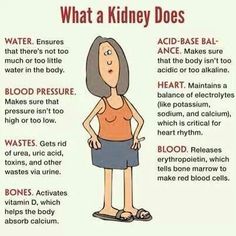
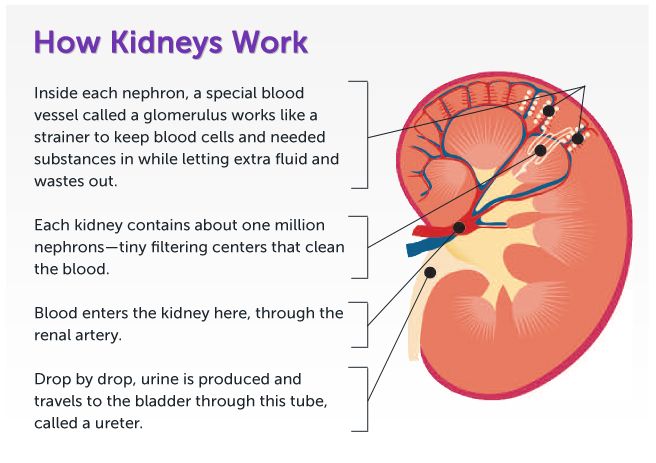
THE SKIN AND ITS FUNCTIONS
The human skin is made up of two layers: (1) epidermis (2) dermis

EVALUATION:
What is excretion?
What are excretory wastes?
What is egestion?
What are the excretory organs? What are their functions?
ASSIGNMENT:
Draw and fully label the human kidney.
further studies
http://www.mykidsway.com/human-anatomy/ ... ystem.html
http://www.kidsbiology.com/human_biolog ... system.php
http://www.lake-mills.k12.ia.us/msource ... System.htm
http://www.ehow.com/about_5435478_funct ... ystem.html
practice test
http://kidshealth.org/kid/htbw/_bfs_USquizsource.html
http://www.syvum.com/cgi/online/mult.cg ... excr.tdf?0
LESSON 29
TOPIC: THE NEED FOR EXCRETION
OBJECTIVE: At the end of the lesson, the students should be able to:
1. Describe the epidermis and dermis.
2. Mention the excretory product from the lungs.
3. State the need for excretion.
CONTENT:
THE EPIDERMIS:
This is made up of the dead horny layer, granular layer and the sensitive malpighian layer. These protect the inner structures.
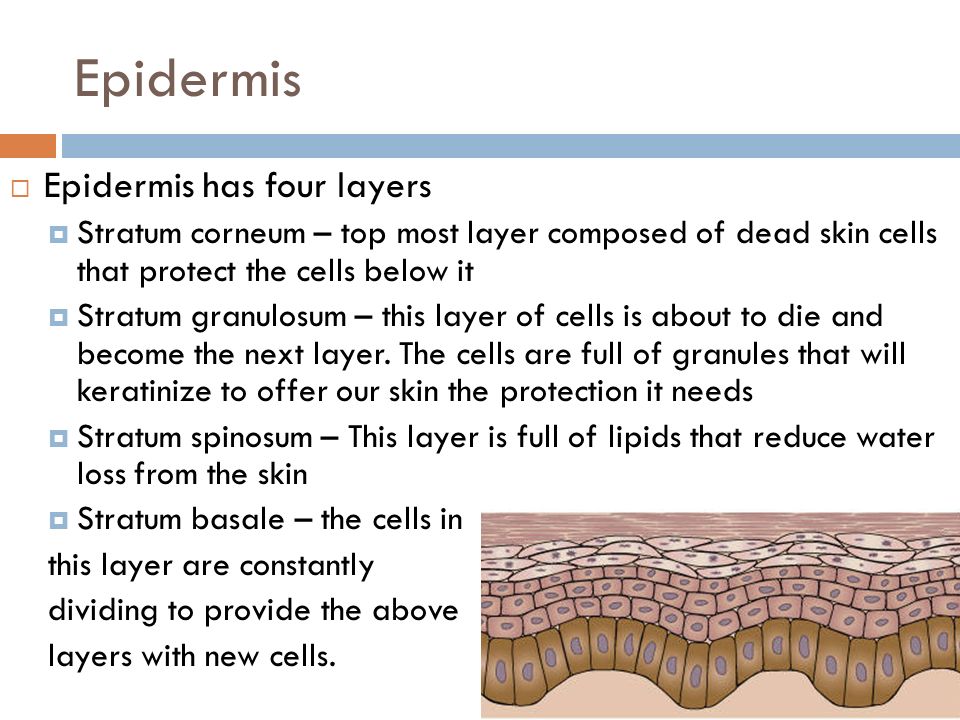
THE DERMIS:
This contains the sweat glands, sweat ducts and the sweat pores that are directly involved in excretion of sweat from the body.
The sweat gland collects excess water, excess salt and urea to form a salty liquid called the sweat. The passing out of the sweat through the skin helps to control the temperature of the body. It causes cooling. But if the sweat dries on your skin, it may block the sweat pores.

THE LUNGS AND ITS FUNCTIONS
The lungs remove carbon (IV) oxide that results from cells respiration in the body. Carbon ( IV) oxide dissolves in the blood plasma and is carried to the lungs through the blood vessels.
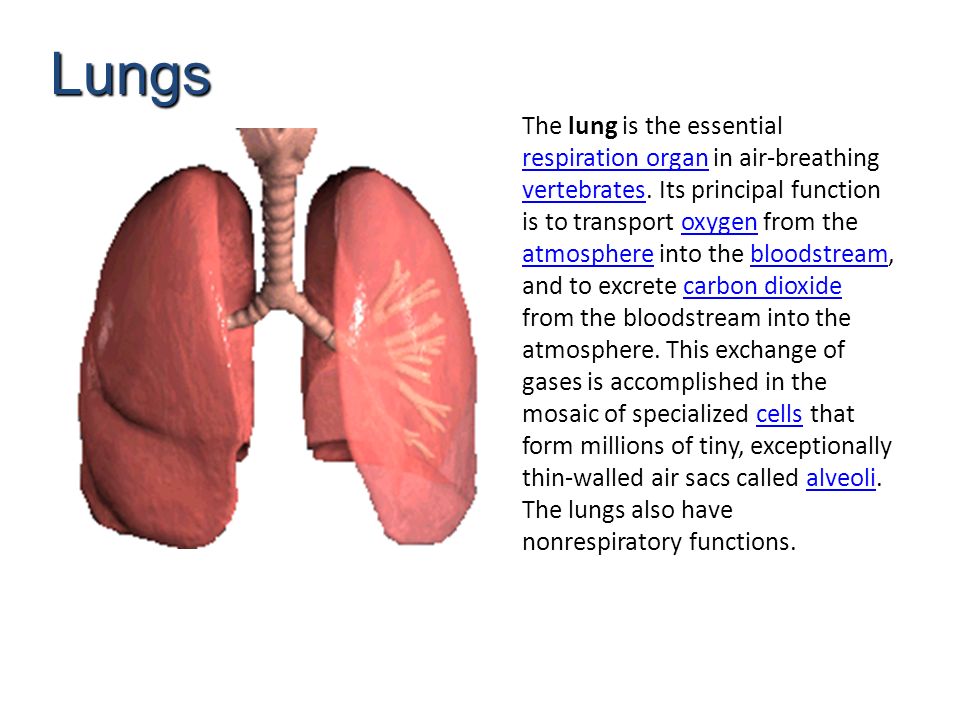
THE NEED FOR EXCRETION
If excretion does not take place, wastes accumulate in the body and may poison or destroy the body. This will consequently result in sickness and eventual death. If urine is not removed from the body, the results in abnormal swelling of the body parts that can lead to death if not properly managed through the advanced process of dialysis or kidney transplant.
watch videos
https://youtu.be/XF_lF3J4ZKs
https://youtu.be/EhnRhfFLyOg
EVALUATION:
What are the epidermis and dermis?
What is the excretory product from the lungs?
Why is excretion needed?
ASSIGNMENT:
List three waste products and the organs of their excretion.
further studies
http://www.helium.com/items/1858787-pro ... human-body
http://www.biology4kids.com/files/syste ... etory.html
practice test
http://www.softschools.com/quizzes/biol ... iz889.html
http://chemistry.about.com/library/weekly/bl090703a.htm
http://www.proprofs.com/quiz-school/qui ... &quesnum=1
LESSON 30
TOPIC: DRUG ABUSE II
Contents: (i) Methods of Drug Use
(ii) Common ways of misusing drugs
(iii)Social Risk Factors in Drug abuse
Sub-Topic I: Methods of Drug use
The taking of a drug for its medically intended purpose, following appropriate amount, frequency, strength and manner is referred to as drug use. Methods used by drug addict to introduce drugs into the body include the following:
I. Ingestion (swallowing): Examples of drugs used in this form are capsules, tablets and syrups
II. Inhalation: This is the entrance through the respiratory system. Examples of such drugs (inhalants/ anesthetic gases) include aerosols, petroleum products, or solvents which include cocaine. These are taken to induce intoxication, excitement, aggression or hallucination.
III. Injection: This involves injecting drugs directly into the blood stream through the capillaries, arteries or veins. The drugs are inform of liquid (syrups) or powdered e.g. cocaine.
IV. Smoking: Drugs like marijuana (Indian hemp) are smoked either rolled in paper, leaf or put in a pipe.
V. Absorption through the Skin: The drugs used in this form are mild body cream either to treat or maintain the skin.
VI. Another method is by inserting the drug into one part of the body or another.
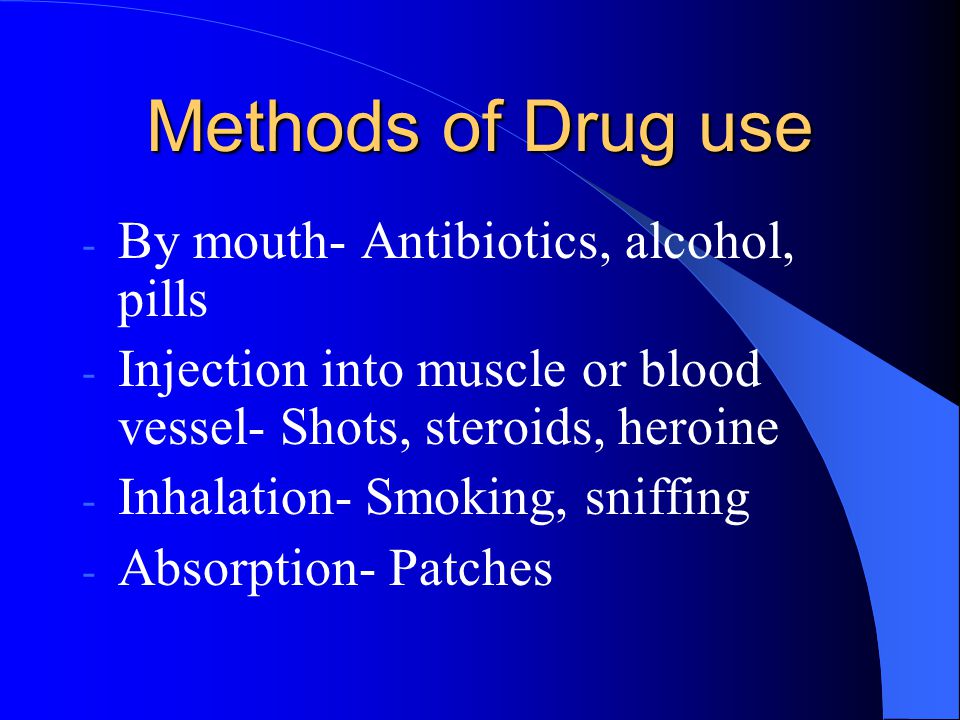
NB: The signs of drug abuse are :
Physical warning signs of drug abuse
• Bloodshot eyes, pupils larger or smaller than usual.
• Changes in appetite or sleep patterns. Sudden weight loss or weight gain.
• Deterioration of physical appearance, personal grooming habits.
• Unusual smells on breath, body, or clothing.
• Tremors, slurred speech, or impaired coordination.

Behavioral signs of drug abuse
• Drop in attendance and performance at work or school.
• Unexplained need for money or financial problems. May borrow or steal to get it.
• Engaging in secretive or suspicious behaviors.
• Sudden change in friends, favorite hangouts, and hobbies.
• Frequently getting into trouble (fights, accidents, illegal activities).
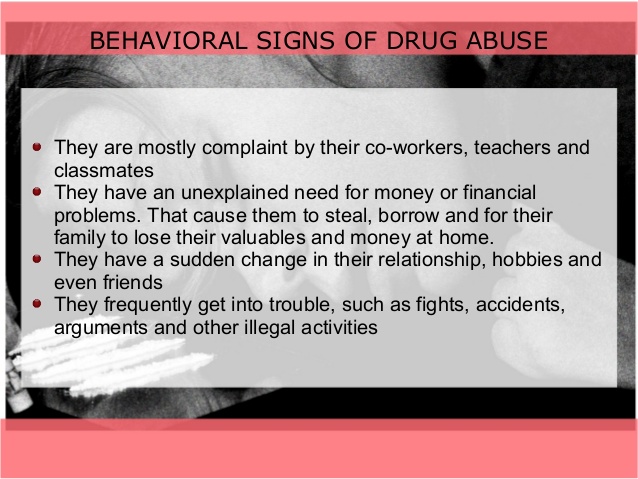
Psychological warning signs of drug abuse
• Unexplained change in personality or attitude.
• Sudden mood swings, irritability, or angry outbursts.
• Periods of unusual hyperactivity, agitation, or giddiness.
• Lack of motivation; appears lethargic or “spaced out.”
• Appears fearful, anxious, or paranoid, with no reason.
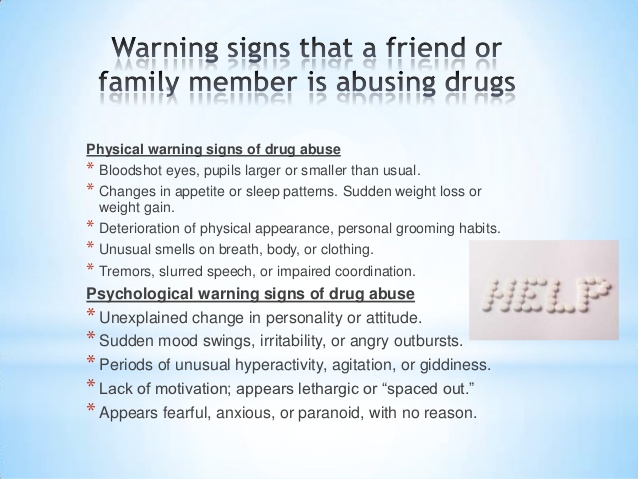
Common ways of misusing drugs.
Drug misuse is the taking of a drug for its medically-intended purpose, but not in the appropriate amount, frequency, strength, or manner. These are:
a. Misunderstanding of the use of prescribed drug
b. Sharing of prescribed drugs with friends or family
c. Taking of prescribed drug for the purpose not meant for.
d. Taking of the dosage other than that recommended
e. Taking drugs to induce sleep without prescription from qualified medical personnel
f. Taking drugs to gain confidence or boldness to commit crimes such as rape, suicide,
assault etc.
g. Taking drugs to attain full sexual satisfaction.
NB: When drugs are used in any of these ways, it can cause health problems.

Social Risk Factors in Drug abuse.
Risk factors are factors that increase a person’s chances for drug abuse. These factors include:
1. Drug availability
2. Poverty (being economically disadvantage)
3. Peer pressure
4. Early aggressive behavior
5. Lack of parental supervision
6. Experiencing family disruption
7. Having negative self esteem.

EVALUATION
1. Define drug misuse.
2. List four ways of misusing drugs
3. Mention five factors that increases the chances of drug abuse
4. Taking of drugs below or above the recommended dosage is…..of misusing drugs.
READING ASSIGNMENT
Read about Habitat from the Nigerian Basic Science Project, pupils’ textbook two pages 14-17
ASSIGNMENT
Discuss on common ways of using drugs and their resultant effects.
TOPIC: THE EXCRETORY SYSTEM (HUMAN)
OBJECTIVE: At the end of the lesson, the students should be able to:
1. Define excretion.
2. Define excretory wastes.
3. Define egestion.
4. Mention the excretory organs and their functions.

CONTENT:
Excretion is the process by which excretory wastes are removed from the body. Excretory wastes are waste products that are released during respiration and other activities of the body. Excretory wastes are poisonous and therefore they must be removed from the body.
Note: feaces is not an excretory waste because it consist of undigested food materials from the digested system, passed out in form of semi-solids through the anus.
The process by which feaces is removed from the body is called EGESTION.
THE HUMAN EXCRETORY ORGANS
The excretory organs are:
( 1) liver (2) kidney (3) skin (4) lungs
THE LIVER AND ITS FUNCTIONS
The liver changes the chemical composition of some substances that are harmful to the body into less or non harmful forms.
The liver converts dead red blood cells into bile that is useful in digestion. It also converts excess amino acids into ammonia and urea which can easily be removed from the body through the kidney.


THE KIDNEY AND ITS FUNCTIONS
Every human being has two kidneys at the back of the abdomen. One on the right and the other at the left. The kidneys are bean shaped and contain nephrons (kidney tubules).
The kidney is connected to the body's circulatory system. Blood carrying excretory products from all parts of the body is purified in the kidney. Excess mineral salts, excess water as well as urea flow into the space in the tubule, some are reabsorbed in the tubule. The liquid containing excess salts, excess water and urea is passed into the bladder as urine. Urine is passed out of the body from the bladder through the urethra. The kidney is made up of 3 regions: (1) the cortex (2) the medulla (3) the pelvis.


THE SKIN AND ITS FUNCTIONS
The human skin is made up of two layers: (1) epidermis (2) dermis

EVALUATION:
What is excretion?
What are excretory wastes?
What is egestion?
What are the excretory organs? What are their functions?
ASSIGNMENT:
Draw and fully label the human kidney.
further studies
http://www.mykidsway.com/human-anatomy/ ... ystem.html
http://www.kidsbiology.com/human_biolog ... system.php
http://www.lake-mills.k12.ia.us/msource ... System.htm
http://www.ehow.com/about_5435478_funct ... ystem.html
practice test
http://kidshealth.org/kid/htbw/_bfs_USquizsource.html
http://www.syvum.com/cgi/online/mult.cg ... excr.tdf?0
LESSON 29
TOPIC: THE NEED FOR EXCRETION
OBJECTIVE: At the end of the lesson, the students should be able to:
1. Describe the epidermis and dermis.
2. Mention the excretory product from the lungs.
3. State the need for excretion.
CONTENT:
THE EPIDERMIS:
This is made up of the dead horny layer, granular layer and the sensitive malpighian layer. These protect the inner structures.

THE DERMIS:
This contains the sweat glands, sweat ducts and the sweat pores that are directly involved in excretion of sweat from the body.
The sweat gland collects excess water, excess salt and urea to form a salty liquid called the sweat. The passing out of the sweat through the skin helps to control the temperature of the body. It causes cooling. But if the sweat dries on your skin, it may block the sweat pores.

THE LUNGS AND ITS FUNCTIONS
The lungs remove carbon (IV) oxide that results from cells respiration in the body. Carbon ( IV) oxide dissolves in the blood plasma and is carried to the lungs through the blood vessels.

THE NEED FOR EXCRETION
If excretion does not take place, wastes accumulate in the body and may poison or destroy the body. This will consequently result in sickness and eventual death. If urine is not removed from the body, the results in abnormal swelling of the body parts that can lead to death if not properly managed through the advanced process of dialysis or kidney transplant.
watch videos
https://youtu.be/XF_lF3J4ZKs
https://youtu.be/EhnRhfFLyOg
EVALUATION:
What are the epidermis and dermis?
What is the excretory product from the lungs?
Why is excretion needed?
ASSIGNMENT:
List three waste products and the organs of their excretion.
further studies
http://www.helium.com/items/1858787-pro ... human-body
http://www.biology4kids.com/files/syste ... etory.html
practice test
http://www.softschools.com/quizzes/biol ... iz889.html
http://chemistry.about.com/library/weekly/bl090703a.htm
http://www.proprofs.com/quiz-school/qui ... &quesnum=1
LESSON 30
TOPIC: DRUG ABUSE II
Contents: (i) Methods of Drug Use
(ii) Common ways of misusing drugs
(iii)Social Risk Factors in Drug abuse
Sub-Topic I: Methods of Drug use
The taking of a drug for its medically intended purpose, following appropriate amount, frequency, strength and manner is referred to as drug use. Methods used by drug addict to introduce drugs into the body include the following:
I. Ingestion (swallowing): Examples of drugs used in this form are capsules, tablets and syrups
II. Inhalation: This is the entrance through the respiratory system. Examples of such drugs (inhalants/ anesthetic gases) include aerosols, petroleum products, or solvents which include cocaine. These are taken to induce intoxication, excitement, aggression or hallucination.
III. Injection: This involves injecting drugs directly into the blood stream through the capillaries, arteries or veins. The drugs are inform of liquid (syrups) or powdered e.g. cocaine.
IV. Smoking: Drugs like marijuana (Indian hemp) are smoked either rolled in paper, leaf or put in a pipe.
V. Absorption through the Skin: The drugs used in this form are mild body cream either to treat or maintain the skin.
VI. Another method is by inserting the drug into one part of the body or another.

NB: The signs of drug abuse are :
Physical warning signs of drug abuse
• Bloodshot eyes, pupils larger or smaller than usual.
• Changes in appetite or sleep patterns. Sudden weight loss or weight gain.
• Deterioration of physical appearance, personal grooming habits.
• Unusual smells on breath, body, or clothing.
• Tremors, slurred speech, or impaired coordination.

Behavioral signs of drug abuse
• Drop in attendance and performance at work or school.
• Unexplained need for money or financial problems. May borrow or steal to get it.
• Engaging in secretive or suspicious behaviors.
• Sudden change in friends, favorite hangouts, and hobbies.
• Frequently getting into trouble (fights, accidents, illegal activities).

Psychological warning signs of drug abuse
• Unexplained change in personality or attitude.
• Sudden mood swings, irritability, or angry outbursts.
• Periods of unusual hyperactivity, agitation, or giddiness.
• Lack of motivation; appears lethargic or “spaced out.”
• Appears fearful, anxious, or paranoid, with no reason.

Common ways of misusing drugs.
Drug misuse is the taking of a drug for its medically-intended purpose, but not in the appropriate amount, frequency, strength, or manner. These are:
a. Misunderstanding of the use of prescribed drug
b. Sharing of prescribed drugs with friends or family
c. Taking of prescribed drug for the purpose not meant for.
d. Taking of the dosage other than that recommended
e. Taking drugs to induce sleep without prescription from qualified medical personnel
f. Taking drugs to gain confidence or boldness to commit crimes such as rape, suicide,
assault etc.
g. Taking drugs to attain full sexual satisfaction.
NB: When drugs are used in any of these ways, it can cause health problems.

Social Risk Factors in Drug abuse.
Risk factors are factors that increase a person’s chances for drug abuse. These factors include:
1. Drug availability
2. Poverty (being economically disadvantage)
3. Peer pressure
4. Early aggressive behavior
5. Lack of parental supervision
6. Experiencing family disruption
7. Having negative self esteem.

EVALUATION
1. Define drug misuse.
2. List four ways of misusing drugs
3. Mention five factors that increases the chances of drug abuse
4. Taking of drugs below or above the recommended dosage is…..of misusing drugs.
READING ASSIGNMENT
Read about Habitat from the Nigerian Basic Science Project, pupils’ textbook two pages 14-17
ASSIGNMENT
Discuss on common ways of using drugs and their resultant effects.
WEEK 8
LESSON 31
TOPIC: HUMAN GROWTH AND DEVELOPMENT (1)
OBJECTIVE: At the end of the lesson, the students should be able to:
1. Define growth.
2. Define development.
3. Mention the two periods of rapid growth.
CONTENT:
Growth is defined as the increase in size of an organism due to increase in the number of cells. Growth is a process in human beings that takes place from birth until they attain maturity. In growth, the body by itself makes its own new flesh to add to the existing one. Growth may be measured by increase in height or weight. Growth occurs mostly at night when we are asleep. Growth changes is the noticeable change in the body size over time.
Development is a series of orderly changes by which a living thing comes into maturity. These changes are different from growth. Development leads to transition from one stage of life to another, these stages are characterized by certain features. For example, infancy to childhood, adolescence to adulthood.
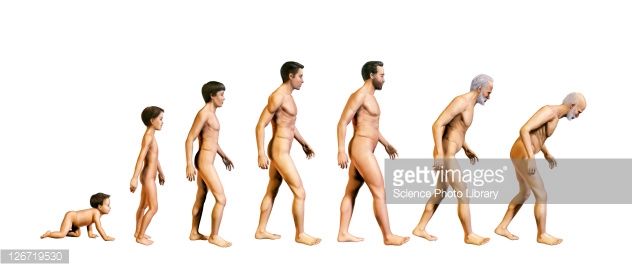
There are two periods of rapid growth. During this period, there is a remarkable change in the size and height of human beings.
These periods are:
1. From birth to two years.

2. From nine to sixteen years. (puberty stage).

EVALUATION:
What is growth?
What is development?
What are the two periods of rapid growth?
ASSIGNMENT:
List three growth changes in living things.
further studies
http://www.livestrong.com/article/28625 ... -children/
http://www.livestrong.com/article/10364 ... ges-human/
LESSON 32
TOPIC: INFANCY TO ADULTHOOD
OBJECTIVE: At the end of the lesson, the students should be able to:
1. Mention one development observed in the body.
2. Describe how food affects growth.
3. State how long we need to rest.
CONTENT:
Stages of Growth &Development
Baby:
Increase in height and muscle
Ability to sit, walk, run and appearance of teeth.
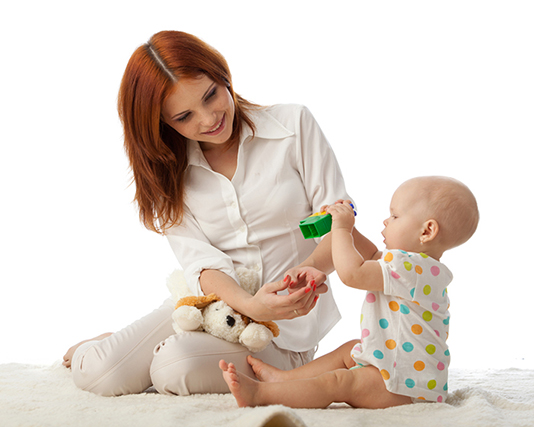
Childhood (from birth to puberty):
Increase in height and mass
Development of manual skills, playing football etc.

Adolescence: this is the stage before adulthood.
Increase in height and mass.
Development of:
Boys: thick muscles, deep voice, pubic hair, facial hair. Ability to produce sperm.
Girls: rounded face, increased buttocks, pubic hair, thick thighs, ability to produce eggs.
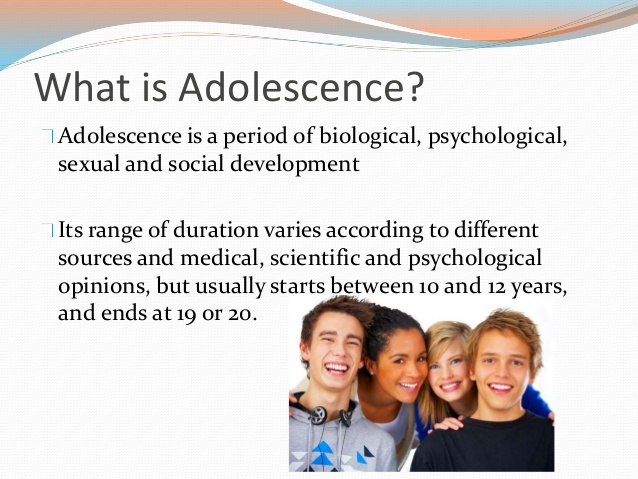

Adulthood: this is the stage of full maturity.
Growth stops
Changes in the body continue, organs begin to weaken.

FACTORS THAT AFFECT GROWTH
The growth of a human being is determined by certain factors which are:
1. FOOD/NUTRITION:
Food nutrients are very essential for the proper growth of the body. All the classes of food are present in a balanced diet and must be eaten at all times for growth to be continuous. Absence or lack of each class of food will result in deficiency diseases which retard the growth of the body.
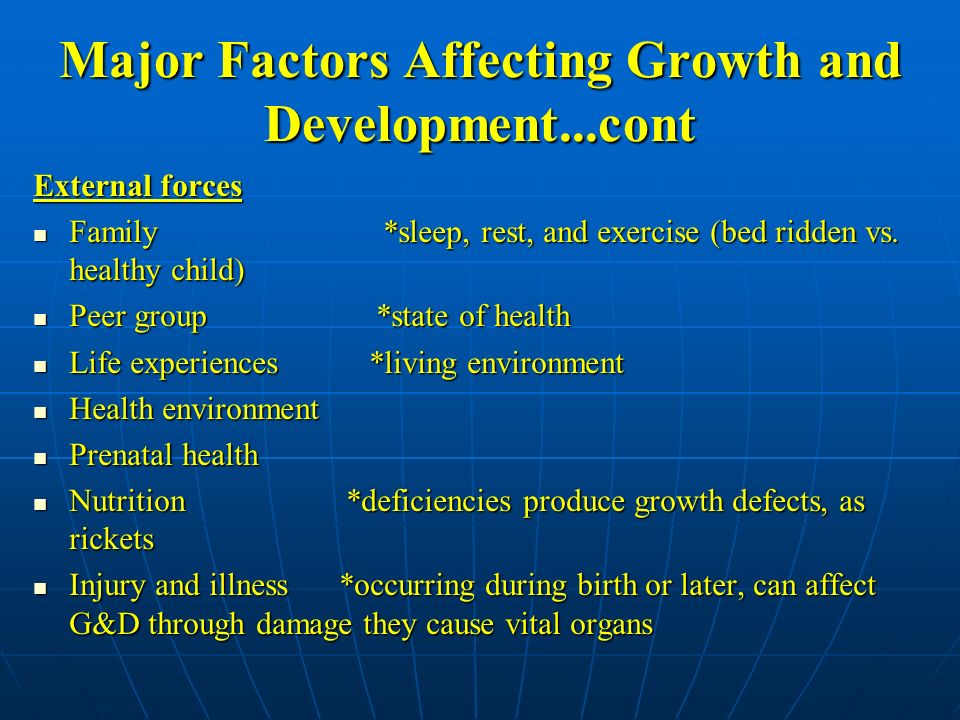
2. EXERCISE:
Physical exercises assist in making the cells of the body absorb and utilize food substances from the blood. Rest periods are periods when much energy is available to the body for growth. A human being is supposed to rest for 6-8 hrs in sleep.

EVALUATION:
What are the developments observed in a body?
How does food affect growth?
For how long do we need to rest?
ASSIGNMENT:
How can a child with retarded growth be assisted?
practice test
http://www.quiz.biz/quizz-168762.html
http://quizlet.com/10033568/test/
LESSON 33
TOPIC: FACTORS THAT AFFECT GROWTH (CONTD)
OBJECTIVE: At the end of the lesson, the students should be able to:
1. Mention two hormones that control growth.
2. Give examples of diseases that impair growth.
CONTENT:
3. HORMONES:
Hormones are substances which are required in small quantities by the body to ensure its proper growth and functioning. Two of these substances are directly connected with growth. The pituitary gland, the more it is in the blood of a person, the more the growth is enhanced. The under secretion of the gland results in a very short person.
The second gland is the thyroid gland which secretes thyroxin. Normal secretion of the hormone results in the person growing proportionally, under secretion of the hormone results in the person becoming short.
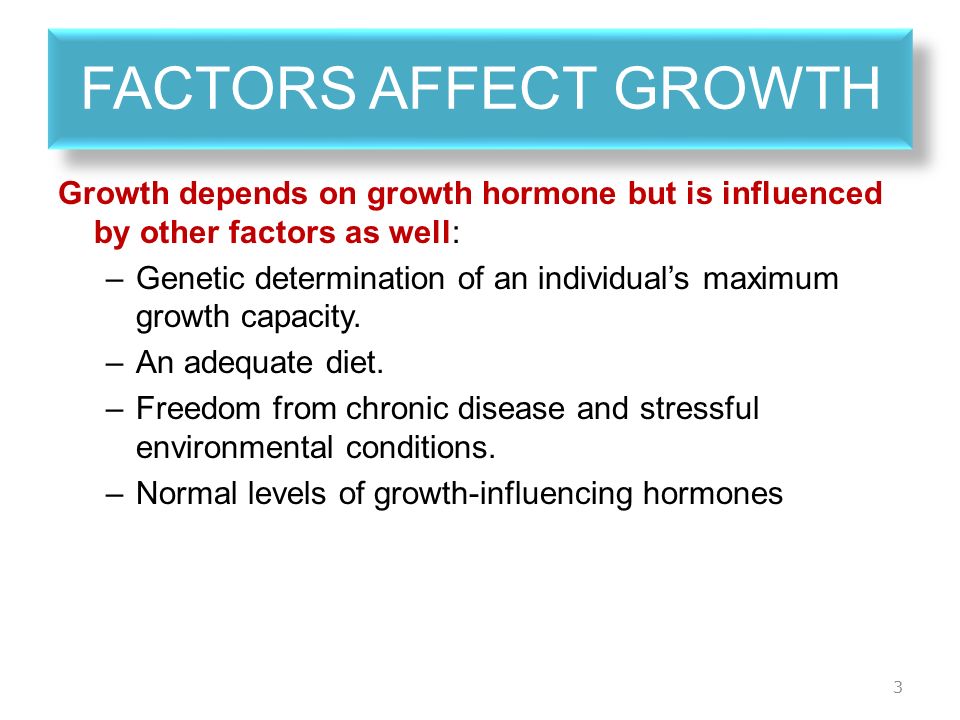
4. DISEASES:
Certain diseases may cause loss of weight, loss of appetite and loss of body fluid. If such diseases persist over a long period, the victim's growth is impaired. Examples of such diseases are measles, tuberculosis, onchocercasis, malaria fever.

5. Other factors that can affect growth are love and care, health care.
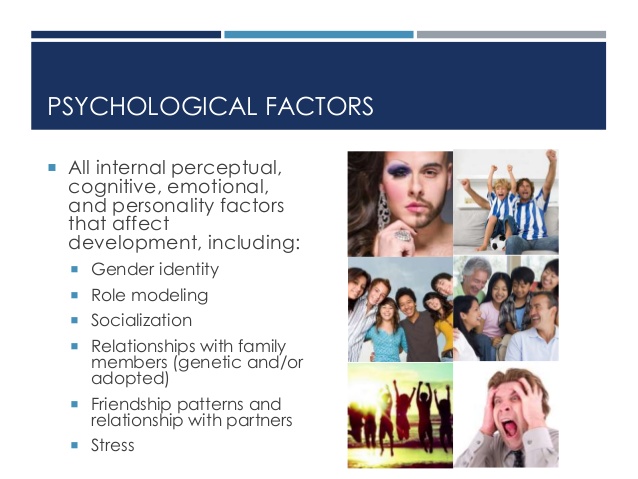
EVALUATION:
What are the two hormones that control growth?
What are the examples of diseases that impair growth?
ASSIGNMENT:
Outline the uses of protein and vitamins to the body.
further studies
http://www.livestrong.com/article/12717 ... an-growth/
https://docs.google.com/presentation/d/ ... sp=sharing
LESSON 34
TOPIC: LIVING THINGS HABITAT
Contents: I. Meaning of habitat
II. Examples of habitat
III. Adaptation of Living things to their Habitat
Meaning of habitat.
The kind of place or environment where an organism normally lives is called its habitat. Specifically, it means the home where an organism (plant or animal) inhabits. The Biologists who study habitats are called Ecologists. Ecology is the study of communities in relation to their environment. There are many kinds of habitats. The school compound is a habitat, a pond is a habitat and the tropical rain forest of Africa is a habitat.

TYPES OF HABITAT
There are basically two types of habitat. They are (i) Aquatic habitat and (ii) Terrestrial habitat.
1. Aquatic (Water) Habitat: This habitat refers to water environment. Organisms found in this habitat are called aquatic organisms. There are three types of aquatic habitat: a. Fresh water habitat and b. Marine habitat and Estuarine habitat.
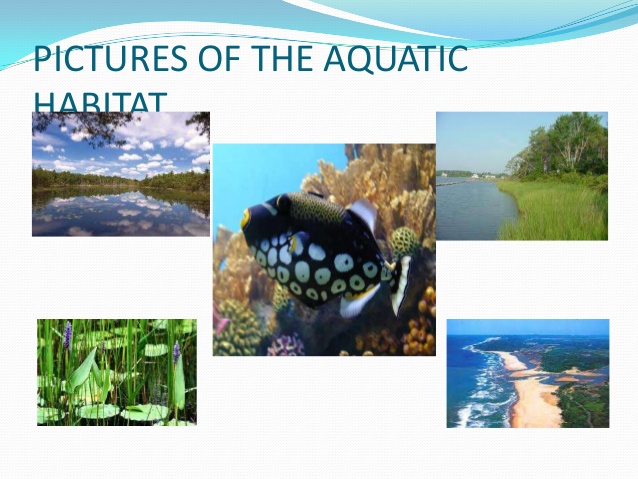
a. Fresh water Habitat: These are made of ponds, streams, rivers and lakes. Examples of animals that live here are tilapia fish, crabs, frogs, crocodile etc.
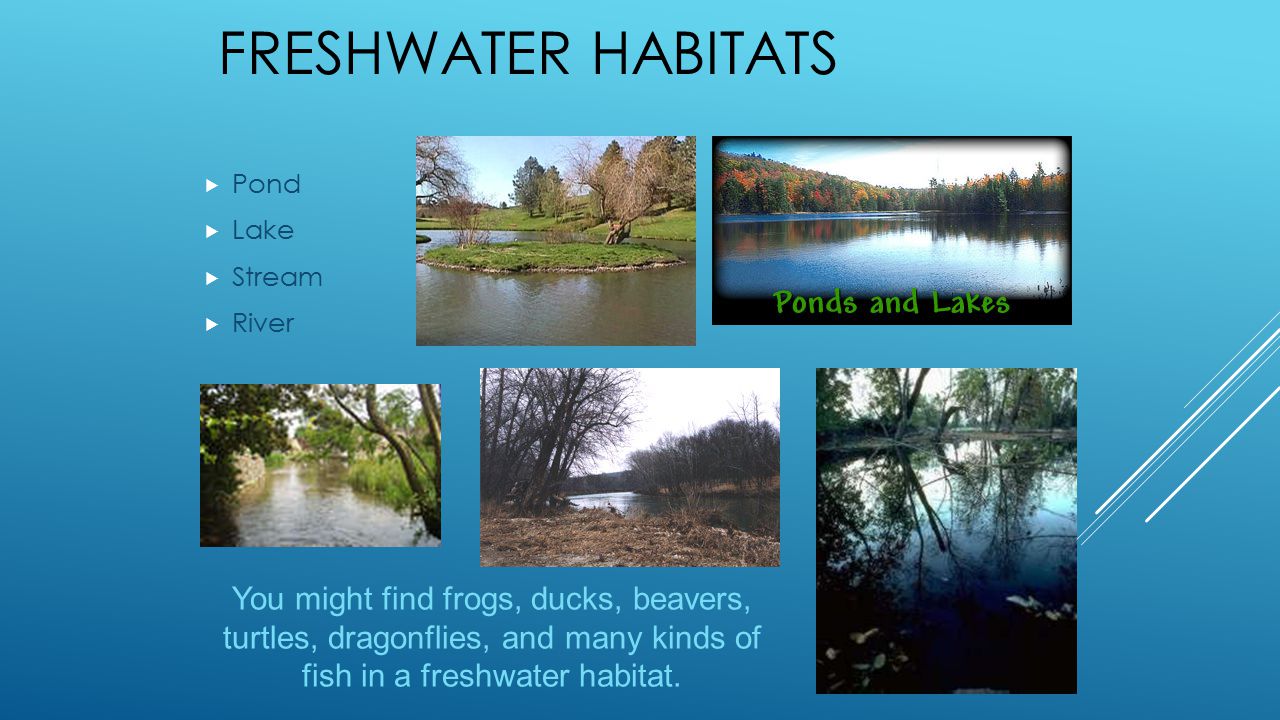
b. Marine Habitat: These are made of oceans, and seas. Examples of animals in this habitat are whales, octopus, dolphins, weeds etc.

c. Estuarine Habitat: This refers to the river mouths where salt and fresh water meet. Examples are such areas as bays and lagoons. The organisms found here are periwinkles and lobsters
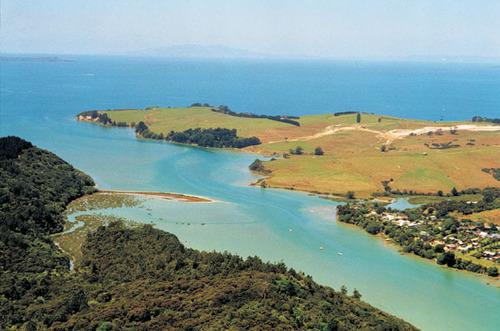
2. Terrestrial (Land) Habitat: This habitat refers to land environment. Living organisms found living in terrestrial habitat include human beings, domestic animals, wild animals and plants. Examples of habitats here are:
a. Ground habitat: This may be of different kinds eg forest habitat, savannah habitat and desert habitat.
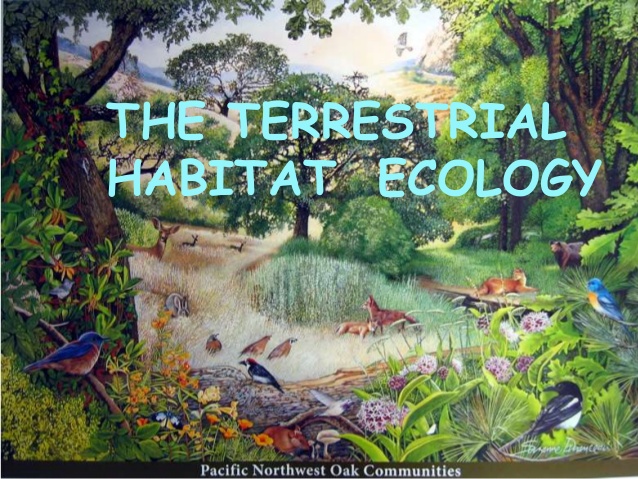
Desert Habitat

Forest Habitat
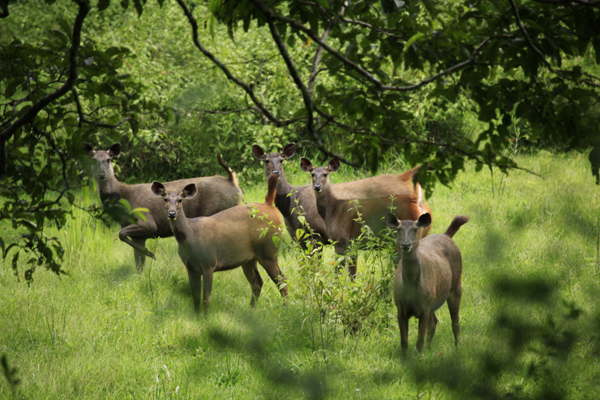
Savannah Habitat

b. Underground habitat: The organisms living under the ground are earthworms
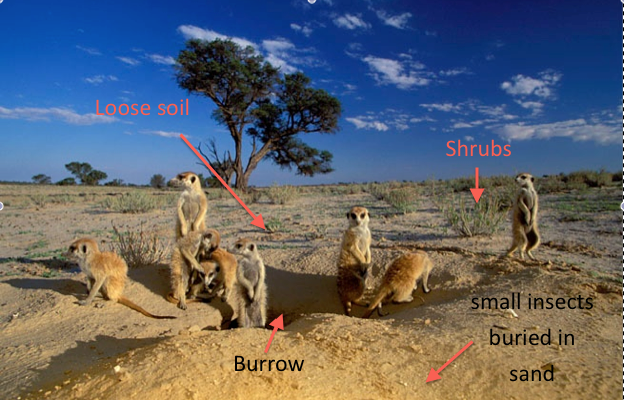
c. Arboreal /Air habitat (in or on trees): Monkeys, birds and ants are arboreal.
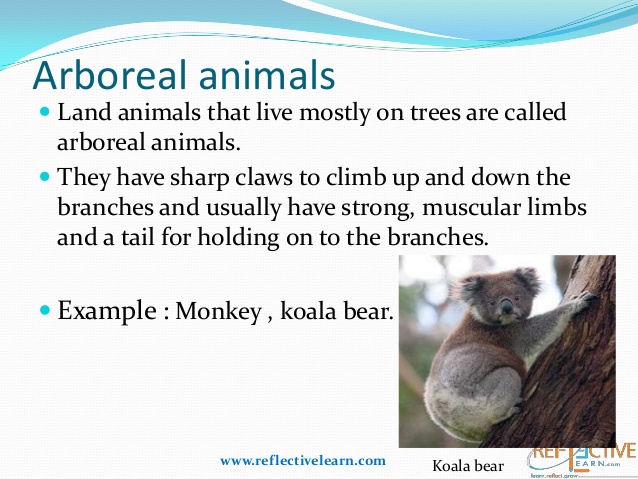
EVALUATION
1. Mention the basic types of habitat we have
2. State the types of (i) aquatic habitat and (ii) terrestrial habitat we have
3. Mention two examples each of organisms found in (i) marine habitat (ii) underground habitat (iii) arboreal habitat and (iv) fresh water habitat
LESSON 35
Adaptation of Organisms to their Habitat
Adaptation means special features that help an organism to live and survive in a particular
habitat is called adaptation. Every living thing on earth belongs to one habitat or the other because it is always interacting with some biotic and abiotic components such as energy, water, air (oxygen), food, carbon dioxide and suitable living conditions. For example, there are certain species of plants and animals that can survive only in rain forest habitat and not in the desert and vice versa.

Characteristics of Organisms found on Land
1. They have limbs that enable them to move on land
2. They possess lung that help them to breathe on land
3. Birds are covered with feathers which protect them to adapt themselves to live on land
4. Mammals have lots of hair called fur which protect them from harsh weather conditions
5. Some terrestrial plants have succulent leaves with oily surface which help them to store water for later use
6. Desert plants have needle-like leaves which help reduce the rate of water loss
7. Many terrestrial plants have tap roots while some have climbing stem to get to the top of tall trees in order to get sunlight.
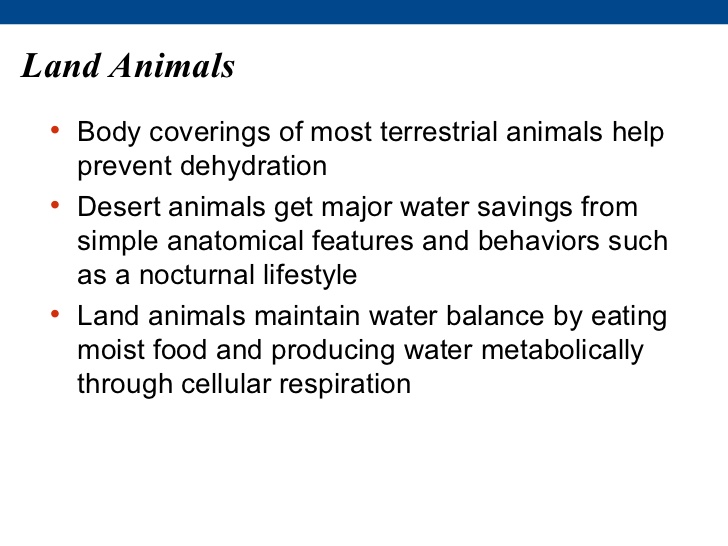
Characteristics of Organisms found in Water
1. Frogs and other amphibian have strong webbed legs which enable them to move in water
2. Fishes have fins and streamlines bodies tom swim very easily in water
3. Fishes have gills with which they breathe inside water
4. Some water plants have short roots and large flat leaves with large air-space that enable them to float inside water and absorb oxygen
5. Fishes also have air sac called swim bladder which helps them to maintain balance in water
6. Snails develop their type of leg so that they can crawl on the bottom of ponds and on plants
7. Fishes possess tails for swimming and balancing

EVALUATION
1. What do you understand by adaptation?
2. Mention five biotic and abiotic components you know
3. State three features that enable fish to live successfully in water.
4. Mention two characteristics of terrestrial plants.
READING ASSIGNMENT
Read ‘Uniqueness of Man’ from Nigerian Basic Science Project textbook two, page 21
ASSIGNMENT
1, State two features of animals that live both in water and on land
2. State three differences between animals that live (i) on land and (ii) in water
TOPIC: HUMAN GROWTH AND DEVELOPMENT (1)
OBJECTIVE: At the end of the lesson, the students should be able to:
1. Define growth.
2. Define development.
3. Mention the two periods of rapid growth.
CONTENT:
Growth is defined as the increase in size of an organism due to increase in the number of cells. Growth is a process in human beings that takes place from birth until they attain maturity. In growth, the body by itself makes its own new flesh to add to the existing one. Growth may be measured by increase in height or weight. Growth occurs mostly at night when we are asleep. Growth changes is the noticeable change in the body size over time.
Development is a series of orderly changes by which a living thing comes into maturity. These changes are different from growth. Development leads to transition from one stage of life to another, these stages are characterized by certain features. For example, infancy to childhood, adolescence to adulthood.

There are two periods of rapid growth. During this period, there is a remarkable change in the size and height of human beings.
These periods are:
1. From birth to two years.

2. From nine to sixteen years. (puberty stage).

EVALUATION:
What is growth?
What is development?
What are the two periods of rapid growth?
ASSIGNMENT:
List three growth changes in living things.
further studies
http://www.livestrong.com/article/28625 ... -children/
http://www.livestrong.com/article/10364 ... ges-human/
LESSON 32
TOPIC: INFANCY TO ADULTHOOD
OBJECTIVE: At the end of the lesson, the students should be able to:
1. Mention one development observed in the body.
2. Describe how food affects growth.
3. State how long we need to rest.
CONTENT:
Stages of Growth &Development
Baby:
Increase in height and muscle
Ability to sit, walk, run and appearance of teeth.

Childhood (from birth to puberty):
Increase in height and mass
Development of manual skills, playing football etc.

Adolescence: this is the stage before adulthood.
Increase in height and mass.
Development of:
Boys: thick muscles, deep voice, pubic hair, facial hair. Ability to produce sperm.
Girls: rounded face, increased buttocks, pubic hair, thick thighs, ability to produce eggs.


Adulthood: this is the stage of full maturity.
Growth stops
Changes in the body continue, organs begin to weaken.

FACTORS THAT AFFECT GROWTH
The growth of a human being is determined by certain factors which are:
1. FOOD/NUTRITION:
Food nutrients are very essential for the proper growth of the body. All the classes of food are present in a balanced diet and must be eaten at all times for growth to be continuous. Absence or lack of each class of food will result in deficiency diseases which retard the growth of the body.

2. EXERCISE:
Physical exercises assist in making the cells of the body absorb and utilize food substances from the blood. Rest periods are periods when much energy is available to the body for growth. A human being is supposed to rest for 6-8 hrs in sleep.

EVALUATION:
What are the developments observed in a body?
How does food affect growth?
For how long do we need to rest?
ASSIGNMENT:
How can a child with retarded growth be assisted?
practice test
http://www.quiz.biz/quizz-168762.html
http://quizlet.com/10033568/test/
LESSON 33
TOPIC: FACTORS THAT AFFECT GROWTH (CONTD)
OBJECTIVE: At the end of the lesson, the students should be able to:
1. Mention two hormones that control growth.
2. Give examples of diseases that impair growth.
CONTENT:
3. HORMONES:
Hormones are substances which are required in small quantities by the body to ensure its proper growth and functioning. Two of these substances are directly connected with growth. The pituitary gland, the more it is in the blood of a person, the more the growth is enhanced. The under secretion of the gland results in a very short person.
The second gland is the thyroid gland which secretes thyroxin. Normal secretion of the hormone results in the person growing proportionally, under secretion of the hormone results in the person becoming short.

4. DISEASES:
Certain diseases may cause loss of weight, loss of appetite and loss of body fluid. If such diseases persist over a long period, the victim's growth is impaired. Examples of such diseases are measles, tuberculosis, onchocercasis, malaria fever.

5. Other factors that can affect growth are love and care, health care.

EVALUATION:
What are the two hormones that control growth?
What are the examples of diseases that impair growth?
ASSIGNMENT:
Outline the uses of protein and vitamins to the body.
further studies
http://www.livestrong.com/article/12717 ... an-growth/
https://docs.google.com/presentation/d/ ... sp=sharing
LESSON 34
TOPIC: LIVING THINGS HABITAT
Contents: I. Meaning of habitat
II. Examples of habitat
III. Adaptation of Living things to their Habitat
Meaning of habitat.
The kind of place or environment where an organism normally lives is called its habitat. Specifically, it means the home where an organism (plant or animal) inhabits. The Biologists who study habitats are called Ecologists. Ecology is the study of communities in relation to their environment. There are many kinds of habitats. The school compound is a habitat, a pond is a habitat and the tropical rain forest of Africa is a habitat.

TYPES OF HABITAT
There are basically two types of habitat. They are (i) Aquatic habitat and (ii) Terrestrial habitat.
1. Aquatic (Water) Habitat: This habitat refers to water environment. Organisms found in this habitat are called aquatic organisms. There are three types of aquatic habitat: a. Fresh water habitat and b. Marine habitat and Estuarine habitat.

a. Fresh water Habitat: These are made of ponds, streams, rivers and lakes. Examples of animals that live here are tilapia fish, crabs, frogs, crocodile etc.

b. Marine Habitat: These are made of oceans, and seas. Examples of animals in this habitat are whales, octopus, dolphins, weeds etc.

c. Estuarine Habitat: This refers to the river mouths where salt and fresh water meet. Examples are such areas as bays and lagoons. The organisms found here are periwinkles and lobsters

2. Terrestrial (Land) Habitat: This habitat refers to land environment. Living organisms found living in terrestrial habitat include human beings, domestic animals, wild animals and plants. Examples of habitats here are:
a. Ground habitat: This may be of different kinds eg forest habitat, savannah habitat and desert habitat.

Desert Habitat

Forest Habitat

Savannah Habitat

b. Underground habitat: The organisms living under the ground are earthworms

c. Arboreal /Air habitat (in or on trees): Monkeys, birds and ants are arboreal.

EVALUATION
1. Mention the basic types of habitat we have
2. State the types of (i) aquatic habitat and (ii) terrestrial habitat we have
3. Mention two examples each of organisms found in (i) marine habitat (ii) underground habitat (iii) arboreal habitat and (iv) fresh water habitat
LESSON 35
Adaptation of Organisms to their Habitat
Adaptation means special features that help an organism to live and survive in a particular
habitat is called adaptation. Every living thing on earth belongs to one habitat or the other because it is always interacting with some biotic and abiotic components such as energy, water, air (oxygen), food, carbon dioxide and suitable living conditions. For example, there are certain species of plants and animals that can survive only in rain forest habitat and not in the desert and vice versa.

Characteristics of Organisms found on Land
1. They have limbs that enable them to move on land
2. They possess lung that help them to breathe on land
3. Birds are covered with feathers which protect them to adapt themselves to live on land
4. Mammals have lots of hair called fur which protect them from harsh weather conditions
5. Some terrestrial plants have succulent leaves with oily surface which help them to store water for later use
6. Desert plants have needle-like leaves which help reduce the rate of water loss
7. Many terrestrial plants have tap roots while some have climbing stem to get to the top of tall trees in order to get sunlight.

Characteristics of Organisms found in Water
1. Frogs and other amphibian have strong webbed legs which enable them to move in water
2. Fishes have fins and streamlines bodies tom swim very easily in water
3. Fishes have gills with which they breathe inside water
4. Some water plants have short roots and large flat leaves with large air-space that enable them to float inside water and absorb oxygen
5. Fishes also have air sac called swim bladder which helps them to maintain balance in water
6. Snails develop their type of leg so that they can crawl on the bottom of ponds and on plants
7. Fishes possess tails for swimming and balancing

EVALUATION
1. What do you understand by adaptation?
2. Mention five biotic and abiotic components you know
3. State three features that enable fish to live successfully in water.
4. Mention two characteristics of terrestrial plants.
READING ASSIGNMENT
Read ‘Uniqueness of Man’ from Nigerian Basic Science Project textbook two, page 21
ASSIGNMENT
1, State two features of animals that live both in water and on land
2. State three differences between animals that live (i) on land and (ii) in water
WEEK 9
LESSON 36
TOPIC: HUMAN GROWTH AND DEVELOPMENT (2)
OBJECTIVE: At the end of the lesson, the students should be able to:
1. Define puberty.
2. Mention signs of puberty in boys.
3. Enumerate signs of puberty in girls.
4. Mention cleanliness to observe during puberty.
CONTENT:
Handling puberty changes in boys and girls:
Puberty is the short span of time which marks the beginning of sexual maturation.

SIGNS OF PUBERTY IN BOYS
1. Hairs begin to grow on different parts of the body such as the armpit, pubic region etc.
2. Voice breaks and becomes deeper.
3. There is change in general body appearance as muscles develop.
4. Sex organs develop.
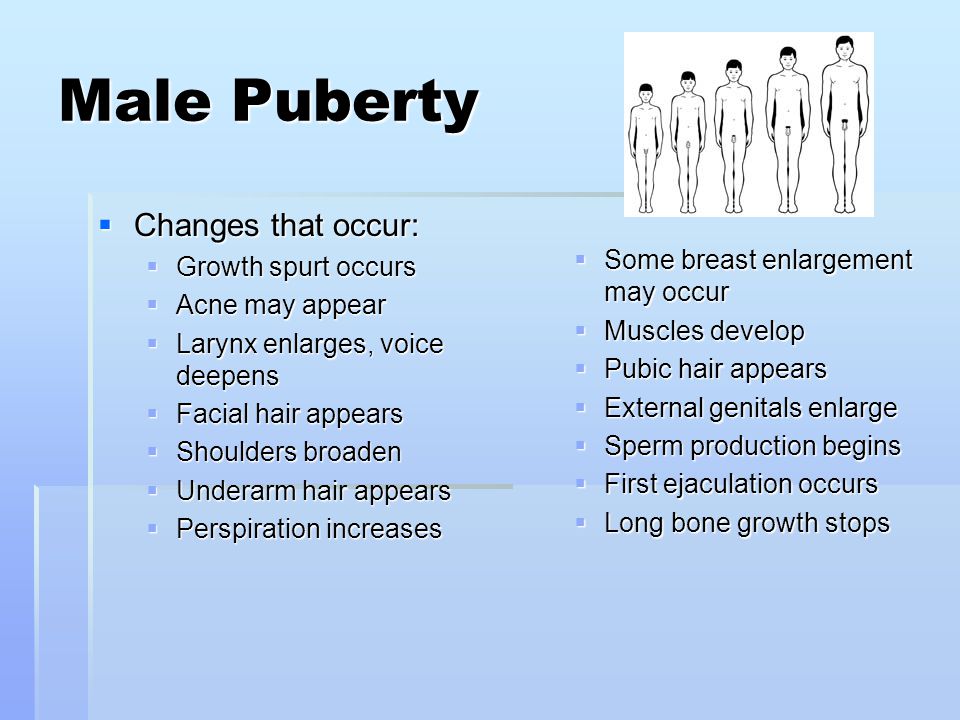
SIGNS OF PUBERTY IN GIRLS
1. The breasts develop.
2. The body changes.
3. Hair grows on her armpits and pubic region.
4. Menstruation starts.

CLEANLINESS DURING PUBERTY
1. Bathing regularly especially during the menstrual period and after exercises.
2. Observing good menstrual hygiene practices.
3. Wearing clean clothes.
4. Changing your underwear every day.
5. Using good perfumes and deodorants sparingly. Avoid heavy perfume.
EVALUATION:
What is puberty?
What are the signs of puberty in boys?
What are the signs of puberty in girls?
What are the cleanliness to be observed during puberty?
ASSIGNMENT:
State four ways of preventing body odour.
further studies
http://kidshealth.org/kid/grow/body_stuff/puberty.html
http://www.likeitis.org/puberty_print.html
http://www.cyh.com/HealthTopics/HealthT ... 89&id=1774
http://www.avert.org/puberty-boys.htm
http://www.netdoctor.co.uk/womenshealth ... ewoman.htm
practice test
http://www.quibblo.com/quiz/fljMtjI/Gir ... berty-quiz
http://www.proprofs.com/quiz-school/sto ... girls-both
http://m.always.com/Quizz.aspx?ItemID=QUZ57&emvcc=-1
LESSON 37
TOPIC: EMOTIONAL DEVELOPMENT
OBJECTIVE: At the end of the lesson, the students should be able to:
1. Mention some emotional development.
2. Enumerate the causes of isolation.
3. Describe peer pressure.

CONTENT:
At puberty, many youngsters develop emotionally. Their feelings begin to change. Some of these emotional developments are:
1. Fear of Isolation:
These young boys and girls would want to measure up to the standard of their peers. They would want to be accepted into the circle of their friendship. And so, some may experience the fear of isolation from their friend's circle.
2. Stigmatization:
This is the fear of being rejected by friends and peers as a result of not being able to measure up to their standard.
3. Peer Pressure:
This is the influence of peers on the adolescents. They can be easily convinced by their peers on certain issues and beliefs.
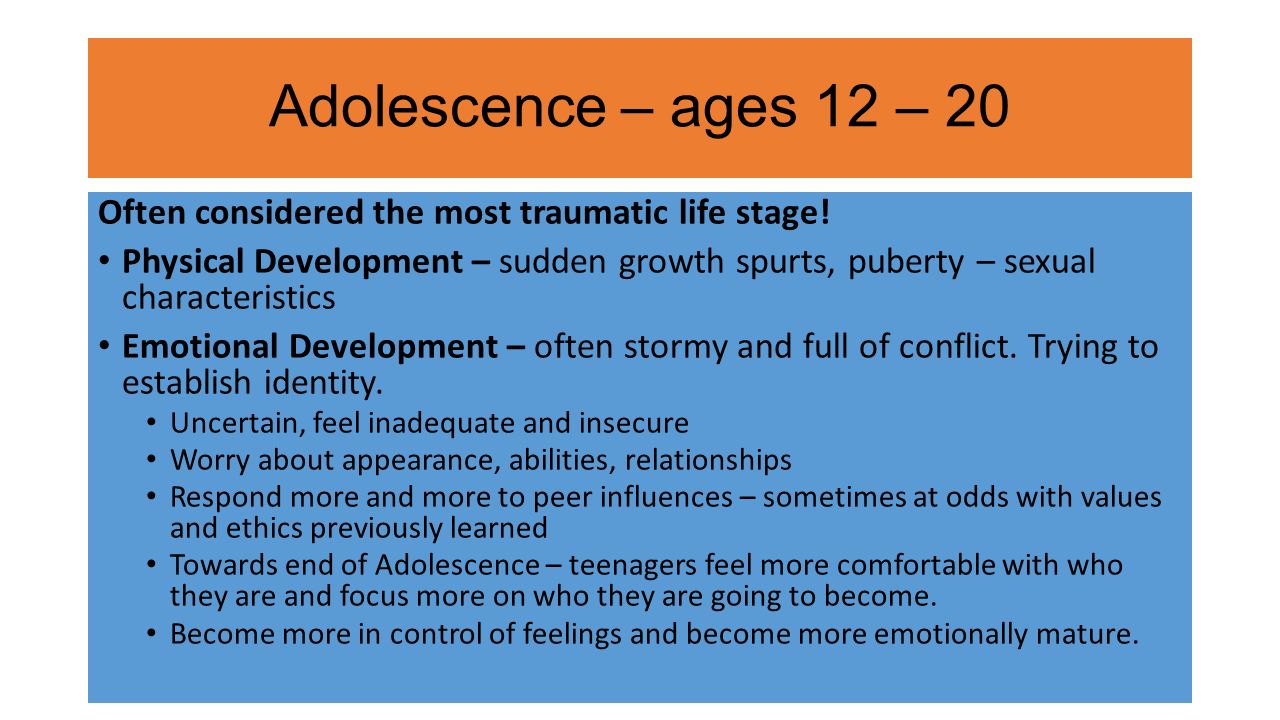
EVALUATION:
What is emotional development?
What is the cause of isolation?
What is peer pressure?
ASSIGNMENT
Enumerate five ways in which an adolescent can be influenced negatively.
further studies
http://social.jrank.org/pages/226/Emoti ... cence.html
LESSON 38
TOPIC: UNIQUENESS OF MAN
Contents: I. Human Beings as Animals
II. Man as Primate
III. Man as a Higher Animal
Human beings as Animals
Human beings are a special kind of animal. They belong to a special group of animals called mammals. As mammals, they are different from other animals because they possess the following characteristics:
a. They give birth to young ones alive
b. They possess hair or fur on every part of their body or certain part of the body
c. They breast-feed their young ones with milk from the mammary glands e.g cow, sheep, cat, man etc.
Man as a Primate
Human beings belong to a sub-group of mammals called primates. Primate is a member of an order of mammals with a large brain and complex hands and feet. All primates are mammals but not all mammals are primates. Among the primates are man, gorilla, chimpanzee and monkeys.
Gorilla

Chimpanzee
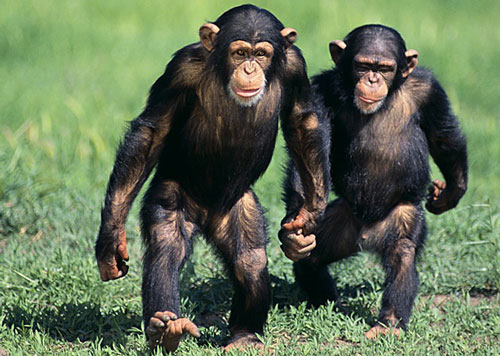
Rhesus monkey

Man
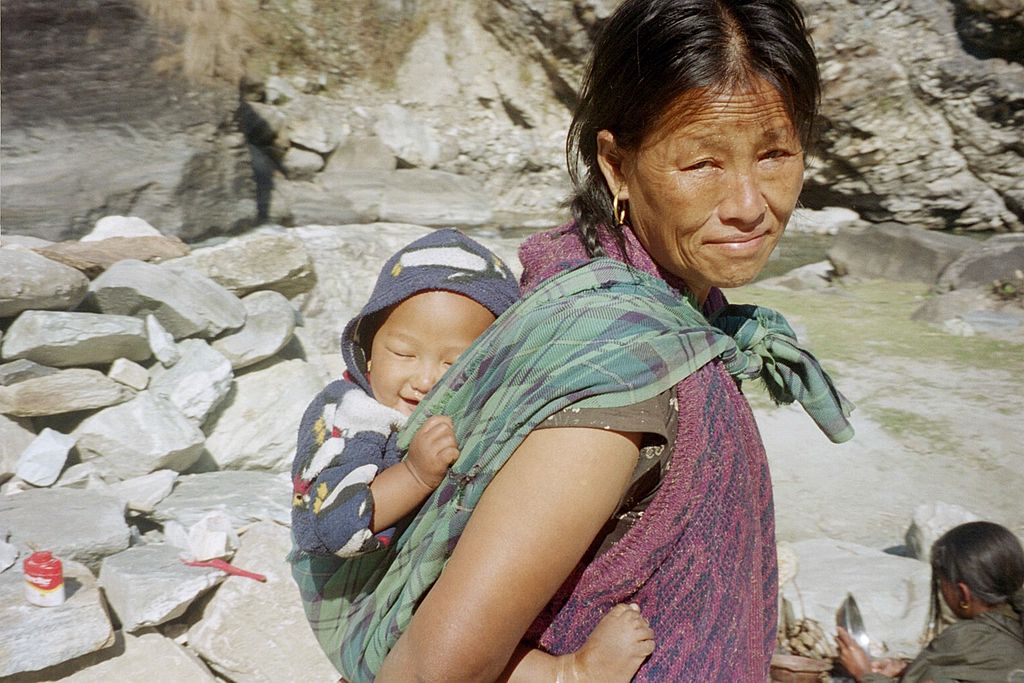
They have the following characteristics as primates:
a. They grasp things with their hands
b. They can stand and walk upright
c. They possess nails on their hands and feet
d. They have no claws
e. They have eyes in front of their heads and not at the sides
f. They have opposable thumb, which they use together with the fore finger to pick things up.
Man as a Higher Animal
Man is different from other primates by possessing the following characteristics:
a. Man possess 5-curve shaped backbone, this helps him to balance in an upright position
b. He moves about in an upright position and walk on two legs always making the hands free to do some other work
c. He possesses the largest skull which contains the brain. Human brain is made of fore-brain, midbrain and hindbrain.
d. Man possesses the largest brain among animals which enables him to think, plan and solve problems better than any other animals.
e. The brain is highly develops and controls human thinking and speech.
f. Man can use his hands to handle tools
NB: The human brain and human body both make man a special primate

EVALUATION
1. What do you understand by primate?
2. State three examples of primates
3. Mention four characteristics of primate
4. Human being belongs to a special group of animals called….
5. State two features of mammals
6. Mention two features of man that make him different from other primate
7. Which part of human brain is the centre of (a) intelligence, memory, speed, voluntary actions and smell (ii) control of eye, muscle and posture (iii) muscular activities and body functions?
READING ASSIGNMENT
Students are to read about ‘Changes in Matter’ from the Nigerian Basic Science Project textbook two pages 26-28.
ASSIGNMENT
1. State briefly the difference between man and other primate
2. List three major characteristics of mammals.
TOPIC: HUMAN GROWTH AND DEVELOPMENT (2)
OBJECTIVE: At the end of the lesson, the students should be able to:
1. Define puberty.
2. Mention signs of puberty in boys.
3. Enumerate signs of puberty in girls.
4. Mention cleanliness to observe during puberty.
CONTENT:
Handling puberty changes in boys and girls:
Puberty is the short span of time which marks the beginning of sexual maturation.

SIGNS OF PUBERTY IN BOYS
1. Hairs begin to grow on different parts of the body such as the armpit, pubic region etc.
2. Voice breaks and becomes deeper.
3. There is change in general body appearance as muscles develop.
4. Sex organs develop.

SIGNS OF PUBERTY IN GIRLS
1. The breasts develop.
2. The body changes.
3. Hair grows on her armpits and pubic region.
4. Menstruation starts.

CLEANLINESS DURING PUBERTY
1. Bathing regularly especially during the menstrual period and after exercises.
2. Observing good menstrual hygiene practices.
3. Wearing clean clothes.
4. Changing your underwear every day.
5. Using good perfumes and deodorants sparingly. Avoid heavy perfume.
EVALUATION:
What is puberty?
What are the signs of puberty in boys?
What are the signs of puberty in girls?
What are the cleanliness to be observed during puberty?
ASSIGNMENT:
State four ways of preventing body odour.
further studies
http://kidshealth.org/kid/grow/body_stuff/puberty.html
http://www.likeitis.org/puberty_print.html
http://www.cyh.com/HealthTopics/HealthT ... 89&id=1774
http://www.avert.org/puberty-boys.htm
http://www.netdoctor.co.uk/womenshealth ... ewoman.htm
practice test
http://www.quibblo.com/quiz/fljMtjI/Gir ... berty-quiz
http://www.proprofs.com/quiz-school/sto ... girls-both
http://m.always.com/Quizz.aspx?ItemID=QUZ57&emvcc=-1
LESSON 37
TOPIC: EMOTIONAL DEVELOPMENT
OBJECTIVE: At the end of the lesson, the students should be able to:
1. Mention some emotional development.
2. Enumerate the causes of isolation.
3. Describe peer pressure.

CONTENT:
At puberty, many youngsters develop emotionally. Their feelings begin to change. Some of these emotional developments are:
1. Fear of Isolation:
These young boys and girls would want to measure up to the standard of their peers. They would want to be accepted into the circle of their friendship. And so, some may experience the fear of isolation from their friend's circle.
2. Stigmatization:
This is the fear of being rejected by friends and peers as a result of not being able to measure up to their standard.
3. Peer Pressure:
This is the influence of peers on the adolescents. They can be easily convinced by their peers on certain issues and beliefs.

EVALUATION:
What is emotional development?
What is the cause of isolation?
What is peer pressure?
ASSIGNMENT
Enumerate five ways in which an adolescent can be influenced negatively.
further studies
http://social.jrank.org/pages/226/Emoti ... cence.html
LESSON 38
TOPIC: UNIQUENESS OF MAN
Contents: I. Human Beings as Animals
II. Man as Primate
III. Man as a Higher Animal
Human beings as Animals
Human beings are a special kind of animal. They belong to a special group of animals called mammals. As mammals, they are different from other animals because they possess the following characteristics:
a. They give birth to young ones alive
b. They possess hair or fur on every part of their body or certain part of the body
c. They breast-feed their young ones with milk from the mammary glands e.g cow, sheep, cat, man etc.
Man as a Primate
Human beings belong to a sub-group of mammals called primates. Primate is a member of an order of mammals with a large brain and complex hands and feet. All primates are mammals but not all mammals are primates. Among the primates are man, gorilla, chimpanzee and monkeys.
Gorilla

Chimpanzee

Rhesus monkey

Man

They have the following characteristics as primates:
a. They grasp things with their hands
b. They can stand and walk upright
c. They possess nails on their hands and feet
d. They have no claws
e. They have eyes in front of their heads and not at the sides
f. They have opposable thumb, which they use together with the fore finger to pick things up.
Man as a Higher Animal
Man is different from other primates by possessing the following characteristics:
a. Man possess 5-curve shaped backbone, this helps him to balance in an upright position
b. He moves about in an upright position and walk on two legs always making the hands free to do some other work
c. He possesses the largest skull which contains the brain. Human brain is made of fore-brain, midbrain and hindbrain.
d. Man possesses the largest brain among animals which enables him to think, plan and solve problems better than any other animals.
e. The brain is highly develops and controls human thinking and speech.
f. Man can use his hands to handle tools
NB: The human brain and human body both make man a special primate

EVALUATION
1. What do you understand by primate?
2. State three examples of primates
3. Mention four characteristics of primate
4. Human being belongs to a special group of animals called….
5. State two features of mammals
6. Mention two features of man that make him different from other primate
7. Which part of human brain is the centre of (a) intelligence, memory, speed, voluntary actions and smell (ii) control of eye, muscle and posture (iii) muscular activities and body functions?
READING ASSIGNMENT
Students are to read about ‘Changes in Matter’ from the Nigerian Basic Science Project textbook two pages 26-28.
ASSIGNMENT
1. State briefly the difference between man and other primate
2. List three major characteristics of mammals.